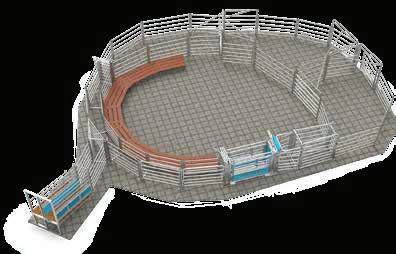Fieldays ready to feed farmers’ souls



the government to show greater fiscal discipline.
FEDERATED Farmers wants the next government to rollback multiple policies introduced by the last two administrations.
Firing its opening salvo ahead of October’s election, the federation’s 12 policy priorities for the next government include a review of methane targets, forestry rules in the Emissions Trading Scheme (ETS), the net carbon zero target, the scrapping of the ute tax, and replacing policies for freshwater and Significant Natural Areas.
The end result is a long list of highly prescriptive and unworkable rules that just slow us down, heap on costs and, for many, suck the joy out of farming.
 Wayne Langford Federated Farmers
Wayne Langford Federated Farmers
Other measures sought include more support for technology and water storage, allowing young farmers to access their KiwiSaver, devolving more decision-making to local communities, improving the Resource Management Act, building farmer workforce and for
Most policy priorities are accompanied by the results of a public opinion poll.
Those polls show majority support for measures such as using genetically modified grass, and water storage for irrigation, opposition to a farm emissions levy and limits to forestry offsetting.
Acting Feds president Wayne Langford said despite creating hundreds of thousands of jobs and generating $41 billion in exports, production from the dairy and drystock sector is stagnating and farmland is being converted to pine trees.


Succession planning is getting harder as regulation and “obscure policy” create investment barriers.
“For the last five years Kiwi farmers have been living through a period of unprecedented regulatory change with a swathe of new requirements for improving water quality, biodiversity and the climate that have taken a real toll on the wellbeing of our rural communities.”
While the intent of these policies was admirable, he said, the execution and implementation have been “nothing short of disastrous for farmers”.
“The end result is a long list of highly prescriptive and unworkable
Continued page 5

These shaggy Highland cattle drew plenty of attention and added an element of cuteness to the Temuka sale held late last month.
MARKETS 42
Lakeman Brewing co-owner James Cooper, left, celebrates winning the Supreme Beer Award at the 2023 New World Beer & Cider Awards, with head brewer Rory Donovan. Cooper and wife Elissa started the brewery on their Taupō farm.
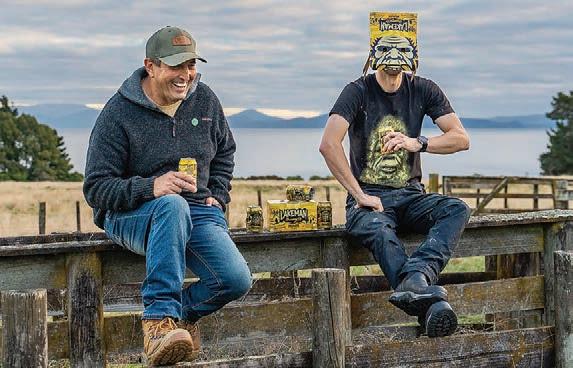
PEOPLE 32
National and ACT claim that HWEN is dead amid growing concerns about delays in the process.
POLITICS 5
The crop damage was bad enough, but now dust and silt are punishing Tairāwhiti contractors.
NEWS 9
A key ingredient in Alzheimer’s medication could come from South Island high-country daffodils.
NEWS 10

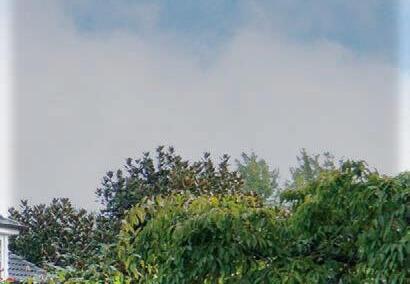



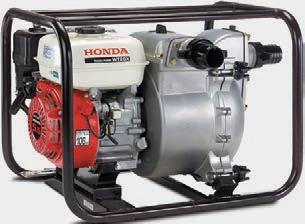
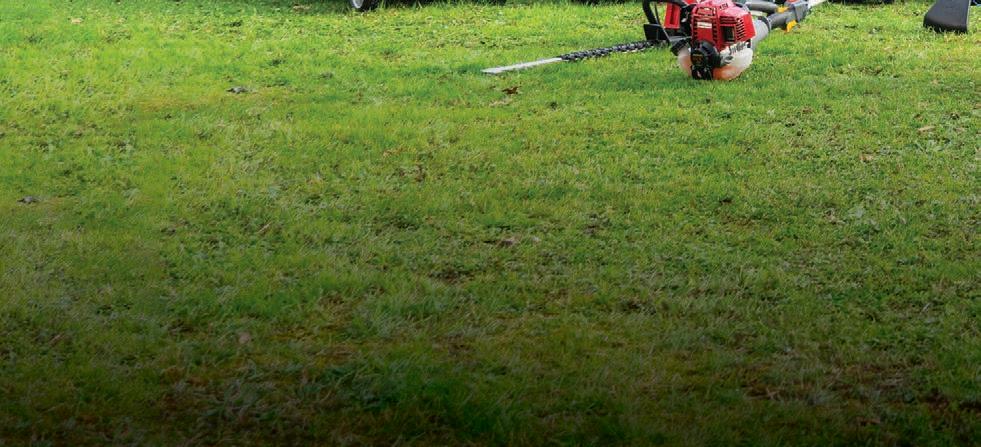
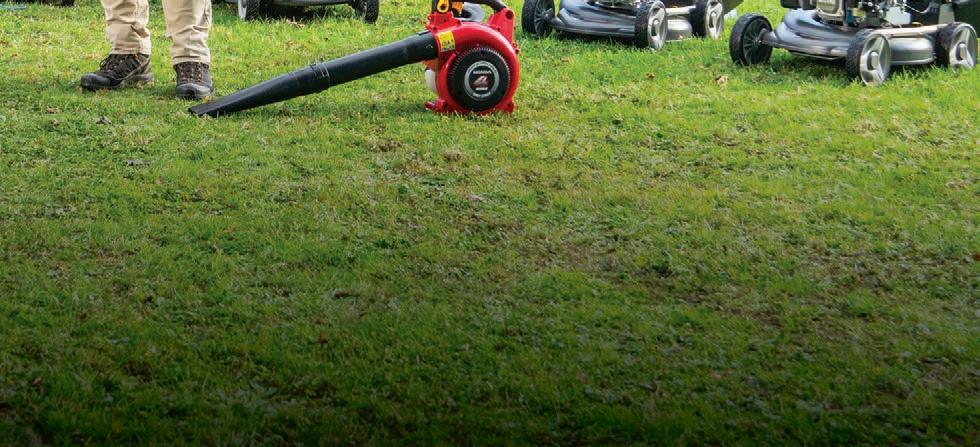




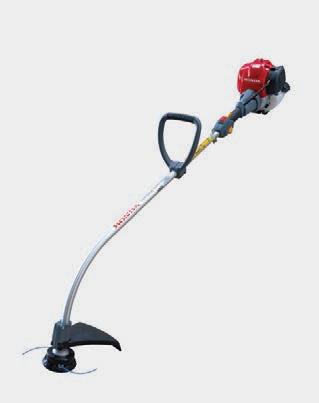



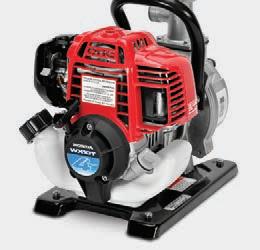


























































































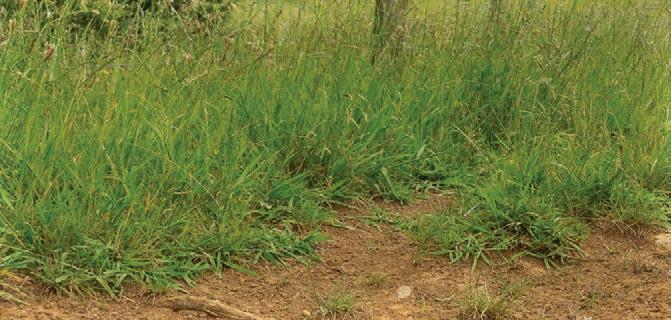


Bryan Gibson | 06 323 1519
Managing Editor
bryan.gibson@agrihq.co.nz
Craig Page | 03 470 2469
Deputy Editor craig.page@agrihq.co.nz
Claire Robertson
Sub-Editor claire.robertson@agrihq.co.nz
Neal Wallace | 03 474 9240
Journalist neal.wallace@agrihq.co.nz
Gerald Piddock | 027 486 8346
Journalist gerald.piddock@agrihq.co.nz

Annette Scott | 021 908 400
Journalist annette.scott@agrihq.co.nz
Hugh Stringleman | 09 432 8594
Journalist hugh.stringleman@agrihq.co.nz
Richard Rennie | 027 475 4256
Journalist richard.rennie@agrihq.co.nz
Nigel Stirling | 021 136 5570
Journalist nigel.g.stirling@gmail.com
PRODUCTION
Lana Kieselbach | 027 739 4295 production@agrihq.co.nz
ADVERTISING MATERIAL
Supply to: adcopy@agrihq.co.nz
SUBSCRIPTIONS
0800 85 25 80 subs@agrihq.co.nz
PRINTER
Printed by Stuff Ltd
Delivered by Reach Media Ltd
Andy Whitson | 027 626 2269 Sales & Marketing Manager andy.whitson@agrihq.co.nz
Steve McLaren | 027 205 1456 Auckland/Northland Partnership Manager steve.mclaren@agrihq.co.nz
Jody Anderson | 027 474 6094 Waikato/Bay of Plenty Partnership Manager jody.anderson@agrihq.co.nz
Palak Arora | 027 474 6095
Lower North Island Partnership Manager palak.arora@agrihq.co.nz
Omid Rafyee | 027 474 6091 South Island Partnership Manager omid.rafyee@agrihq.co.nz
Debbie Brown | 06 323 0765 Marketplace Partnership Manager classifieds@agrihq.co.nz

Grant Marshall | 027 887 5568 Real Estate Partnership Manager realestate@agrihq.co.nz
Andrea Mansfield | 027 602 4925 National Livestock Manager livestock@agrihq.co.nz

Dean and Cushla Williamson
Phone: 027 323 9407 dean.williamson@agrihq.co.nz cushla.williamson@agrihq.co.nz

Farmers Weekly is Published by AgriHQ PO Box 529, Feilding 4740, New Zealand Phone: 0800 85 25 80 Website: www.farmersweekly.co.nz
ISSN 2463-6002 (Print)
ISSN 2463-6010 (Online)
Synlait has announced plans to sell Dairyworks, its domestic cheese products division, to pay down debt.

Investment banking firm Jarden has been retained to advise on the divestment of Dairyworks and Talbot Forest Cheese, a related consumer business unit. Synlait bought Dairyworks in 2019-20 for $112 million and Talbot Forest in 2019 for between $30m and $40m. Production and sale of the Talbot Forest-branded products have continued but the Temuka site has been mothballed.

The Accident Compensation Corporation has started investing in forestry, but said it represents a modest investment at less the 0.1% of its portfolio.
In 2018 ACC bought a Raes Junction farm in West Otago, and entered a forestry right with Crown Forestry, which manages the Crown’s commercial forestry assets. The property is now fully planted in trees. ACC declined to discuss details of other investments saying they were commercially sensitive.
Former Federated Farmers Meat and Wool chair William Beetham has been appointed chair of the Food and Fibre Centre of Vocational Excellence.

Dr Mark Paine stepped down at the organisation’s annual meeting on May 30. Primary ITO sectors and marketing national manager Natalie Bowie was elected to the board and Turi Ngatai MNZM (Ngai Te Rangi/Ngāti Ranginui, Tauranga-Moana) and Sandy Scarrow were re-elected to the FFCoVE board.

On p7 of the June 5 edition of Farmers Weekly, the article “Contractor to pitch in for good in HB” stated that Tristan Strange is moving to Hawke’s Bay. It is in fact Phil Smith who is moving.
or the sector’s viability, or encourage production to shift to less carbon efficient countries.
ACT agriculture spokesperson
TWO key tools for addressing agricultural emissions are being held back by government red tape.
Use of the methane inhibitor Bovaer was approved by 43 countries in the past year, but its New Zealand application has been bogged down in bureaucracy for more than two years, with no release date in sight.
And implementation of He Waka Eke Noa (HWEN), the primary sector agreement to reduce agricultural greenhouse gases, is also stalled – prompting parties to start questioning some of its proposed measures.
Last week Agriculture Minister Damien O’Connor floated the idea of a fertiliser tax, a move many believe indicated HWEN legislation will not be passed before the election.
The National and ACT parties claim HWEN is dead and National has withdrawn its support.
If elected, both parties have said they intend renegotiating the agreement to include several bottom-line conditions.
HWEN programme director Kelly Forster said the agreement is not dead.
“Discussions with ministers are ongoing and sector partners
Continued from page 1
rules that just slow us down, heap on costs and, for many, suck the joy out of farming.”
Langford said some regulation is needed, but it should set minimum standards, not be an ambition. It should be left to individual farmers and the companies they supply to be led by the market and the expectations of their communities, he said.
Technology is considered key
remain committed to working together to find constructive solutions,” she said in a statement.
O’Connor also said HWEN is not dead. The Labour Party has not changed its position, he said, “unlike other parties”.
He pointed out that a majority of farmers support farm-level pricing of emissions rather than being included in the Emissions Trading Scheme (ETS).
“The government remains committed to working with the HWEN partnership to put in place a system that’s practical and effective,” O’Connor said.
While confirming her commitment to HWEN, Beef +
to addressing current and future challenges.
The lobby group seeks fasttracking of new compounds that could reduce methane emissions, support increased investment in precision agriculture, and openness to new technologies such as gene editing.
It also wants the development of a national policy statement on water storage. The group reiterates previous stances calling for methane targets to be reviewed
This season ANZCO Foods is introducing a new online system for requesting calf pick-ups. The online system replaces all existing ways farmers have previously used to arrange calf pick-ups, so if you’re supplying calves to ANZCO you’ll need to use this system. You’ll be able to request pick-ups via the ANZCO Livestock App (available on Android and iOS) or via ANZCO’s Producer website: producerportal.anzcofoods.com

To find out more get in touch with your livestock rep.

Lamb NZ chair Kate Acland said the organisation “fundamentally believes the current methane targets are too high and do not reflect the latest science when it comes to methane’s warming impact on the planet”.

Acland said farmers need robust emissions reporting and measuring, and no price should be imposed until issues with sequestration have been addressed and viable mitigations are available.
“We will not agree to an outcome that disproportionately impacts our sheep and beef farmers.”
The chances of the agreement becoming law before the election
and the ETS amended to limit the use of forestry offsetting.
Feds also wants utility vehicles exempted from the ute tax. When combined with the clean car standard fee, the maximum price of a ute has actually increased $12,000, it said. Communities should be trusted to make decision about local issues.
“The last 10 years has seen a significant shift in responsibility and accountability away from local communities towards unelected
are slim and even less so should there be a change in government at October’s general election.
O’Connor said the key milestones for pricing agricultural emissions have always been beyond the election, but he warned that if a pricing process cannot be agreed before January 1 2025, farming will enter the ETS.
National Party leader Christopher Luxon told media last week that forecasts that potentially 20% of sheep and beef farmers could be forced off their land show the price of HWEN is too high
Similarly, any decline in NZ production being picked up by less efficient offshore producers is an unacceptable risk.
Luxon said the party’s climate change policy will be released in the coming weeks.
National agriculture spokesperson Todd McClay told Farmers Weekly recently that renegotiating HWEN will include provisos such as targets based on science and will not be at the expense of NZ’s competitiveness
Wellington officials.
“We’ve seen it with everything from health reforms and education through to Three Waters and RMA [Resource Management Act] reforms,” the document states. Included in a devolution of power would be allowing communities to determine local water quality rules with support through freshwater farm plans. The next government is asked to repeal proposed changes and begin a fresh re-write of the
Mark Cameron has additional provisos that tie emissions targets to those of NZ’s five main trading partners and are based on available emission reduction technology.

Cameron also wants a “mature conversation” about technology, including the role of genetically modified organisms.
As for Bovaer, the Environmental Protection Authority (EPA) began work on a risk assessment in February 2021, it said.
“EPA staff determined the initial hazard classifications for multiple formulations of the substance, as the application covers a range of 3-nitrooxypropanol (3-NOP) concentrations,” it said.
In August 2021 the manufacturer, DSM, requested the application be put on hold while it compiled further information for the assessment process.
This information was received by the EPA in March 2022.
The EPA then asked for further clarifications in relation to the application.
“The final documents are in the process of being reviewed before the application is submitted for consideration by the delegated decision maker.”
A decision is expected in the coming months.
RMA and replace the National Policy Statement for Indigenous Biodiversity.
A review of immigration settings is needed to recognise labour shortages and rules requiring the payment of the median wage need repealed.
Finally, it wants a Parliamentary Budget Office created to assess costs and benefits of all new laws and wants the Reserve Bank mandate be returned to inflation targets only.
We will not agree to an outcome that disproportionately impacts our sheep and beef farmers.
Kate Acland Beef + Lamb NZ
 Gerald Piddock NEWS Fieldays
Gerald Piddock NEWS Fieldays
AFTER a torrid season featuring cyclones, a wet summer and the effects of ongoing geopolitical and economic issues on commodity prices, Fieldays is a chance for farmers to get off the farm and recharge their batteries.
Fieldays chief executive Peter Nation said there seems to be widespread mental fatigue, and getting off farm for even a day could give the rural community the positive mental boost it needs.
The four-day farming event starts this week after returning to its traditional mid-June window after organisers held a one-off summer event in December.
Rural New Zealand needs something to feel good about after this tough 12 months, Nation said.
“To come to Fieldays – it’s exciting, you can see some new things, connect with people, talk with people, and I think that’s good for the soul.
“People need to get off farm and get away from their businesses or homes and come and get away for a few days.”
Nation said the most consistent feedback he gets from attendees is how much they have enjoyed their time at the event, even if it was only to talk to a machinery dealer or other exhibitor about a future purchase that will involve capital expenditure.
The site at Mystery Creek is a hive of activity in the final few days ahead of its opening day on June 14 as exhibitors put the last touches on their sites and staff make final preparations.
To come to Fieldays
Peter Nation New Zealand National Fieldays SocietyNation said there are more than 1100 exhibitors this year with numbers back close to 2017 levels.
“The exhibitors have turned up.
“The feedback we have got is that people are excited we are back
in June and that time of the year really suits them.”
Assuming the weather forecasts are correct and there are four days of sunshine, Nation expects Fieldays to be well attended.
“We got some new exhibitors that haven’t been there before. This year we have Italy exhibiting and they have never been.”
He suspected it is a result of New Zealand’s free trade agreement with the European Union, with Fieldays being seen as a trade opportunity.
There are other international delegations, particularly from Northern Europe.
“The world’s re-opening and what I do think covid told international markets is that they are looking for food quality and safety and a lot of them have come to us to look at pastoral farming.”
Nation said a lot of that interest is driven by moves by governments and companies to reduce agricultural emissions.
There is also new agricultural machinery being shown, including grape and potato harvesters. This shows how the event is maturing, said Nation; it can no longer be pigeonholed as dairy only.
A large contingent of portable
FINISHING TOUCHES: Exhibitors are making their final preparations for what should be a busy week at Fieldays at Mystery Creek if the weather is fine.
home suppliers are exhibiting, indicative of the housing shortage and need for farm staff, especially in the horticulture industry, he said.
“There’s layers and layers of opportunity in the event.”
The supply chain issues that many of the larger exhibiting companies have experienced over the past few years are also waning, giving them a lot more confidence in coming to the event.
Fieldays will have a new Sustainability Hub, which will give guidance to farmers around what is an increasingly complex subject, he said.
“That hub is an inaugural one and I think over time it will be like the other hubs and just get bigger.” Given that it is an election year and with the event coinciding with a parliamentary recess, Nation expects it to be well attended by politicians across the political spectrum.
“The politicians will be out and about and it gives the public of New Zealand – whether it’s farmers, lifestylers or from town –[the chance to] run into a minister or MP and give your view.”

There are not too many other events globally that allow that type of exposure, he said.
AgResearch – also shows high awareness of meat alternatives, but a “very low” level of consumption of those alternative products.
MORE than nine out of 10 New Zealanders are meat-eaters, a survey has found – but almost 50% of Kiwis have reduced their meat consumption in response to issues such as cost and health. The results of the online survey, carried out in December 2021 –along with an associated review led by Crown Research Institute
“Overall, the outlook for meat consumption and the meat industry in New Zealand is positive and is likely to remain so for the foreseeable future,” says the recently published study from AgResearch scientists and Lincoln University researchers.
The online survey of 1061 New Zealand consumers found that for
meat-eaters “the taste of meat is the king decider for purchase and consumption”; with 71% rating taste a “very important” attribute when purchasing, followed by price (55%) and use-by date (51%).
Chicken is the main type of meat regularly consumed, accounting for about 33% of the meals in an average week, followed by beef (22%), fish (13%), pork (10%), lamb (8%), and processed meat (7%).
Plant-based meat products, venison, game/hunted meat, and

other meat types made up only a minor portion in participants’ weekly diets (less than 2%).
Over the previous year almost half of survey respondents (47%) had lowered their meat consumption; most of them (69%) had consumed less meat overall and the rest (31%) only lowered their consumption of particular meat products.
When it came to motivations for reducing meat consumption, “lack of affordability and health
concerns are their key drivers”. AgResearch senior scientist Cameron Craigie said the headline survey result on omnivorous diets is not necessarily surprising, given the value and tradition of meat eating in NZ.
Affordability issues are likely to have remained to the fore, given the higher inflation since the survey was completed, with April 2023 meat, poultry and fish prices up 9.5% on the NZ food price index compared to April 2022.

– it’s exciting, you can see some new things, connect with people, talk with people, and I think that’s good for the soul.Staff reporter MARKETS Food
DAIRY market analysts have moved their farmgate milk price forecasts after a lacklustre first June Global Dairy Trade auction, in which the GDT price index fell by 0.9%.
It was the first GDT auction of the new 2023-24 dairy season for New Zealand and the second consecutive 0.9% fall in the price index of six dairy commodities. Individually, cheese prices put on a healthy 7.4%, anhydrous milk fat 1.8%, butter 0.5%, skim milk powder was unchanged, butter milk powder down 2.4% and whole milk powder down 3%.
Westpac senior agri economist Nathan Penny carved $1.10 off his forecast, which now stands at $8.90, because of NZ’s restricted capacity to produce more cheese.
ASB economist Nat Keall added 25c to his forecast, which is
now $7.25, reflecting the recent weakness in the NZ dollar. These two analysts had been $3 apart but that gap has narrowed
to $1.65 and they now sit at either end of Fonterra’s first official forecast range, $7.25 to $8.75. In the largely sideways drifting
world market for dairy products, Penny jumped on the behaviour of cheese for comment, saying that NZ is not well placed to cater for the increased demand.

Cheese prices in the past 18 months had been a third higher than in the previous five years, he said. Cheese prices have never been as high relative to WMP prices before. It might be a result of covid lockdowns, home deliveries of pizza and a newfound love for cheese in large fast-growing Asian markets.
NZ dairy processing is skewed towards milk powder and although Fonterra has built
several mozzarella plants, it has historically produced low-standard cheese, labelled cheddar.
“Despite sizzling cheese prices we have been unable to materially increase volumes and ideally we should be switching more WMP production into cheese.”
That would continue to be reflected in Fonterra’s profits from non-reference products but not in the farmgate milk prices, Penny predicted.
In the ASB Commodities Weekly newsletter, Keall was downbeat about Chinese purchasing of WMP.
“Dairy prices have largely drifted over recent auctions, struggling to maintain clear direction.
“Six months from the end of covid restrictions, China’s return to the global dairy market has been modest and uneven.

“Local WMP production remains strong while domestic consumption is relatively subdued.
“The prevailing global dairy market dynamics don’t look hugely supportive for prices in our view,” ASB said.



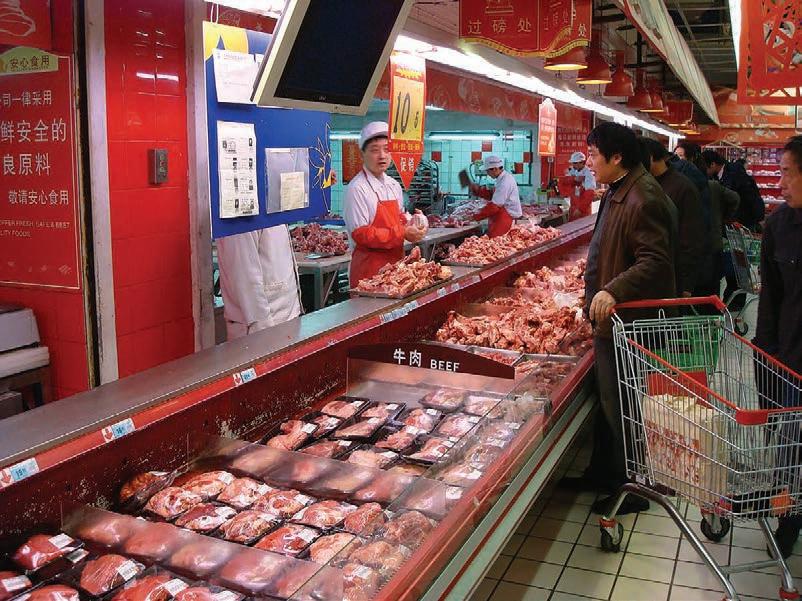
of Australian manufacturing beef.
KEY markets for New Zealand manufacturing beef are starting to show signs of weakness from competition and quieter-thanexpected demand.
Prices for bull and cow manufacturing beef in the key United States market eased US$20 to 25c/pound in recent weeks and the expected pickup in demand from China has so far not happened.
AgriHQ senior analyst Mel Croad said compounding the problem have been delays in the expected easing in domestic US production, economic pressures softening demand and high export volumes


She said Australia beef production is higher than it has been for some years, with that higher volume sold to markets in the US and Asia.
In May alone Australia exported 91,500t, the second highest monthly total so far this year, of which more than 40% was shipped to China and the US.
Drought in the US has led farmers to liquidate their herds and while production is declining, it hasn’t yet reached a point where demand is having to be met by imported beef.
NZ farmgate prices for manufacturing bull and cow beef are close to levels of a year ago despite weaker international prices.
Croad said total average NZ
export beef prices for April were $9/kg compared to $10/kg a year earlier.
At $9/kg, Croad said, April export prices are still $1/kg ahead of the five-year average.
Looking ahead, Croad said US beef production will continue to tighten, providing opportunities for imported beef, but prospects are looking more likely that an El Niño weather system is forming in Australia.
The Australian Bureau of Meteorology has calculated a 70% chance of the weather system forming by the end of winter or early spring, which tends to create drier conditions on the east coast. This could have implications for Australia’s beef herd, sending production even higher.
Despite sizzling cheese prices we have been unable to materially increase volumes.
Nathan Penny WestpacNeal Wallace MARKETS Beef SLOWED: The expected pick-up in demand for beef from China has so far not happened.


Beef + Lamb New Zealand has joined forces with a number of organisations to ensure farmers have the tools and resources they need to protect their environment and their livestock over the winter months. The organisations are supporting farmers as they implement management practices that maintain high animal welfare standards and protect soil and water resources while they intensively graze their winter forage crops.
Exclude stock from waterways. Create an ungrazed buffer zone between the livestock and the waterway. At least 5 metres, but this should increase with slope and soil instability. Check with your local council for any regulations about buffer widths.


Prepare for adverse weather events. Have a plan in place to cope with bad weather: how you will protect waterways and provide clean drinking water, feed and shelter to your stock.
ungrazed& uncroppedbufferzone













































































































































































































































































































START


Critical source area (avoid grazing)
Graze paddocks strategically. Use directional grazing for example fencing across slopes or starting at the top of a paddock. Science has shown that the standing crop acts as a filter. Or, if there is a waterway in the paddock, start grazing at the far end of the paddock.


Leave an ungrazed and uncropped buffer zone around critical source areas. Critical source areas are parts of the paddock that can channel overland flow directly to waterways (e.g. gullies, swales, very wet areas, spring heads, waterway crossings, stock camps and vehicle access routes).
For more information and useful resources visit: www.beeflambnz.com/wintergrazing


with harvest planned in late Mayearly June.
AGISBORNE contractor and maize grain grower will be thousands of dollars out of pocket after Cyclone Gabrielle left most of his crop unharvestable.
Dean Davies runs a small contracting business as well as growing maize for grain on 50ha of lease land. He is based at Waerengaahika, just north of Gisborne and has his crops at Te Karaka.
He estimates around 30ha of the crop was lost to the cyclone in what had already been a challenging season in the lead-up to that weather event.
He is hoping that a small portion of the crop is salvageable, but this will be confirmed after discussions with his harvesting contractor.
Grain was still filling out on cobs on the crop when the cyclone hit,

“That crop’s on the ground and can’t be harvested at all. Even prior to that when Cyclone Hale came through, that was right at pollination time and if you look back far enough you can see that the issues were building,” Davies said.
The poor weather at the time affected the crop’s grain yield, meaning fewer individual grains formed on the cob.

But with the bulk of the crop hit by floodwater, this will contaminate the crop and limit the options around what he can do with it. He is facing an $80,000$100,000 loss.

It is a bitter pill to swallow, given the high grain prices forecast last season and a general shortage of maize grain throughout New Zealand. The surge in input costs took the gloss off a lot of those prices and then the cyclone knocked the crop over, he said.
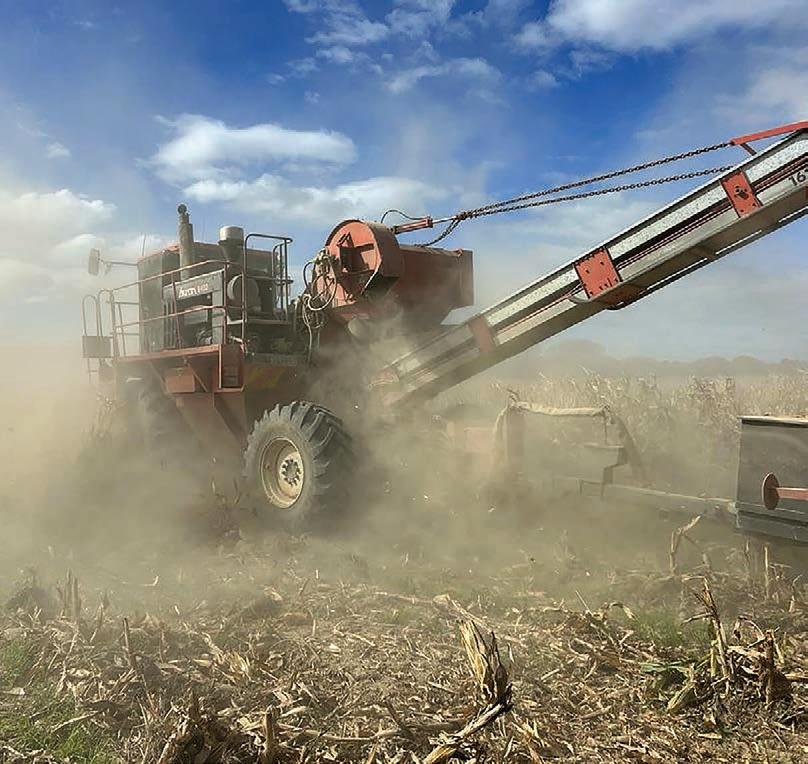


The region has 15-20 maize growers, all of whom grow maize for grain and Davies said all of them have been impacted by the flooding.
“Anyone who grows maize grain grows it in the flood-prone areas whether that’s Gisborne, up the coast towards Tolaga [Bay], and even down to Wairoa. It’s hit all three regions pretty evenly and it’s where most of the grain is grown.”
There will be other, larger growers in the region facing a million-dollar financial losses, he said.
As well as producing maize seed for human and animal consumption, the growers also grow seed for other spring planting. The cyclone will have impacted those supply numbers and he expects some varieties will have limited stock.
Davies has also heard of some contractors who have damaged brand new machines attempting to harvest crops in paddocks that were too wet.
“They bought brand new machines for the harvest season – that’s a $700,000-$800,000 investment – and they now look like they’re 10 years old.”
Flood silt got into the machines and acted like grinding paste on the bearings and other moving parts, he said.
“They’re looking at a major rebuild of their brand-new harvester once they finish harvesting.”

For Davies, it will mean belttightening over the short to medium term to cover the financial loss and seeking employment outside his business to earn income.
Maize seed companies and Federated Farmers have been very proactive in talking to growers and helping them. Most of the landowners have also been very understanding, he said. He said he doubts central government fully understands the
implications for consumers if there are maize grain shortages.
“You can’t just go overseas and buy a boatload of grain and make a profit out of it and not have those costs be passed on to the consumer.”
They bought brand new machines for the harvest season – that’s a $700,000-$800,000 investment – and they now look like they’re 10 years old.
Horticulture NZ, Foundation for Arable Research board member and Hawke’s Bay farmer Hugh Ritchie said maize growers around the region have water and silt issues with their crops.
“Some people have lost significant areas in the lowlands. I know in Tolaga Bay and Gisborne/






Wairoa there’s been a lot of flooding and slash and that’s made it hard.
“Up at Tolaga Bay, the maize is still harvestable [but it’s] very dusty and is very hard on the machinery. A lot of the silt is going through the bearings and they’re trying to wade through thick silt and mud and get trucks in and out – it’s a real battle. You have the physical damage and the silt all through it and some if it you can’t get to because it’s flat on the ground.”
On his own farm, he estimates he might have lost 12-20%. Ritchie said he had not heard yet whether it could lead to any maize seed supply issues. However, the weather disruptions may lead to quality issues with the maize feed grain and some supplementation might have to take place.
The big influence on that will be the dairy forecast for the new season, which could reduce spring demand for that grain, he said.


AKEY ingredient in Alzheimer’s medication could come from daffodil crops grown in South Island high country. Five Canterbury and central Otago high-country sheep farms are growing trial plots of daffodils on different soils, from sea level up to 650m.
The soggy cold springs in the high country are far from ideal growing conditions for the daffodils, but stressing the plants at elevation is thought to be behind them producing more galantamine, an alkaloid substance that helps raise the levels of the chemical acetylcholine in the brain.
This chemical is lower in people living with Alzheimer’s. Raising levels eases symptoms like memory loss while slowing down the disease’s progression.
Though not a cure, one drug on the market that includes galantamine has already been shown to ease symptoms associated with the disease. It is one of few drug options available
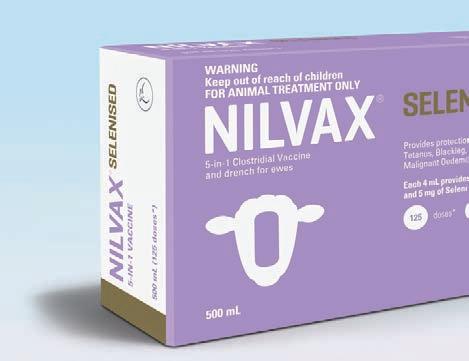



to treat the growing number of people who live with dementia connected to Alzheimer’s disease.

Galantamine can be found in many different plants, said crop technologist Nick Pyke of Leftfield Innovation. China and Bulgaria are also looking at extracting it from different plants. But these don’t produce as much of the compound, with the plants killed off at harvest – unlike the perennial daffodils, he said.

Daffodil production has been underway for a number of years on highcountry sheep farms in Wales, but for year-round production a southern hemisphere source is also needed.

Daffodil production has been underway for a number of years on high-country sheep farms in Wales, as a joint venture with Agroceuticals. But for year-round production, a southern hemisphere source is also needed.
Pyke came on board with the project after a chance


meeting with a representative of Agroceuticals at the National Agricultural Fieldays last year. This has now led to bigger trials getting underway, with funding through Our Land and Water’s Rural Professionals Fund.
Finding the conditions for the highest levels of galantamine is the reason the South Island trial plots have been planted at elevations from sea level up to 650m.
“Welsh production has been limited to about 300m above sea level,” Pyke said, “so it’s not known if higher elevations are beneficial.”
There are limited options for sheep farmers looking to diversify in the rugged high hills and as sheep don’t eat daffodil plants, unlike cattle, this could see the therapeutic plant easily integrated into current sheep farming systems.

Small plot trialling in New Zealand’s southern high country has already shown commercially viable amounts of galantamine can be produced. Some varieties of daffodil carry higher levels of galantamine.
Perennial bulb species like daffodils store energy from the
sun in their bulb for the following year’s growth.
Harvesting early every year, before they die down naturally, affects their ability to store energy for the following spring. With this in mind, a gap year from harvest is expected to be needed at some point to regenerate the bulb, said Pyke.
They are looking at a break with no harvest after five years of production.
“It will take several years before we know if this project is going to be an option for farmers, with potential for small-scale production possibly at year three.”

Wakatū Incorporation in Nelson has experience with extracting























bioactive substances and may be processing the plants should the cropping side of things get off the ground, Pyke said.

A cropping co-operative with farmers focusing on long-term sustainability, and working alongside Wakatū is the aim, he said.
Should all go well, some serious propagation will be needed to get the numbers of bulbs up to the amount needed for large-scale planting.
The dementia drugs market is likely to be worth around $60 billion globally by 2030 – so the future could soon look bright yellow in spring for some highcountry farmers.


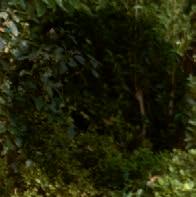
FORESTRY contracting industry representatives are hoping to meet with new Forestry Minister Peeni Henare as soon as possible to brief him on the dire financial position many are in after Cyclone Gabrielle.

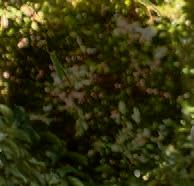
Forest Industry Contractors Association (FICA) spokesperson Ross Davies said the cyclone has exacerbated pressure on the industry, coming on the back of a tough three years, with covid-19, fuel hikes and high inflation resulting in significant interest rate rises – and continuous wet weather thrown into the mix as well.
This is compounded by increased operational costs, staffing and employment issues, market instability and contractual issues. They are speaking with government departments to see if there is any support available, such as temporary tax relief to entice those in the industry to stay.
“There’s also talk of trying to place them in other industries in the short or medium term and maybe having to top their wages up if we want them back in the industry,” Davies said.

Contractors are at breaking point, with some already in

liquidation and many more are at risk of losing their livelihoods.
Looking at the industry big picture, Davies said contractors will need to work more closely with the logging truck industry.
“We need to look at what is going on here because it’s going to get pretty nasty. People are losing their houses over this and we don’t want to go through this cycle again as an industry.
“We need to get all of the parties involved in this around the table and try to figure out what is going on.”
Davies said the government could play a facilitating role in enabling this.
“A recent survey of our members showed a widespread reduction in production over the past year.
Fifty-seven percent of respondents indicated their production had been reduced by 20% or more, with 16% down more than 30%,” he said.
“When asked if they could survive at an 80% production level for a year, only 26% of respondents indicated that they could.
“At the moment 21% of the responding contractors do not have a current contract while 40% only have a one-year contract.”
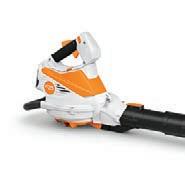
In recent weeks, two larger Gisborne-based contractors have had no option but to cease operations and shut up shop, after operating in Te Tairāwhiti for 1520 plus years.
no one there to do it’ unless industry concerns are addressed.
“Each day we are getting phone calls that confirm more and more contractors are falling over. Our role at FICA does not stop at the forestry gate – we want to support our members.”
He said he has heard unconfirmed reports that New Zealand has the world’s most volatile log market.
“We’re still seen as a turnon, turn-off industry. It’s not a blame game at all, but if we want logging contractors to be around in another 12-24 months then
It’s going to get pretty nasty. People are losing their houses over this and we don’t want to go through this cycle again as an industry.
Ross Davies Forest Industry Contractors Association
because it will reduce demand for logs from sawmills, he said.
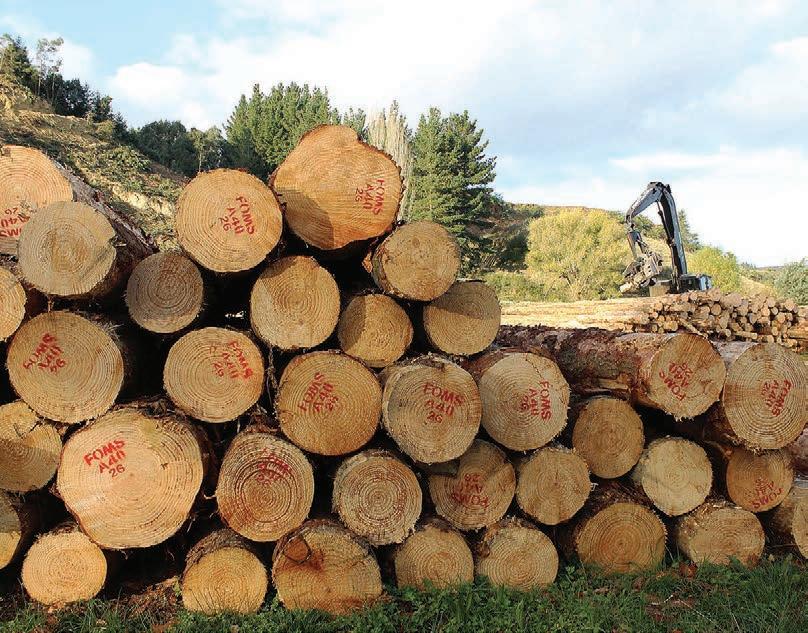
The industry’s business model also needs to be examined. Currently, all of the risk is taken by trucking and logging contractors, he said.
something needs to change now.
“We employ thousands of people, and we cannot keep operating at a loss. Jobs will be lost. Homes will be lost. Communities will be lost.”
Davies said there are two parts to the issue: the immediate response to help contractors remain viable and the longer-term solutions to help reduce the volatility in the log market.
A further concern is a slowdown in the construction market for new housing. This is having a compound effect on contractors
“You have a lot of people asking us to do it right in terms of using the right equipment and do everything right with health and safety and in the environmental space and then you are not prepared to back them up with a contract that rewards that.”

There is a mismatch of risk and many forestry companies owned by overseas corporates are creating contracts not relevant to New Zealand conditions.
“If you want a sustainable industry you have to start looking at the contract model.
“If you want your wood harvested in two years’ time, you’re going to struggle because there will be no one there to do it.”
AUSTRALIAN poultry giant

Inghams is seeking Commerce Commission clearance to buy parts of Bromley Park Hatcheries, the Batkin family-owned producer of day-old chicks at Tuakau, South Auckland and near Christchurch.
Bromley Park brings into New Zealand the Cobb and Shaver genetics that underpin the country’s meat chicken and egglaying industries.
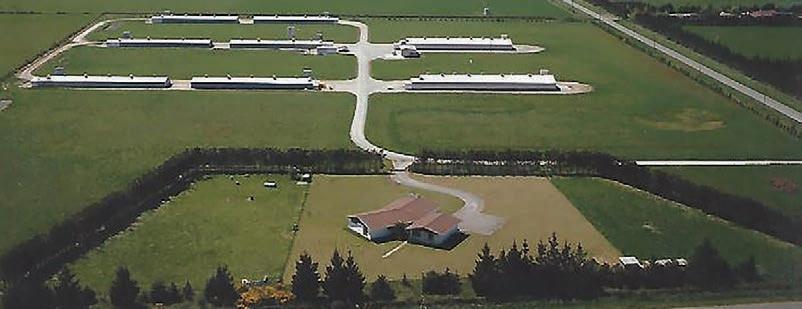
Inghams seeks clearance to buy the Cobb Commercial and Riverlands businesses, which sells Cobb parent stock to the Pacific Islands.

The purchase price is $8.6 million and the Shaver part of Bromley’s businesses, mostly located in Canterbury, is not included.

In its clearance application, Inghams said it wants to safeguard its supply of day-old chicks for the broiler farms it owns and operates in New Zealand and that it will continue to supply chicks for other poultry companies.
Because Bromley has exclusive rights to the distribution of the Cobb breed in NZ, the proposed Ingham purchase has vertical integration implications for the whole industry.
Inghams faces strong competition from Tegel, which also sells day-old chicks, and it claims the Bromley purchase would not harm other poultry companies like Brinks and Turks.
The Commerce Commission invited submissions by June 9 and it expects to make its clearance decision by July 7.
Bromley Park Hatcheries was
THE 1000 university and polytechnic jobs at risk of being cut include academic roles whose loss could undermine New Zealand’s research clout, warns the body representing agriculture and horticulture scientists.
Significant job losses are pending at AUT, Massey, Victoria and Otago universities and the NZ Institute of Skills and Technology (Te Pukenga), due to falling enrolments, fewer international students and funding failing to stay ahead of inflation.
Professor Julian Heyes, the president of the NZ Institute of Agricultural and Horticultural Science, said the fact that multiple universities are looking to reduce staff shows the issues are widespread.

The tertiary sector attributes its challenges to three years without international students, falling enrolments and funding by successive governments not
keeping pace with inflation.

AUT faces a $21 million deficit and last year sought to reduce staff by 250, of whom 170 were academics.

The Tertiary Education Union mounted a successful legal challenge, and it was found that mistakes had been made in AUT’s handing of the redundancies, which has delayed the process.
polytechnic into the NZ Institute of Skills and Technology (Te Pukenga), has created a $63m deficit, and it expects to make “hundreds” redundant.
Heyes said when academics and technicians previously lost jobs, many would find work at Crown Research Institutes, but they do not have the capacity to employ them this time around.
He said claims by government officials that more money is being invested in research is smoke and mirrors.
Researchers are successfully leveraging investment from the commercial sector, which is being counted as government funding.
Massey is seeking to make 178 people redundant, many in supporting roles, but create positions for 144 to address a $15m budget shortfall.
Victoria has a $33m hole and wants to lay off 260 staff, of whom 110 are academics. Otago has a $60m hole to fill and seeks to make about 280 people redundant.
The merger of the former
“Researchers are not seeing bucket loads of new money,” he said.







Heyes fears there is a pervasive view in Wellington that agriculture and horticulture are sunset industries and the future is in sectors such as information technology.
“Whenever that old idea raises its head, we point out that agriculture and horticulture are very high-tech.”
He said the sector needs to differentiate itself to overcome the tyranny of distance from markets.
In recent years social science has increasingly had roles in agricultural and horticultural research, which Heyes said contributes to holistic, considered, all-round findings.
“We applaud that.”
But it also means the pool of







money for that research is spread more thinly, distributed across multiple disciplines instead of being additional funding.
Heyes said with the current abundance of jobs, fewer young people are contemplating tertiary education, but that could change once they realise higher education will enable them to earn higher incomes.

A GROUP representing rural health providers is urging the government to be bold and prepared to experiment with options to improve emergency and unscheduled care across rural New Zealand.
Jeremy Webber, the clinical director for the Rural Health Network (Hauora Taiwhenua), said rural communities do not have comparable emergency health services to those in urban centres, and to come close to achieving that requires innovative solutions.


“We need to be bold and try new things and see what works better.”
Adeline Cumings, Health NZ (Te Whatu Ora) manager of primary health care, system improvement and innovation, said the review will initially analyse the different approaches currently employed across rural NZ.

“Although there are similar challenges and themes in terms of access to services and equity of outcomes, there are nuances across the country,” she said.
Webber said out of necessity, rural health practices already operate varied systems to deliver emergency and unscheduled care. Staff availability means practices offer limited or telehealth services, or cannot provide emergency services, while others refer straight to hospitals.
“If we want equity of health care, which is what health reforms are all about, then clearly there needs to be a major changes to the afterhours and unscheduled care for our rural communities,” he said.
Rural communities are short an estimated 150 general practitioners but Webber said in addition to providing 24-hour access, some communities have to cater to seasonal influxes of visitors.
“In some cases we are only one resignation away from a crisis.”

He is heartened rural has been identified by the government as a priority population, which should enhance services.



Webber wants the review to appreciate and better value
rural health services and ensure funding meets the actual costs of maintaining emergency and unscheduled health care such as staff, diagnostics and travel.
“It costs more to give equitable health care in rural areas.”







Federated Farmers president Wayne Langford hopes the funding of donations-dependent emergency helicopter services is included in the review.
Data provided by Health NZ (Te Whatu Ora) shows nearly 160 more patients were transferred by helicopter from rural health facilities to urban between 2021, when there were 1344, and 2022 when the number rose to 1502.






Langford said in some cases it is more cost efficient and viable
to despatch a helicopter to take a patient to hospital than initially sending an ambulance only to have the patient transferred by air.


Another issue he hopes is included is the definition of rural, given the expansion of large urban centres that include what were once rural towns.
The review comes as rural health professionals say rural health services are collapsing due to a lack of staff.
Cumings said the review will take up to 18 months and look at existing services with providers, and funding partners such as ACC, with the aim of developing joint approaches on how availability of these services can be improved and streamlined.
Researchers are not seeing bucket loads of new money.Julian Heyes NZ Institute of Agricultural and Horticultural Science



from us to reconnect the next farmers with landowners.”
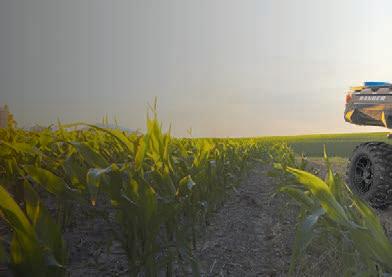
It’s got to be more than equity partnerships, Wilkshire said.
CONNECTING the next generation to the land must be a priority in the next few years, according to Property Brokers general manager rural Conrad Wilkshire.
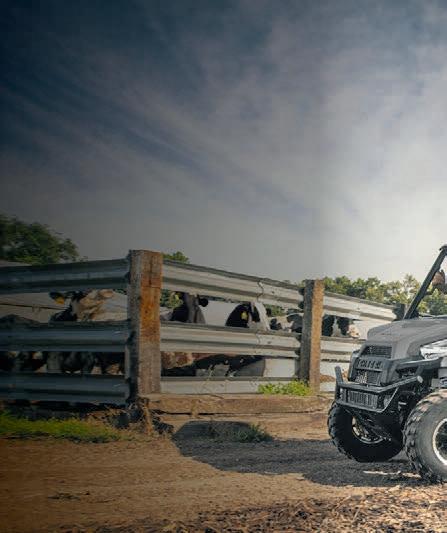


The 2023 rural property market is tracking 50% back on the same time last year with the jury now in as to why.
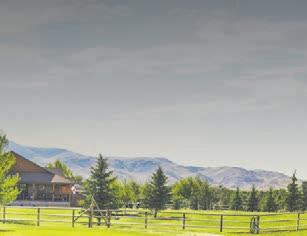
“We have got to get real around connecting the next generation to the land,” Wilkshire said.
“We have a 10-year window to get people who have built up equity to get on the rural property ladder otherwise they will lose interest and they will have the means to move to other business.
“There is urgency to connect to the next-generation buyers today to have people on the land in the future.”
In the past there have been some great opportunities and people have been open to considering a district, even regional, shift.
“The market has always been bigger than buying the neighbour. Yes, it represents value and opportunity but somewhere we have lost sight of people getting onto the land property ladder and into farming.
“There is a really strong push
“It’s the owner operator that has the best option and opportunities to adapt and go the extra mile needed to make change.
“There is real opportunity to trade land-only entities and stockonly entities to get the next lot of farmers on the land, but there is limited time to do it.”
Looking across the recent sales pattern Wilkshire, noted a clear distinction in what is selling.
“Prime location, prime soils, call it tier one, the demand for them is very obvious particularly for finishing livestock and dairy.”
In the middle tier two it is a bit more hit and miss.
“Properties over $5 million, the market is thinner; over $10m thinner again with the keener interest in adjoining property.
“Tier three, well you are dealing with the not-so-strong interest in location with influences of remoteness, proximity to a town and ability to attract staff.
“In all, tiers one and three represent the value and opportunity for the next generation on the land.”
The latest rural property review specifically focuses on pastoral sectors of 200ha plus, and dairy.
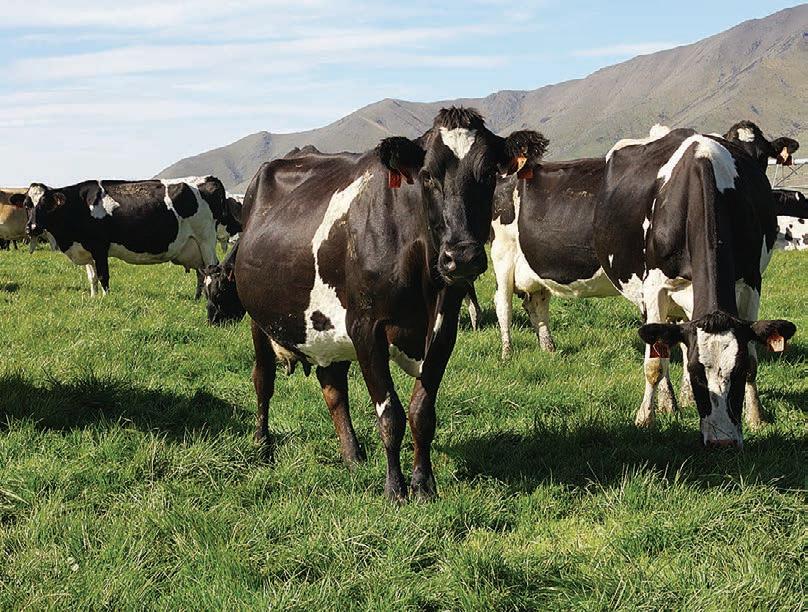
This market segment, as a proxy for the larger sheep and beef sales, finishing and grazing, at 46 sales continues to track at 50% of April 2022 sales at 71.
But Wilkshire said this is a market segment where it does not pay to generalise about softening demand.
“There is no question that in some districts farmers are stepping up where forestry left off, particularly in the central North Island, with notable recent sales of larger properties driven off local farmer interest.”
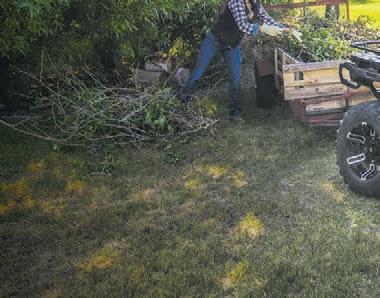
On the east coast it’s a different story.
From north of Gisborne down to Wairarapa the market has seen a significant downward shift in market sentiment compared to unprecedented carbon-fuelled land appreciation run-up over the past five years.
“There is now a general expectation of a market reset given current uncertainty with alternative land-use options, the challenge to forestry’s licence to operate and the obvious on-farm financial impact of absorbing the recent cyclone event.
“Most farmers are flat-out doing their level best to keep their current farming systems intact and are unlikely to be too preoccupied with the ebbs and flows of the rural property market.”
The South Island market is different again with not only the carbon market uncertainty limiting alternative land-use options.
“You also have the likes of Environment Canterbury changing the way its interpreting the suitability of new forestry planting
and its potential adverse effects in flow-sensitive catchments.
“A quick look at a few maps suggests these capture most of the hill country in the central Canterbury region, but this time because of a lack of water.”
When it comes to production forestry, the debate on what is the national best interest continues.
Wilkshire said the answer has always been an integrated policy solution.
“Production forestry has underwritten rural land values for the past 40 years.
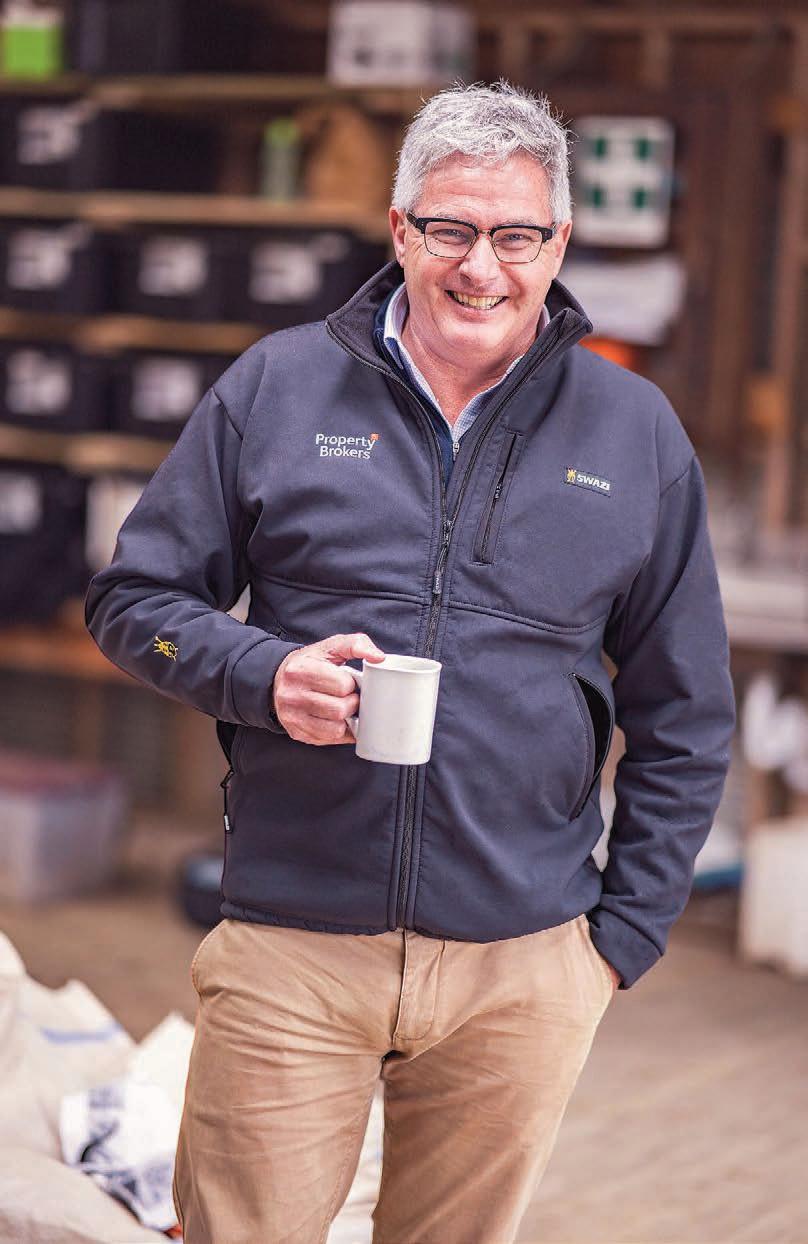

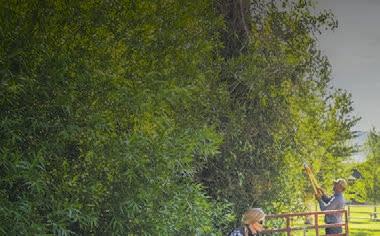


“The current pace of
afforestation change without appropriate local government land-use regulation has tipped the scales well past what has historically been in the national best interest.
“We need pastoral and forestry sectors to thrive, supported by much-improved policy and regulation tied to actual landbased production systems and supporting sequestration, not unrelated third parties trading off the back of NZ’s most significant primary sector exporters claiming to be on the journey to Net Zero through the ETS.”

We have a 10-year window to get people who have built up equity to get on the rural property ladder otherwise they will lose interest and they will have the means to move to other business.
Conrad Wilkshire Property Brokers


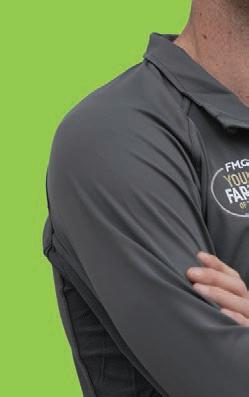
































FMG Region-off teams up AgriKidsNZ, Junior and Young Farmer winners for a regional showdown. Provincial glory and a $5,000 prize for a good local cause are up for grabs. Vote now at fmg.co.nz/region-off
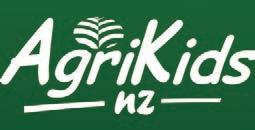
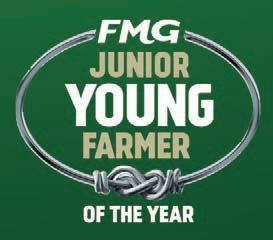


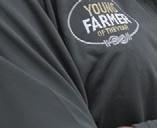
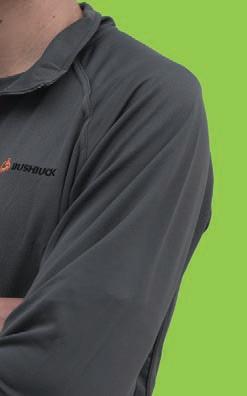







do not reflect on the long-term viability of farming, he said.
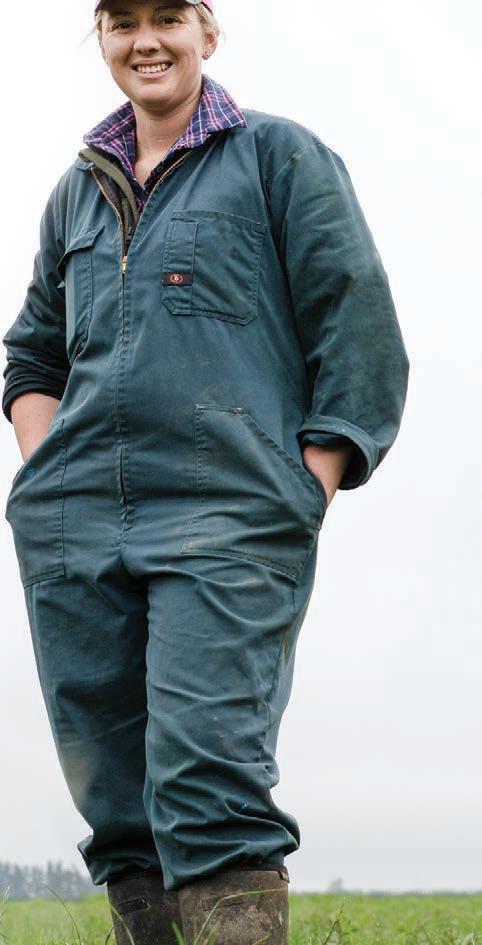
TOUGH months lie ahead for all farmers and orchardists with really tight cashflows, but cost pressures are beginning to ease, ASB Bank’s acting general manager rural, Aidan Gent says.


Cashflow pressures are immediate but



The rise in the Official Cash Rate and the flow-on to interest rates, extreme weather events and sharp cost rises in fuel, fertiliser and feed have combined to generate pressure.
“There are options to deal with tight cashflows and we don’t want farmers losing sight of the fact these are fantastic industries to be in,” he said.
“The coming winter months are the toughest, regardless of industry, when animals and milk are not being sent off farm and the advance rate is lower.
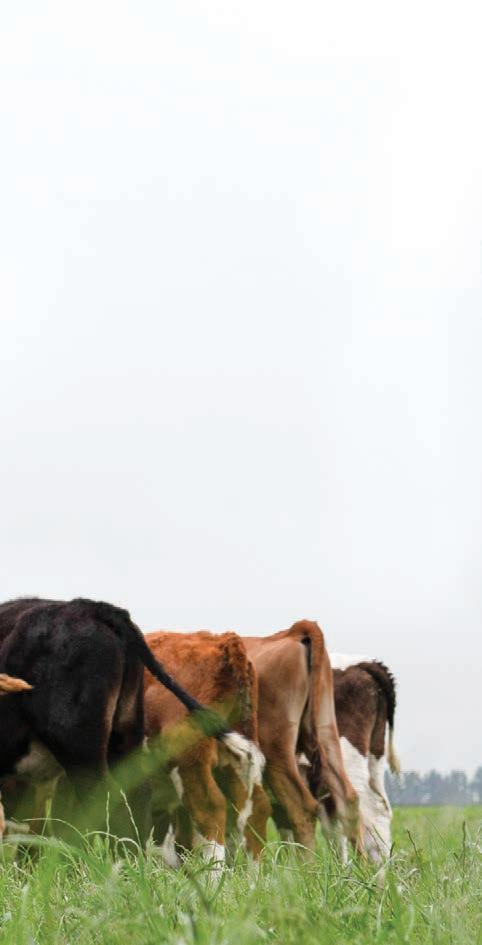
“These are also months in which large farm costs are incurred for nitrogen, for supplementary feeds and annual repairs and maintenance.
“Also, cashflows this winter are tighter than in recent years, so that has added pressure on farmers.”


On the positive side, pasture growth rates and the ability to conserve surplus grass through silage have never been better.
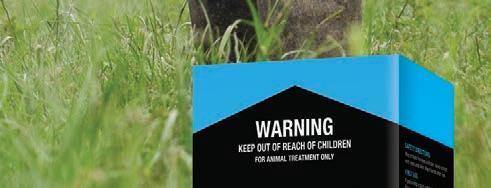


Gent said input prices are starting to ease and the OCR is topping out, which means mortgage and business interest rates look close to peaking.
But the recent rise of 3% in farm business interest rates is a big cashflow item to digest.
In its latest Financial Stability Report, the Reserve Bank of New Zealand pointed out that the average interest cost per unit of production has risen from 50c/kg milksolids in mid-2021 to $1.20 today.
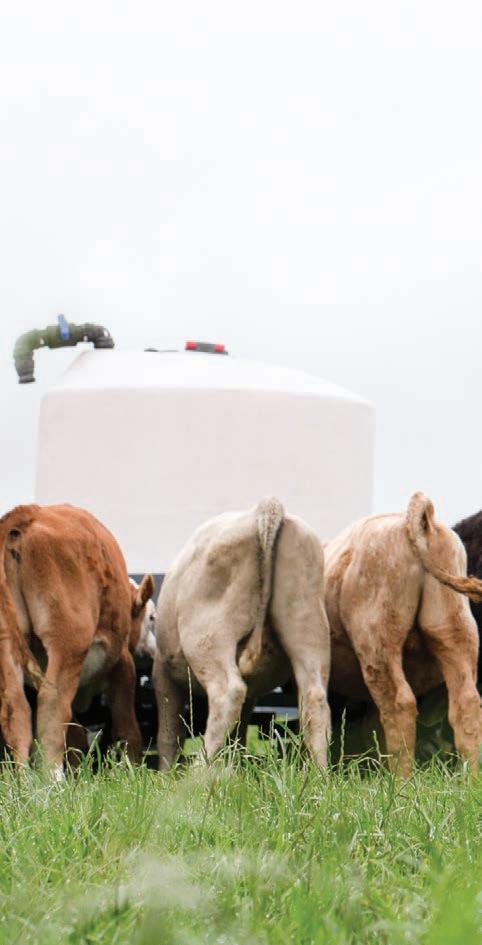
The force of that impact has been reduced by average dairy farm debt paid down from $24/kg MS at its peak in 2019 to $20 now.
That increased balance sheet strength means more options are available during downturns.

“Talk to your rural banker, because the situation may not need to be as hard because you have repaid debt,” Gent said.


Born and brought up on a Northland dairy farm, Gent said generations of farmers have had to manage tight periods and downturns such as those that are now occurring.
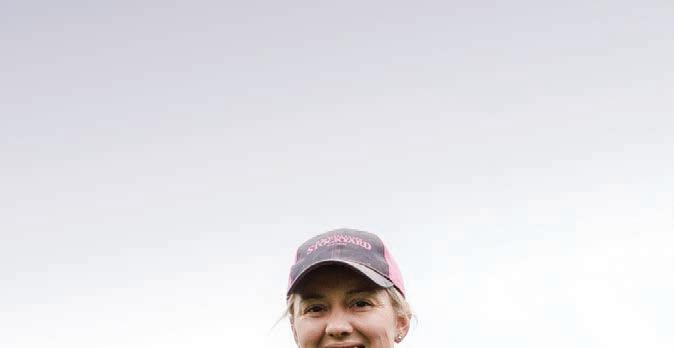
“You need to know your numbers, where your break-even line is, what you can do quickly to manage the squeeze.



“You have to talk to your rural professionals and advisers to make sure you are making the right decisions.”
Looking back five years, Gent said farmers were content to sit on low floating rates but now are considering fixing some longerterm rates because they are cheaper than the floating rates.
“But you should never take a fixed rate to try and beat the interest rate market.



“The reasons for fixing should include risk management in your business, because there is no right or wrong answer, every business is different.”
The June 1 farm transaction day was much quieter than in past years, perhaps only 40% of this time last year.
The tight cashflow, rising input costs and high OCR have not been conducive to farmers buying neighbouring properties. Orchard developments have slowed down and farmers are spending on sustainability, weather-related improvements and technological inputs, he said.
“ The gains we’ve seen are better reproduction, better six week in-calf rate and less empties.”
Lilley, Mid CanterburyHugh Stringleman NEWS Finances
Glen Eyre farm is the result of a collaboration between Ravensdown and Lincoln University.
for us because we are keen to apply innovative ways to the reduction of emissions and minimise environmental impacts.”
CRAIGMORE Sustainable in North Canterbury has embarked on a New Zealand-first trial to eliminate methane from effluent ponds.
The trial is using breakthrough technology to reduce methane on Craigmore’s 400ha dairy farm Glen Eyre in Oxford, North Canterbury. It is the first commercial dairy farm in NZ to adopt EcoPond, an effluent treatment system that removes virtually all methane emitted from effluent ponds with an additive usually used in the treatment of drinking water.

The cutting-edge technology being used at the 1100-cow
CLEANSING: The EcoPond e uent treatment system removes virtually all methane emitted from e
Craigmore’s general manager of farming Stuart Taylor said the company is striving to be a leader in the trial and the adoption of new technology.
“Craigmore recognises that farming plays an important role in both contributing to and mitigating climate change and we have an ambition to materially exceed the targets set by the Climate Change Commission through land use change and changes to existing operations,” he said.
Taylor sees EcoPond as playing a key role in supporting farmers to reduce methane and help NZ meet its climate change targets.
“EcoPond is an important trial
Effluent from the pond was tested in May after it had been treated with iron sulphate through EcoPond – and showed a 95% reduction in CH4 (methane).
“This technology is another example of NZ’s primary sector leading the world in reducing emissions and playing our part in addressing climate change,” Taylor said.

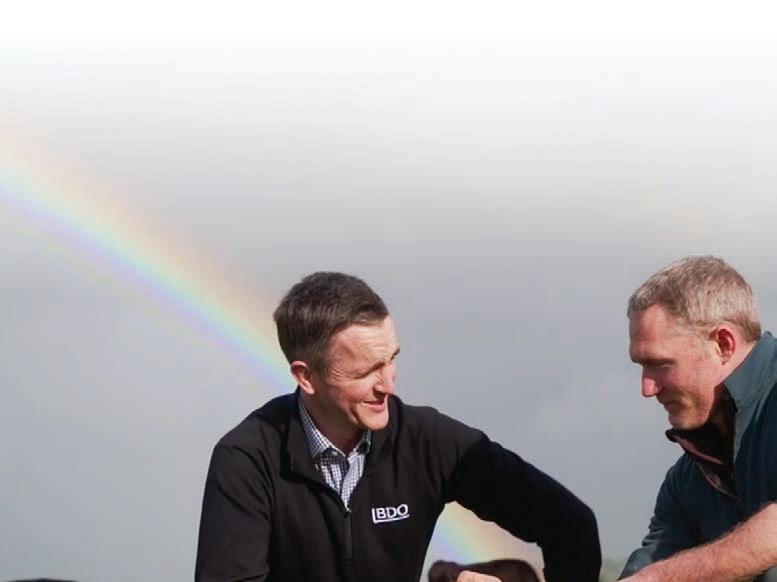
“We have several sustainability programmes in place to ensure we strike a balance between respecting the environment and running a sustainable and profitable rural operation,” he said.
By continually improving, dairy farmers are producing 20% less emissions per kilogram of milk solids than they did in 2000.
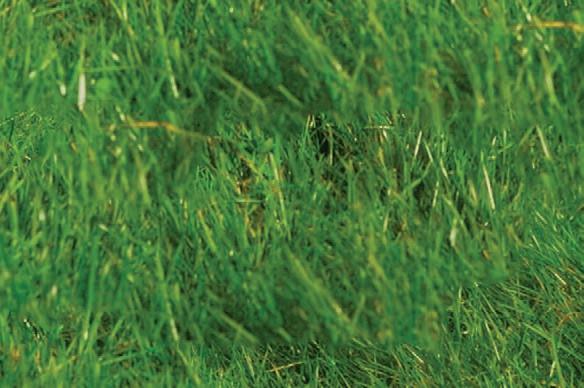
In 2020, an AgResearch study confirmed NZ dairy farmers have the world’s lowest carbon footprint for on-farm milk production.
Earlier this year, EcoPond became part of the newly established Ravensdown entity, Agnition. Agnition’s mission is to get innovations on farm faster.
The team finds, builds and grows high potential opportunities to solve real-world challenges on farm, predominantly in soil health and nutrient management.
“Wewantto leavethe land in a better placeforour kids, andour kids’ kids.”
Aaron Waite, Waimacher Farms, Taranaki.
Adopting sustainable farming practices and meeting changing regulations requires bold change. For this, you need the right team around you; your family, friends, fellow farmers and trusted advisers - with fresh ideas for your business model, finances and accounting. Like most, Aaron’s team are on a journey. But each win is a step towards that better place. What’s your next step?
“Deep partnerships with roughly half of Aotearoa NZ’s farmers and growers mean that we can rapidly scale-up innovations to a national level,” Agnition chief executive Jasper van Halder said.
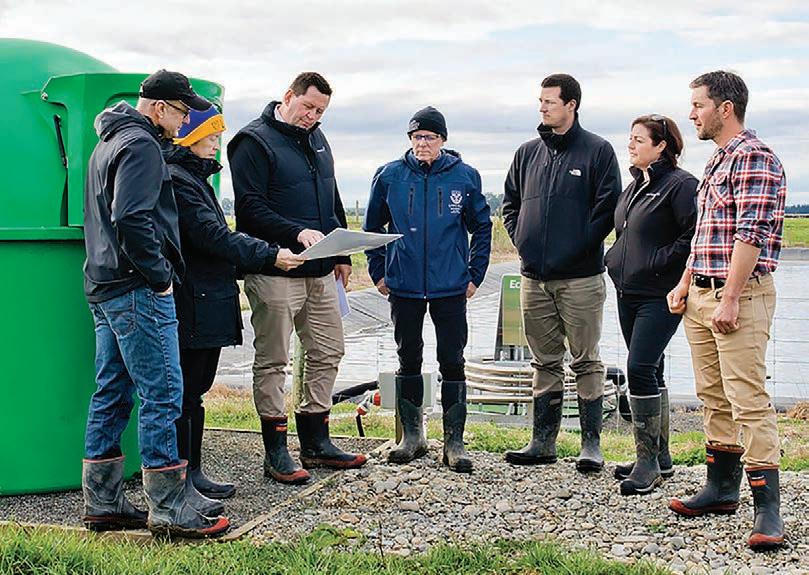


“EcoPond is an important part of the entity’s growing arsenal of technology and innovations that will help quickly deliver practical and sustainable on-farm solutions for NZ farmers and growers.
“It’s great to see Craigmore take a leadership role and demonstrate what can be achieved with EcoPond technology.”
Partnerships and innovation are required in the sector.
“It’s hard to beat practical onfarm use to really demonstrate the EcoPond advantage, and partners like Craigmore show us the future of farming,” Van
said.
four of which are people focused and four industry focused.

















GROWER-focused research and international perspectives will be in the spotlight when the Foundation for Arable Research holds its conference later this month.
FAR chief executive Alison Stewart said the conference is an opportunity to learn from leading industry and academic experts, as well as a chance to connect with other growers.

“Our expert national and international speakers will cover topics such as nutrient use efficiency, futurefocused research, keeping up with agrichemicals and their alternatives, and soil management.
“Growers will gain valuable insights into the latest trends and best practices in the arable industry.”
















herbicide resistance and lessons from the Australian experience for New Zealand growers.
David Aglen, who has hosted the Strategic Cereal Farm in Scotland since 2020, the equivalent of a GLC Pathfinder farm, will speak on increasing plant and soil health and reducing inputs.
Head of crop performance with ADAS consultancy and an honorary professor with the University of Nottingham Roger Sylvester-Bradley will speak on nitrogen and how United Kingdom farms build confidence to cut back.

































Growers will gain valuable insights into the latest trends and best practices in the arable industry.
ENTRIES have opened for the 2023 Beef + Lamb New Zealand Awards, which celebrate the people, innovation, science and technologies behind NZ’s worldleading red meat sector.
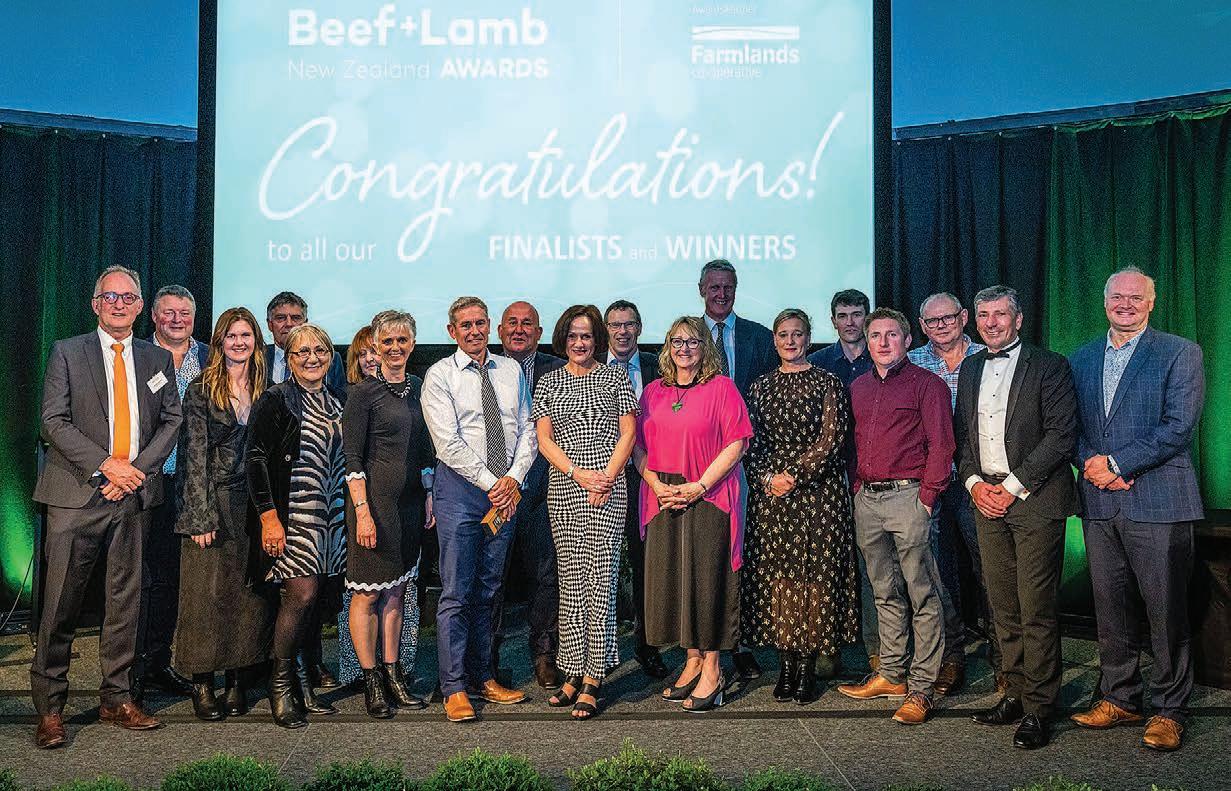
BLNZ chief executive Sam McIvor is encouraging anyone working in the red meat industry to consider either entering or nominating someone, or an organisation, who is making a difference.
“Think about your farm staff, the teachers, the mentors, the scientists, the community leaders, the local heroes, the breeders, the people who develop the technologies that make your life easier, the sector champions, the marketers and those who support farmer health and wellbeing, and nominate them for an award.” There are eight category awards,
Entries close at the end of July with judging taking place in August.
The awards showcase will be held at Te Pae Convention Centre in Christchurch on October 19.









We have so much to be proud of and the awards give us the chance to showcase our sector to our peers and the wider public.
Sam McIvor BLNZ

McIvor said it has been a tough year for the primary sector with extreme weather events coming on top of concern about the raft of government environmental policies, rising interest rates and soaring input costs.
“The BLNZ Awards gives us the opportunity to take stock and




























































celebrate the fantastic people and work happening in our sector,” he said.
“We have so much to be proud of and the awards give us the chance to showcase our sector to our peers and the wider public.”
McIvor said he is pleased that Farmlands is once again the awards partner.
Farmlands CEO Tanya Houghton said the BLNZ Awards are a great way to celebrate the people, the innovations and the systems that make NZ’s grass-based red meat industry so advanced.
“Like Beef +Lamb New Zealand, we’re supporting a sustainable and profitable sheep and beef industry by offering the sector the best value possible as a buying group.

“We’re really pleased to continue to support the awards, and acknowledge the achievements of everyone who contributes to the red meat industry and to the success and wellbeing of our farmers and their communities.”
The theme of this year’s conference is Growers Leading Change, with three of the four sessions including a farmer panel.
These will discuss how farmers are using research on farm, what’s working for them and why they would or would not adopt new innovations.
The theme also links with the successful Growers Leading Change (GLC) programme, established by FAR in 2020 with funding from the Ministry for Primary Industries, where groups of arable growers can focus on a particular on-farm issue, or try out new technology or management with the assistance of a facilitator and FAR researchers.
More than 15 GLC arable growth groups are now operating throughout arable regions.

International speakers at the conference include Chris Preston, a professor of weed management at the University of Adelaide, who will speak on
Paul Gosling of the UK’s grower and industry-funded Agricultural and Horticultural Development Board will talk about breeding cereals for integrated pest management. Speakers from the UK will attend via Zoom.
FAR speakers include Stewart and researchers Richard Chynoweth, Jo Drummond and Abie Horrocks.
A new feature is an agtech expo with more than 30 exhibits covering the latest in precision ag, irrigation, fertiliser and biological and tech products.
The grower-led biennial conference will be held on June 29 and 30 at the Lincoln Event Centre.
The event will consist of four indoor sessions, a mini arable-technology expo and a conference dinner.
MORE:









To register for the conference go to: www.far.org.nz







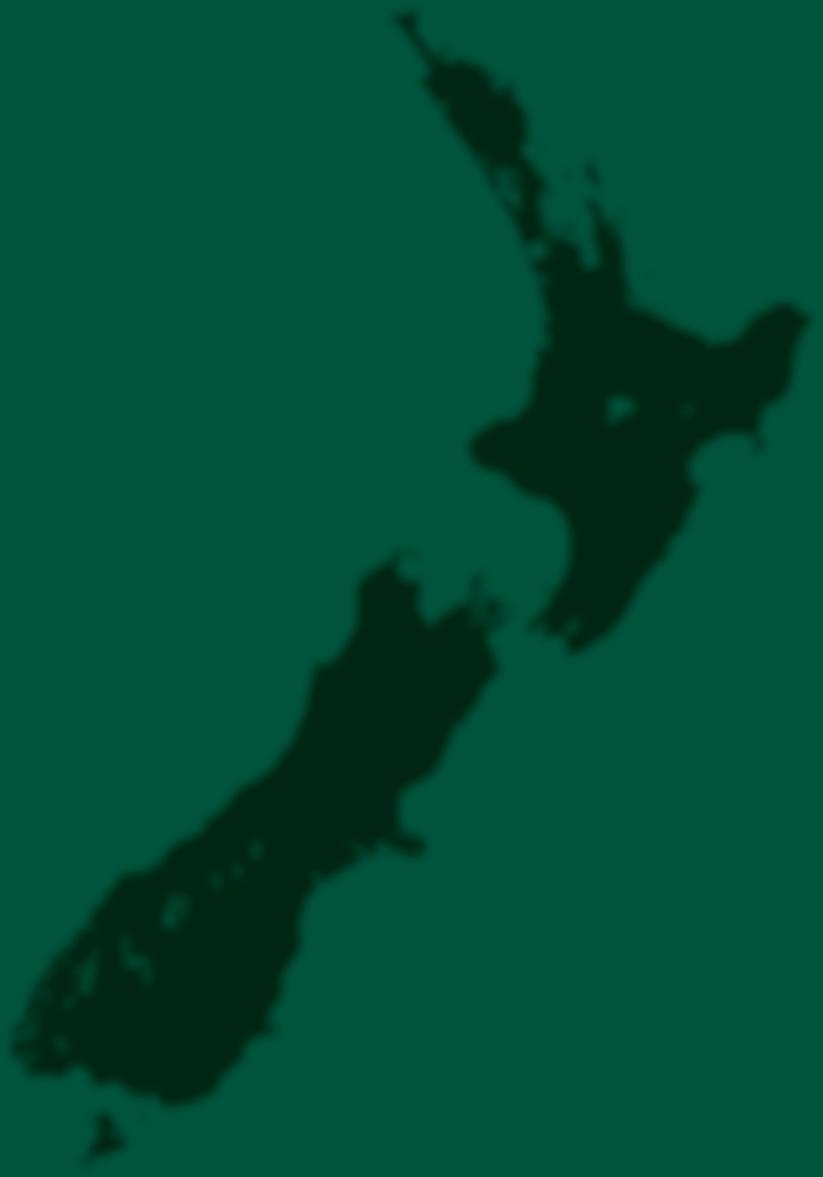



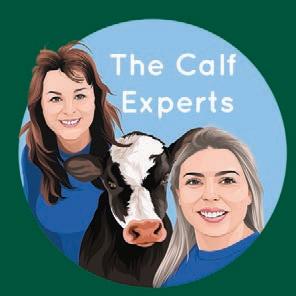

MURRAY McPhail
introduced New Zealand to broccoli and bagged salad in the 1970s.
Now the Gisborne founder and director of LeaderBrand has been recognised for his contribution to the horticulture industry by being named a Companion of the New Zealand Order of Merit in the King’s Birthday Honours.
Never one to seek the spotlight, McPhail was quick to play down his achievements, saying his success was down to a team effort.
“I’m incredibly honoured and it is a real privilege to receive such a prodigious award for doing something that has never felt like work,” he said.
“There are so many people who have gone before, and who are
still active in the industry, who are equally deserving.
“I humbly accept this award on behalf of all of them.”
McPhail started LeaderBrand from scratch and turned it into one of the country’s largest produce businesses. It now operates farms in Tairāwhiti Gisborne, Matamata, Canterbury and Pukekohe. The company is the largest private sector employer in Tairāwhiti.
McPhail said the company as a team had achieved so much and “I’ve just been there by name”.



“To me the success of LeaderBrand is all about its people. I started off growing plants but ended up growing people, something I’m very proud of,” says McPhail.
Horticulture New Zealand president Barry O’Neil says McPhail’s honour reflects his contribution to horticulture and

his investment in, and support of, regional New Zealand for almost 50 years. “LeaderBrand was the first to introduce bagged lettuce to New Zealand as well as provide a 200% guarantee on all its produce. He is also credited as introducing broccoli to the New Zealand palate.”
O’Neill said McPhail is a visionary leader, innovative and not afraid to take calculated risks. Throughout his career he has employed thousands of people.
LeaderBrand CEO Richard Burke said McPhail’s vision to create a world-class farm continues to drive the team.
“Murray’s success was in realising quickly which produce grew best in which soil and committing to crops that could be grown all year round. He also had a knack at picking future consumer trends and predicting what Kiwis







were going to want to eat in the future. This was one of the key drivers to our investment into bagged salads and our undercover greenhouses.”
McPhail has faced plenty of challenges.
In 1988 Cyclone Bola destroyed his farm. Cyclones Hale and Gabrielle also affected the business but “it was this pioneering spirit and the Kiwi can-do attitude that drove us once again to dig in”.
“Murray has led the industry for 50 years and built from scratch one of the largest produce businesses in New Zealand. He’s been at the forefront of new product and process development in New Zealand produce industry and one of the many reasons he was awarded the country’s highest horticultural achievement, the Bledisloe Cup, in 2016,” Burke said.
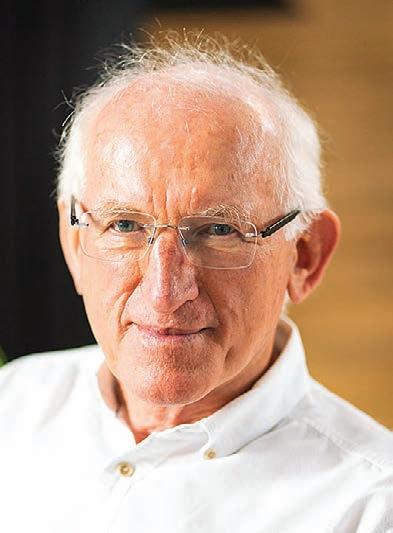
1966, later completing a PhD at Cornell University in New York.
TWO leaders in the dairy industry have been recognised in the King’s Birthday Honours.
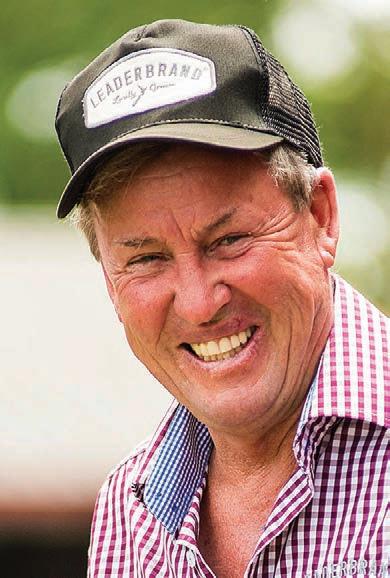
Hamilton-based Dr Brian Wickham, who pioneered the use of world-leading animal genetic and breeding evaluation systems to enhance New Zealand’s dairy industry, was named a Companion of the New Zealand Order of Merit for services to the dairy industry and statistical genetics.

Colin Jones, of Auckland, has been involved in the dairy industry for more than 50 years and helped shape New Zealand as a leader in dairy exports. He was named an Officer of the New Zealand Order of Merit for services to the dairy industry.

Wickham studied agricultural science at Massey University in
For 22 years he worked for the Livestock Improvement Corporation, holding several roles including statistician geneticist, information resource manager, research manager and deputy general manager. During his tenure, he led the implementation of New Zealand’s National Dairy Herd Improvement Database, widely regarded as underpinning productivity advancement in the dairy industry.
He was acting secretary-general of the International Committee for Animal Recording in 2014/2015, playing a pivotal role in promoting the genetic improvement of dairy cattle on a global scale.


As chief executive of the Irish Cattle Breeding Federation from 1998 to 2012, Wickham stabilised Ireland’s cattle breeding programme by collating data from diverse sources to create a world-
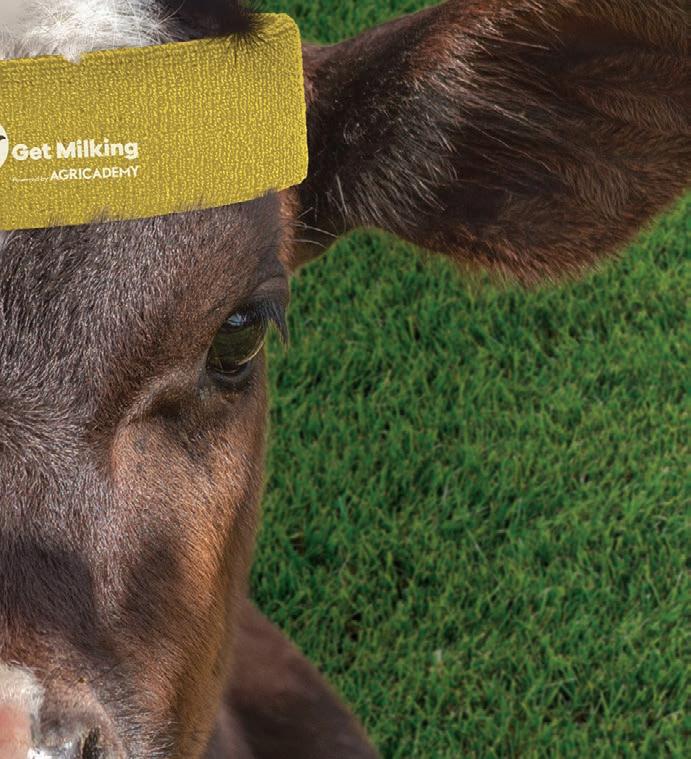
class genetic evaluation system, taking Ireland to the forefront of animal genetic improvement on the international stage.


Jones led sales and negotiations globally between 1971 and 2000 on behalf of New Zealand farmers to establish channels for NZ dairy products.
In the role of Technical Specialist of Milk Powder with the NZ Dairy Board, he marketed NZ milk products as a guest speaker in Taiwan in 1986, leading to the formation of joint venture company New Tai. His sales acumen has been significant in enabling Fonterra to operate in 140 markets globally. He played a key role in building international relationships for the NZ dairy industry, including with China, currently the biggest importer of NZ dairy products, as well as Taiwan, Vietnam, Mexico, Chile, Cuba and Venezuela.
He supported the establishment
in 2010 of Miraka, a dairy processor based in Taupō and led by a group of Māori trusts and incorporations. He founded Global Dairy Network Ltd in 2007,
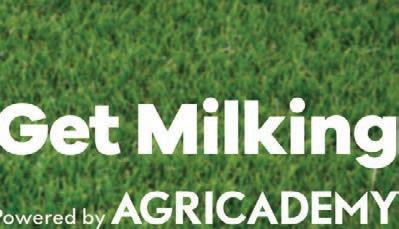
an international dairy sales and marketing enterprise that helps link dairy product manufacturers with users of processed milk products.

HAWKE’S Bay farmer and Farmers Weekly columnist Steve WynHarris has been made an Officer of the New Zealand Order of Merit in the King’s Birthday Honours.

The citation said he is an advocate for sustainable farming practices and has worked to raise awareness of farmers’ wellbeing in rural Hawke’s Bay.

Off the farm, Wyn-Harris has been a rural communicator for three decades, writing a weekly column and presenting The Cockies Hour on Central FM, Waipukurau, twice a week.

When he stops being a full-time sheep and beef farmer on July 1, he will also stop writing the From the Ridge column in Farmers Weekly.
Wyn-Harris was a director of Pāmu Farms from 2002 to 2008 and Farmlands CoOperative for nine years.
He was awarded the Landcorp Agricultural Communicator of the Year in 2012, Hawke’s Bay Farm Forester of the Year in 2013 and Richmond Hawke’s Bay Farmer of the Year in 1994.
Steve and Jane Wyn-Harris were the inaugural East Coast Ballance Farm Environment Supreme Award winners in 2011 and won the Hawke’s Bay Regional Council Environmental Award in 1999.
“I am primarily a shepherd and have spent

40 years out on the farm so perhaps this can be seen as a recognition for all those doing the hard work on the ground that will never be awarded an honour, but doing important work for the country all the same,” WynHarris said.
“My wife Jane has been brilliant. We have built a successful farming business together and raised three great sons.
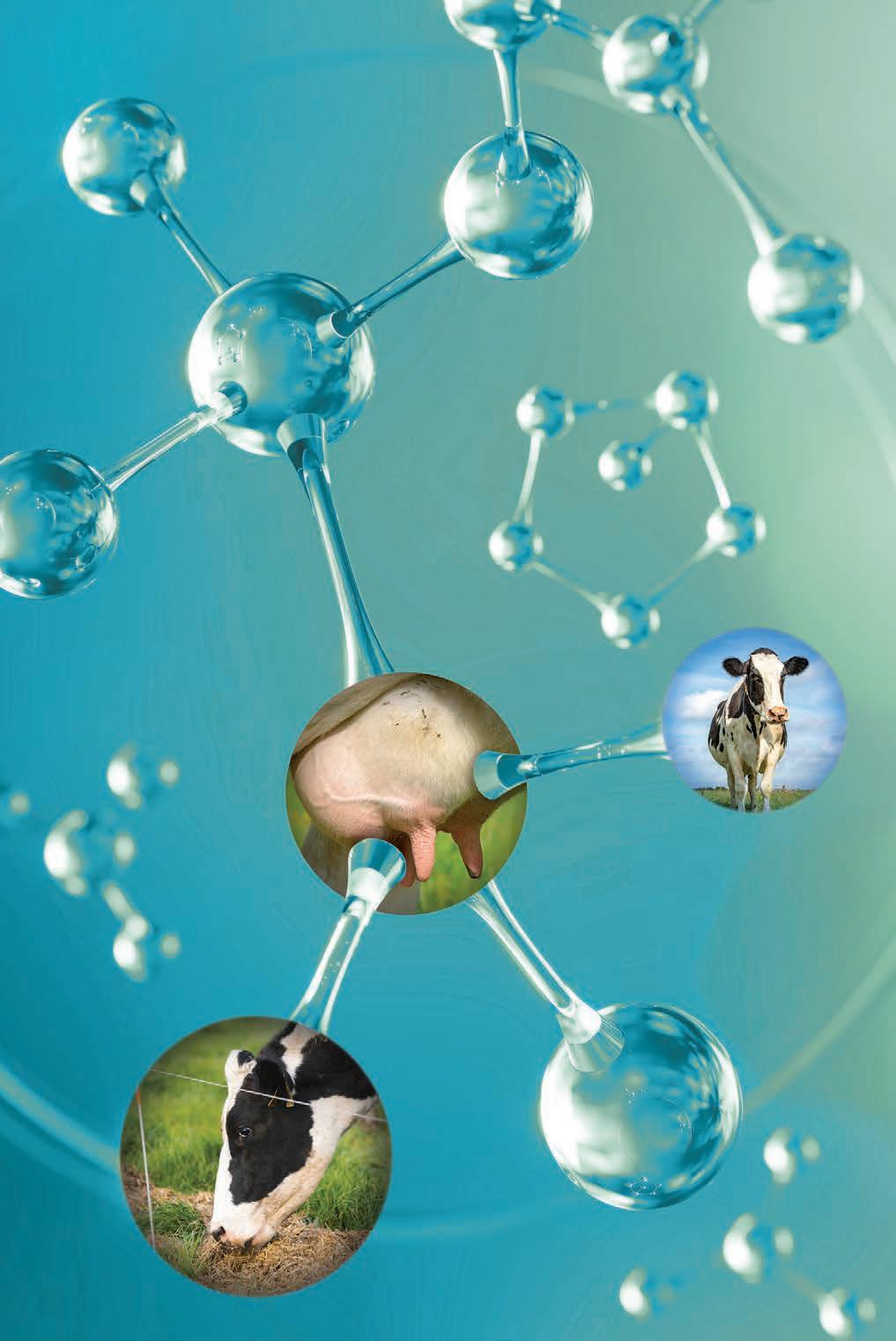
“And then there are all the others, ranging from editors to stock agents, accountants, lawyers, bankers, company reps and friends, who have always supported me through good times and tough.”
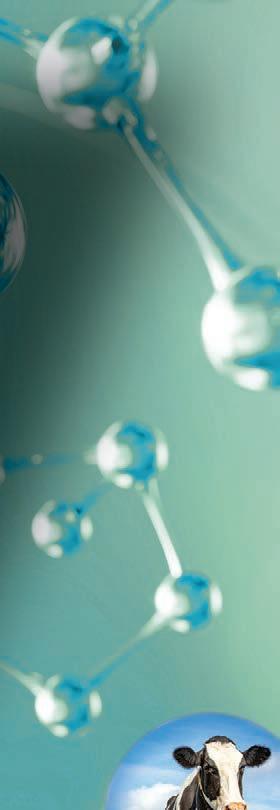

MID Canterbury farmer and A&P show stalwart Richard Lemon’s early memories of agricultural shows were of riding ponies.
“We would head off to the show in the old Bedford truck loaded with sheep, the horse float hitched on the back and that was us for show day, sheep and ponies.”
It was a generational family affair, with Lemon moving through the ranks to eventually take up the reins as the thirdgeneration Lemon family president of the Ashburton Agricultural and Pastoral Association.
Also heavily involved with the Canterbury A&P, he led the show through its 150th anniversary year, when he and wife Barbara hosted the then Prince of Wales, now King Charles, as a guest at the show.
He said the honour of being awarded a Queen’s Service Medal in the King’s Birthday Honours was never expected.
“You don’t go through life expecting these sorts of accolades.
“It’s almost to the point of [me being] embarrassed that my peers recognise me in such a way.”
Lemon said his lifelong association with the show has brought him great satisfaction.
“I really enjoy the camaraderie of all the people I work with. We are all volunteers and trying to achieve a spectacle, and the
SHOW: Mid Canterbury farmer and longtime upholder of A&P standards
Richard Lemon has been honoured with a Queen’s Service Medal.
end result is people talking about the show, the smiles on the faces and people wanting to come back. There’s so much satisfaction and reward in that.”
Lemon has been involved with A&P events in both Canterbury and Ashburton, having been a committee member of Ashburton A&P Association since 1976 and serving as president between 1994 and 1995. He is currently chair of the board.
He has been a member of the Canterbury A&P Association since 1990, holding several chairs of committees during a difficult period for the association.

MERCHISTON Angus at Hunterville, Rangitīkei, made $41,000 for lot 11, Merchiston Goalkeeper S184, purchased by the Crawshaws at Kenhardt Angus, Nūhaka.
Vendors Richard and William Rowe sold 27 of the 30 bulls auctioned and made an average of $10,200, about $2000 more than in 2022. The offering was reduced by 25% this year.
Kairuru Polled Hereford at Reporoa in Central Plateau made a top price of $36,000 in this year’s two-year-old beef bull sales with Kairuru Scotty 137.
Vendors Kevin and Jeff McDonald said Scotty was bought by Colin and Carol King, Bexley station, Awakino Gorge, Mokau.
Kairuru also sold a bull for $23,000 to Cam Gerard, Te Puna Herefords, Kaikohe.
For the older bulls, 20 were sold at auction out of 24 with an average price of $10,000 and four yearling bulls were sold for an average of $5250.
Staying in the central North Island, Black Ridge Angus, at Taumarunui, sold lot 6, Black Ridge S035 for $35,000, among 30 bulls sold out of 38 offered for an average of $9950.
Another Taumarunui stud, Shian Angus, sold 33 out of 37, averaged $7378, and had a string of sales from $15,000, to $14,000, $13,000 and two at $12,000.
Kay Jay Angus at Masterton
had a full clearance of 41 and maintained its average price from last year at $11,640.
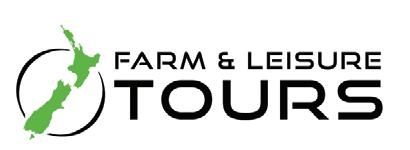
Top price was $31,000 for Kay Jay Clubhouse S564 bought by Kylie Johnson and there was another sale at $30,000.
Dandaloo Angus, Masterton, sold 29 of 30 offered, averaged $9474 and had a top of $18,000 for Dandaloo Sky 1039 and sold another at $17,500.
Oregon Angus, also near Masterton, sold 33 out of 36, averaged $9090 and had a top of $15,500.
Tapiri Angus in the same district sold 11 of 13, averaged $6400 and had a top of $11,000.
Hingaia Angus, Te Awamutu, sold 20 out of 27, averaging $6625 and with a top of $12,500.
Wairere Angus, Hawera, Taranaki, sold 18 out of 18, averaged $7220 and had a top price of $11,500.
Pukenui Angus, Taumarunui, sold 22 out of 29, averaged $6318 and had a top price of $15,000 paid for Lazarus S737.
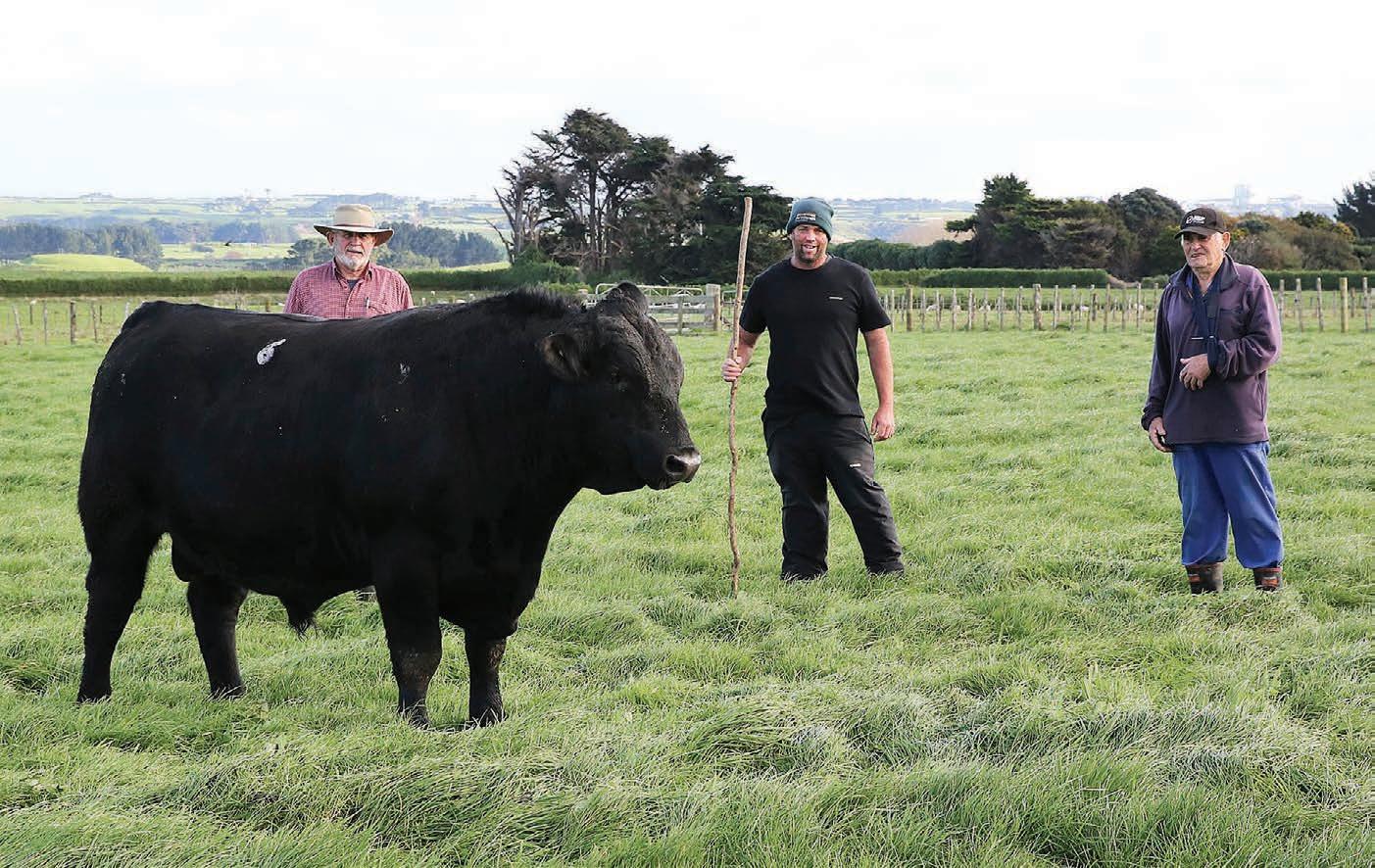
In Southland Mt Linton Angus sold 39 out of 42 offered on the
day and averaged just under $10,000.
The top price paid was $16,500 for Mt Linton S002 and there was a sale at $15,000 and two at $14,000.
Waimara Angus, at Eastern Bush in Southland, sold 26 out of 27 with a top price of $13,500 and an average of $8600.
Hereford bulls sold well for Okawa Herefords at Mt Somers in Canterbury, where a top price of $25,000 was paid for Okawa Zulu 210140. Okawa sold 43 out of 53 and made an average of $8337.
TRANSACTION:
Wairere Angus bull S878 after selling for $11,500, with livestock agent Mike Johnston, left, purchaser Simon Forsyth from Opunake and breeder Cedric Lander.
Glenbrae Herefords, Pōrangahau, sold 22 out of 25, averaged $8045 and had a top price of $20,000. Otapawa Herefords, Eketāhuna, had a top price of $18,000 and sold 29 out of 37 with an average of $8155.
Waikaka Herefords, at Greenvale near Gore, sold 13 of 21, averaged $5500 and had a top price of $9000 for Quoit 2122.
Mokairau Hereford at Gisborne sold 19 out of 23 on the day with a top price of $11,000 for Mokairau Clive 90. The average price paid was $7647.
and the consumer experience.
THE Commerce Commission will cast an eye over the internet access options available to the 13% of New Zealand’s population who fall outside fibre broadband’s reach.
Telecommunications
commissioner Tristan Gilbertson said the commission plans to look into the technologies available to people who cannot access Ultra Fast Broadband (UFB), map where these technologies are being offered, and look at other factors like price, performance
“The vast majority of Kiwis now have access to world-class fibre broadband – but there are still a significant number of consumers living in rural and remote areas where services might not be available, can cost more, and don’t generally perform as well,” he said.
According to the terms of reference for the Rural Connectivity Study (RCS), the commission’s work will focus on investigating four things:
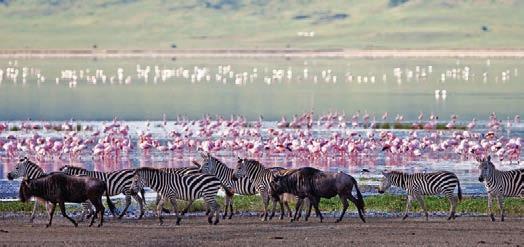
• The structure of telecommunications services in rural areas.
• Mapping out the availability of


different technologies similar to the way fibre areas have been mapped.
• Consumer outcomes like price, availability and service quality.
• The uptake of internet services in rural areas.
The study will exclude rural areas where fibre is available and it will also not examine how regulations are being complied with, policy options, regulatory changes or the effects of different regulatory decisions.
Gilbertson said the RCS will help the commission understand the broadband options available to rural consumers.
“This study will be a key vehicle
for closing the information gap we have between urban and rural, and the outputs will also be helpful for policymakers, advocacy groups and rural consumers.”

One NZ welcomed the announcement and said the company will continue to invest in rural connectivity.
“We believe there is no singular technical solution to connect rural and regional communities – a mix of mobile, fixed and satellite connectivity will be required.
“The rural sector is of vital importance to New Zealand and any work that shines the light on the range and quality of services available for these communities
is worthwhile. We are continuing to invest into improving rural connectivity where it makes economic sense, most recently through our partnership with SpaceX.”
Gilbertson said the commission will seek input from a range of stakeholders including network operators, service providers, end-users, advocacy groups and government departments.
“While our most recent Measuring Broadband New Zealand report shows the potential of satellite for these areas, we want to know more about the full range of options available to rural consumers.”

The Ministry for Primary Industries will showcase the extensive work underway to strengthen the future of New Zealand’s food and fibre sector at this year’s Fieldays national agriculture show at Mystery Creek.
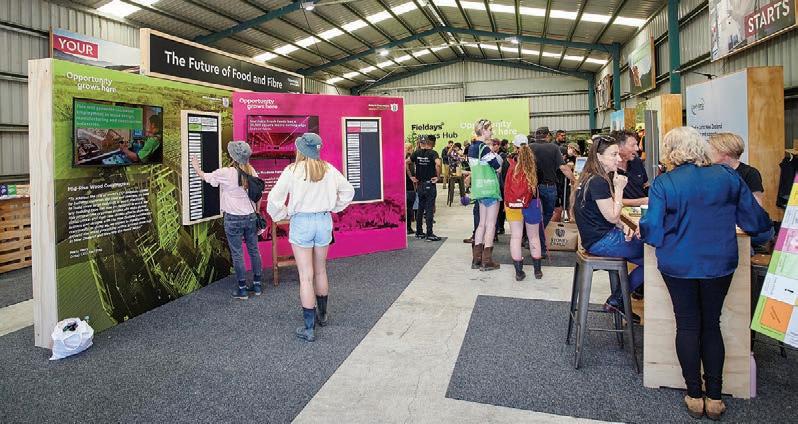
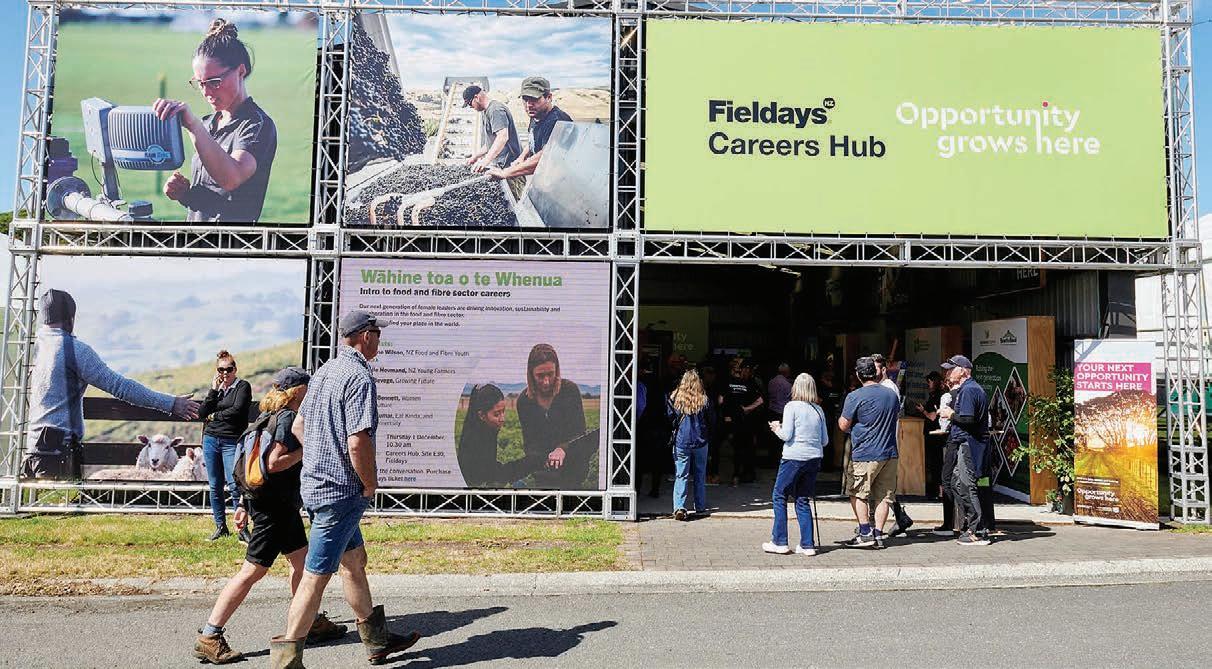
One focus of MPI’s Fieldays site will be the On-Farm Support services working throughout the country to ensure that farmers and growers have the information and support they require to innovate and thrive.
Cyclone Gabrielle has been one of the biggest challenges faced by our farmers and growers in recent times, and MPI’s On-Farm Support advisers have been on the ground in affected regions to help rural communities as they navigate the recovery process.
As the southern hemisphere’s largest agricultural event, Fieldays remains the ultimate platform for the cutting-edge technology and innovation being developed across the food and fibre sector.
MPI works closely alongside sector partners with investments through the Sustainable Food and Fibre Futures fund, helping to develop new products and technological solutions to drive New Zealand’s success.
Fieldays visitors will be able to learn more about SFF Futures, including whether their own innovative ideas could be eligible for co-investment. A range of funding options are on offer – from smaller projects that cost less than $100,000 to multimillion-dollar, multi-year programmes.
A particular focus will be efforts underway to drive innovation in New Zealand’s strong wool
industry, aiming to create demand, develop new products and add value for farmers.
Insights into projects from organisations including Wisewool, Bremworth, Wool Action, and Floc Wool Acoustic Panels will capture the diverse opportunities ahead for our natural fibres.
A series of SFF Futures projects backed by MPI will also be showcased at the nearby Fieldays Innovation Hub, highlighting exciting developments in areas including vertical farming, pharmaceuticals, sustainable packaging and even truffles.
The Fit for a Better World roadmap charting a course to 2030 will be highlighted at MPI’s Fieldays site, with its targets focused on improving the productivity, sustainability and inclusivity of New Zealand’s food and fibre.
Biosecurity NZ will share up-todate information on risks facing our economy, the environment and our way of life – including the threat posed by the brown marmorated stink bug, and biosecurity advice for lifestyle block owners.
Interactive displays from NZ Food Safety and MPI’s animal welfare teams will reinforce best practice to help visitors keep themselves and their animals safe.
Our food and fibre sector powers New Zealand’s economy, with export revenue hitting more than $53 billion to June 30 last year. With that growth and momentum comes the need for an agile and diverse workforce.
Food and fibre careers and education opportunities within the sector and at MPI will be on show at the Opportunity Grows Here Careers Hub.
Fieldays and the Ministry for Primary Industries are partnering for the second time to provide an excellent platform for visitors seeking insights from those already working in the food and fibre sector.
Students, job seekers and industry professionals will be able to connect as visitors learn more about the varied and different career pathways available across the primary industries.
The pace of innovation and evolving ways of farming are creating opportunities for people with diverse skill sets to forge exciting careers in food and fibre with opportunities from on-farm roles to science, technology, animal welfare, research and development, business management, logistics and marketing.
Featured will be a series of inspiring speakers each day from 9.30am to 2pm, with panel discussions and TED Talk-type presentations also included.
The Opportunity Grows Here Careers Trail will provide visitors with an interactive experience to see the career pathways ahead of them, from hands-on roles in agriculture and horticulture to technical roles in science and technology.
The Forestry Hub will host about 30 displays from 20 sector organisations under the theme of
“Wood – our low-carbon future”, with staff on hand to provide information about the forestry and wood-processing sector.
Attractions will include a simulator for visitors to experience what it’s like to operate machinery in a forest, and several forums and “hot topic” talks.
The hub is a collaboration between Fieldays, Te Uru Rākau – New Zealand Forest Service, Forest Growers Levy Trust, Scion, NZ Forest Owners’ Association, Red Stag, NZ Farm Forestry Association and Future Foresters.

• MPI is inside the Pavilion, site PD25-PD33
• Opportunity Grows Here
Careers Hub, site E30
• Forestry Hub, site G80
The Ministry for Primary Industries (MPI) has published a new report exploring what consumer demand for food might look like in export markets by 2050, and what opportunities this might bring for Aotearoa.
The Long-Term Insights Briefing aims to help Aotearoa New Zealand’s food sector achieve long-term success.
“Our LTIB looks at consumption, market trends and preferences that could drive consumer food demand in 2050,”
says Grant Bell, Manager Market Insights at MPI.
“We focused on the food sector given its significant contribution to the wellbeing of New Zealanders and the contribution it makes to our economy and prosperity.
“Our food sector is the foundation of our export economy, hitting $42.3 billion in 2022 and representing 62.8% of our total export goods.”
Bell says the LTIB aims to help the public, producers, industry
groups and decision-makers to consider medium- and long-term trends, export opportunities and risks.
“Understanding what consumers will want in 2050 will help our food sector to think about the technologies, infrastructure and capabilities we’ll need to meet future demand,” Bell says.
“The LTIB shows Aotearoa’s food production is well-placed to respond to disruptions from climate change and other shocks
The Ministry for Primary Industries has launched Primary Matters, a podcast about the food and fibre sector, the people at the heart of it and the efforts to keep it thriving and safe. It also showcases the wide array of interesting roles in the sector to potential workers. Presented by former RNZ journalist Carol Stiles, the first series – Get Your Boots On – features six young people stepping out into careers in the primary sector.
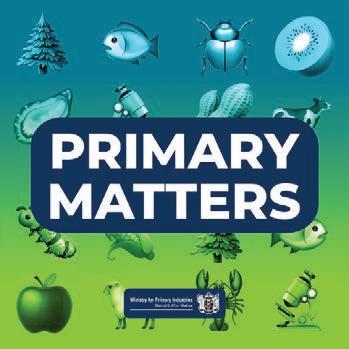
Our next series – You Do What?! – profiles people with unusual yet crucial roles to play in protecting the sector in Aotearoa New Zealand.
Future episodes will feature new projects, issues, research and people working on the land, at sea and in our forests.
compared with other foodproducing countries.
“Ongoing core consumer needs like security, safety, quality, taste, price and convenience are still expected to influence end-consumer food choices in 2050.
“Our food sector is a good position as it plans for the future, but it’ll need to grow productivity, and maintain and build further resilience.”
To read the LTIB, check out www.mpi.govt.nz/ltib
The podcast is available on all major apps, and at: https://shows.acast.com/ primary-matters/episodes
protection and other resilience measures.
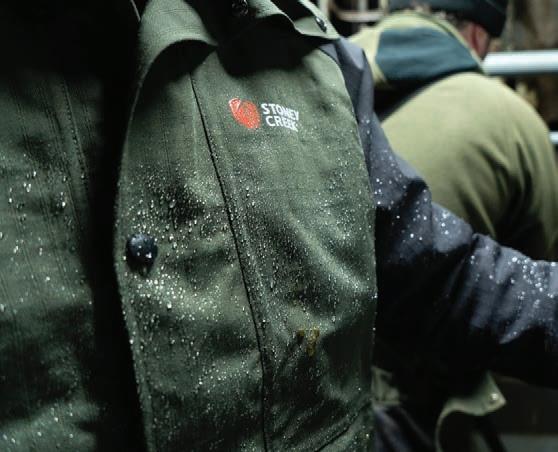
Category 1 properties are those with minor damage.
THE government buyout of cyclone-damaged properties is believed to include land currently in pastoral farming and horticulture, Hawke’s Bay Federated Farmers president Jim Galloway says.

The government announced that properties will be given a category based on the extent of the damage and the potential for rebuilding.
Category 3 – the most severe – is land that is seen as high risk and unsafe to rebuild on. Owners will be offered a voluntary buyout by councils.

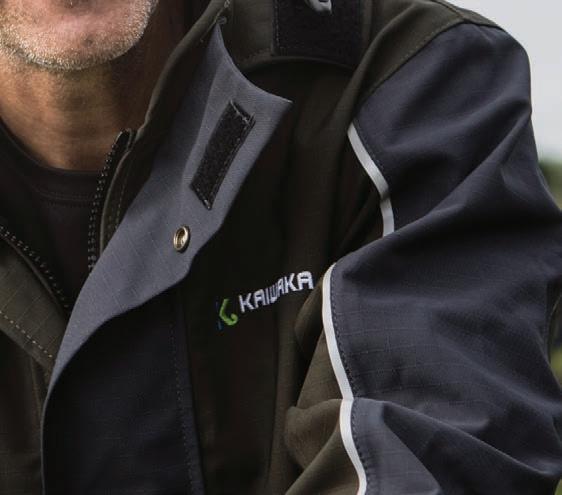
The cost will be shared between the central government and councils.
Properties in Category 2 will have local and central government assistance in building flood
“There are certainly a lot of horticultural blocks, grapes and lifestyle blocks, apples and vegetable-growing blocks caught up in it,” Galloway said.

Areas of Esk Valley, particularly the valley floor, fall into the most severe category, as do Pākōwhai and parts of Rissington, he said.

He said parts of farms could also fall into one of the three categories.

Transport Minister Michael Wood said that initial indications are that across all regions there will be about 700 Category 3 properties, and up to 10,000 homes in Category 2 areas.
Galloway said there could also be a significant number of lifestyle blocks impacted.
“There will be quite a number of them affected as well. They have lost their house and a couple of acres around their house.”
There are still a lot of unanswered questions and issues to work through, including further details around the buy-back process and how local and central government will manage it.
The government’s immediate priority has been residential housing buyouts rather than nonresidential land, he said.
According to the Hastings District Council website, this has been done to give people certainty about their homes and what to expect next.
“Further work is being done in this area, and we will be capturing your views on this as part of the engagement process,” it said.
There are no details yet of any restrictions for land use if farmland falls into one of the three classifications.
But Galloway said he expects
farmers and growers will use their common sense and not risk setting intensive horticulture operations on land that is prone to flood damage.
Looking ahead, he expected farmers whose land is reclassified to be part of that engagement process, starting mid-June.
Decisions on the details of how the voluntary buyout process will work will be made in the coming weeks.
They will include the criteria for
FLOOD
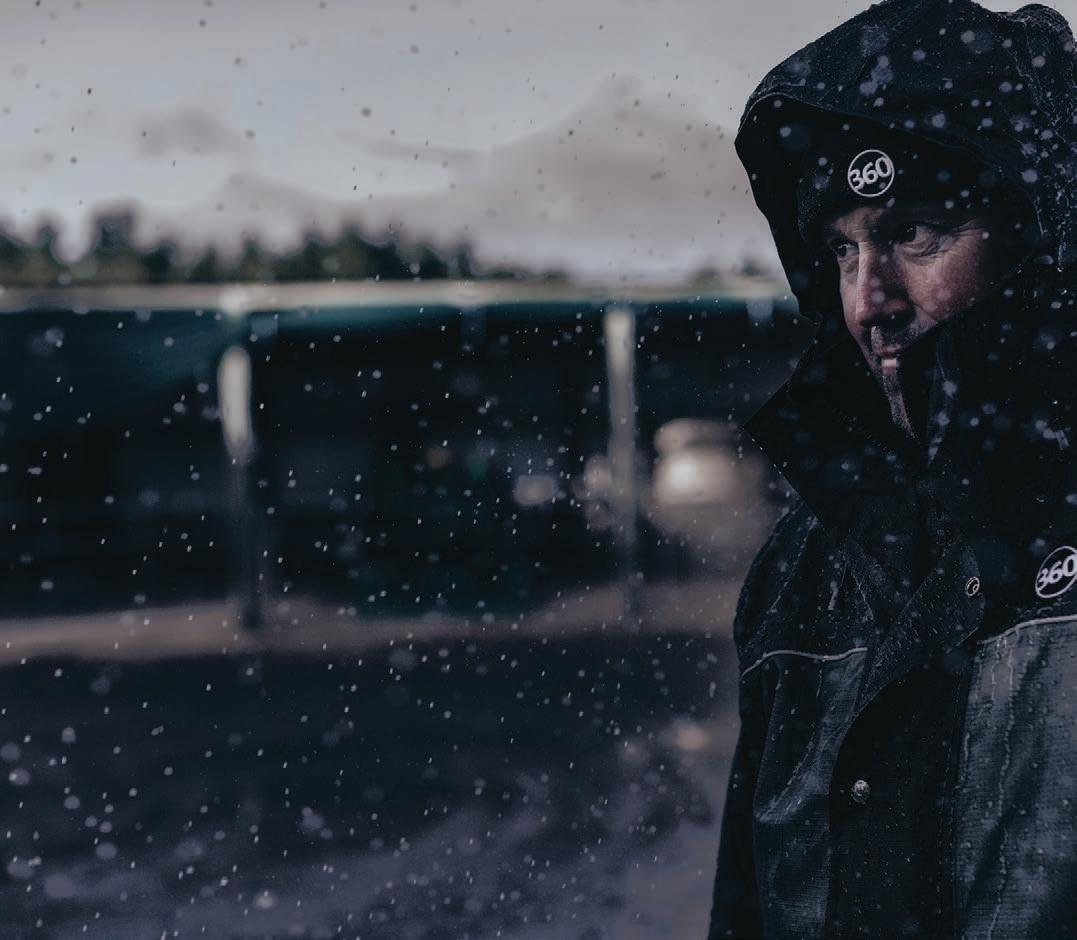
Land that is seen as high risk and unsafe to rebuild on will be labelled Category 3, and owners will be o ered a voluntary buyout.
valuation of Category 3 properties, the splitting of costs between councils and central government and the treatment of uninsured properties.
Finance Minister Grant Robertson said the immediate focus is on residential properties. “We are working with sectors such as the horticulture sector on possible support for commercial operators, and on regional plans that will provide overall support for recovery and rebuild.”
There are certainly a lot of horticultural blocks, grapes and lifestyle blocks, apples and vegetablegrowing blocks caught up in it.Jim Galloway Federated Farmers


 Hugh Stringleman NEWS Forestry
Hugh Stringleman NEWS Forestry

MYFARM is promoting an offer to investors involving the transition to native species of permanent regenerating forests currently planted in Pinus radiata.
It seeks to raise $20 million in Terra Verde Investments Limited Partnership in minimum investments of $50,000 to acquire then lease out four permanent forests.
Three existing pine forests already cover 530ha in different regions to diversify risk and a fourth 460ha forest will be planted.
Two forests are near Gisborne, at Ormond and Ngatapa, and the third existing forest is at Pongaroa in southern Hawke’s Bay. The planned planting site is near Murchison in the South Island.
MyFarm is forecasting 8.5% annual return initially with inflation-adjusted rentals thereafter.
The lessee, New Zealand Carbon Farming (NZCF), meets all establishment and operating costs.



MyFarm chief executive Andrew Watters has sent out an explanation of what he describes as a well-structured permanently regenerating forests approach to carbon sequestration, using pines as a cover crop for native plants.
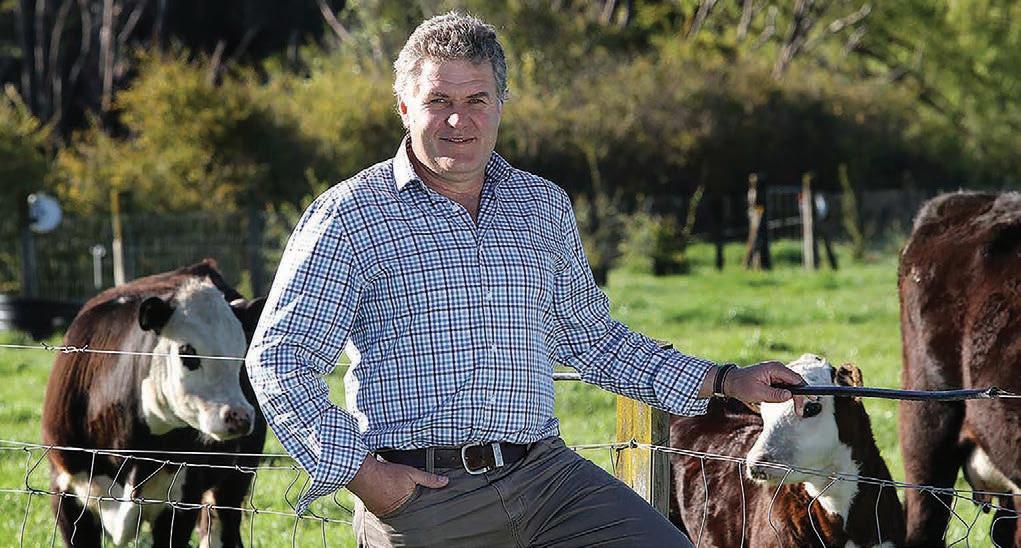
Although New Zealand needs large-scale carbon farming to meet climate change targets, establishing native forests from scratch on poor quality farmland is not practical, he said.
Native forests absorb carbon at a rate less than one-third that of Pinus radiata over the first 25 years and therefore three times the amount of land would need to be planted to achieve a desired sequestration.
“Secondly, a native forest can cost five to 10 times more to establish than a pine forest.
“This is because of plant and planting costs and the intense management required to release the plants from competing weed species and to manage deer and other animals that like to forage on young native plants.

“On balance, managing stands of pines with the aim of promoting native regeneration, is one of the best answers that we have to these issues.”
The Ministry of Primary Industries has published a review of the state of knowledge on transitioning from exotic to native forests.
“The stand scale, forest age and structure, microclimate and shade tolerance are of high importance to the structure and composition of native understorey regeneration.”
Climate is also a key factor in natural regeneration, with warmer, higher-rainfall areas close to seed sources being optimal.
MPI also pointed out that this management approach is relatively new and research has not been carried out into the weed and pest control measures that will be necessary.


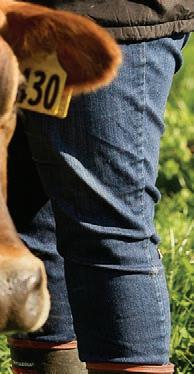

The information memorandum for Terra Verde says in the established North Island forests being purchased, natives are already present and re-establishing as strong undergrowth in gullies and around natural water sources.
“NZCF will manage the exotic trees as a nurse crop with careful management and planned interventions to create the


environment for a transition to a biodiverse native forest.”
NZCF has had an independent team of forest scientists working on its regeneration programme for the past four years.
It has established a series of lightwell gap optimisation trials throughout the conservation estate.
NZCF directors are Matthew Walsh and Bruce Miller, both also behind New Zealand Forest Leasing and its recent $60m purchase and long-term lease-back agreement with NZ Rural Land Company.




Creating

Genetic information is key in unlocking potential profit on Kiwi dairy farms. Through better rates of genetic gain farmers with a herd size of 450 cows could unlock an additional $39,000 in farm profit every year.
To give New Zealand the best chance of achieving internationally competitive genetic gain, we believe one key aspect is to improve NZAEL’s Breeding Worth, with genomics and make it available as one BW for the sector. By doing this we can help lift the performance and profitability of every New Zealand dairy herd.
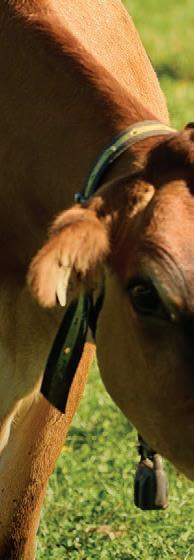
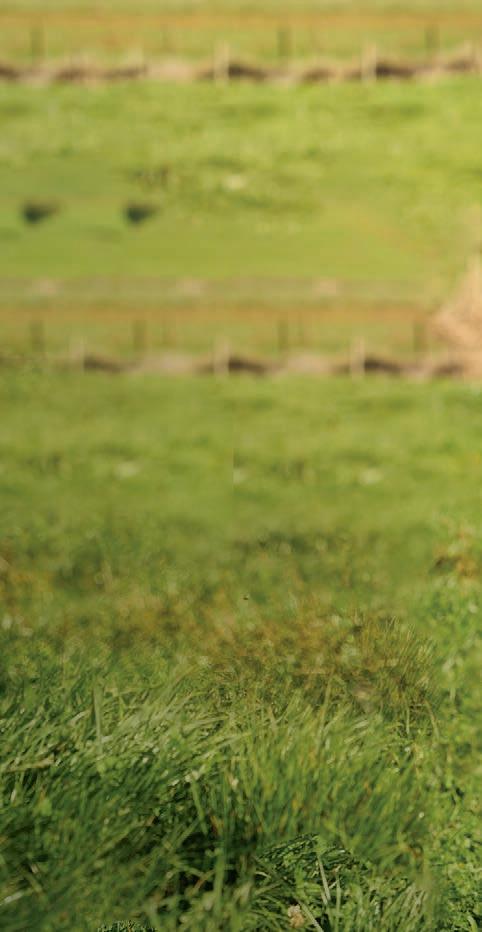
Read, listen to, and watch what is happening in Aotearoa New Zealand’s food and fibre sector by scanning the QR codes or following the links. Answer the questions to complete the exercises.




Ash Phillips is a farm adviser (kaitohutohu ahuwhenua) in Wairoa on the East Coast. Ash works alongside farmers investigating new opportunities. In this Opportunity Grows Here video, Ash talks about what she does and why she loves her role.
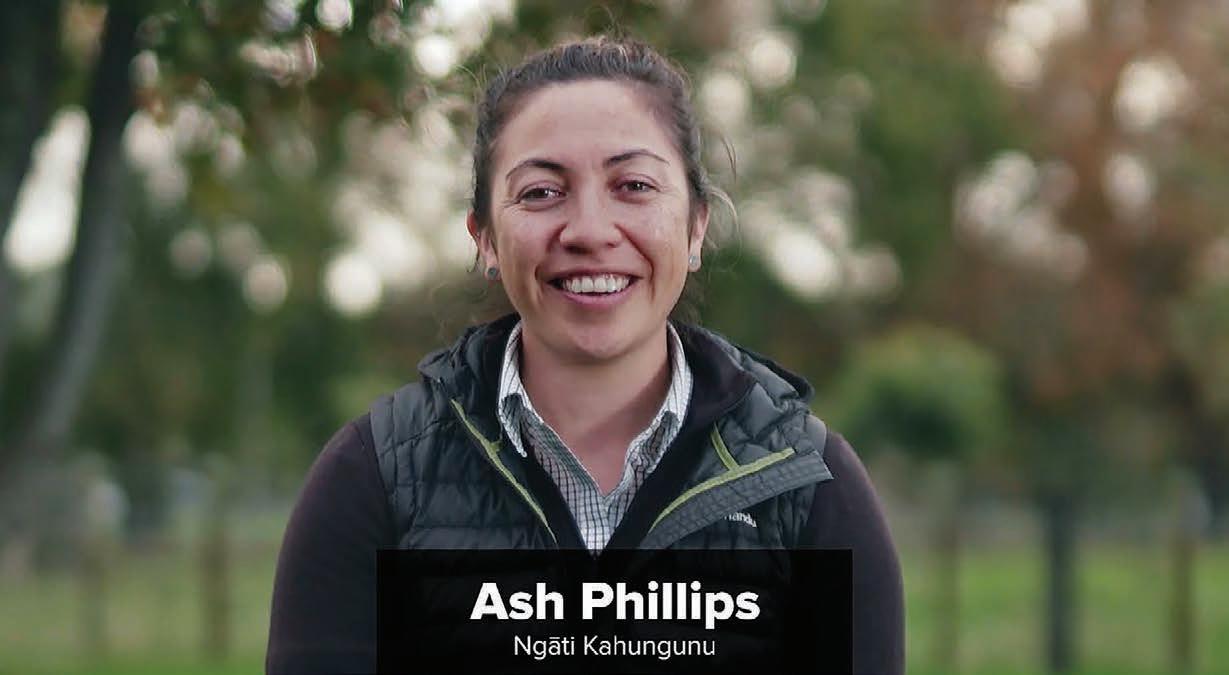
http://lnkiy.in/farmadviser
Have a go:
1. One of the farm projects Ash is involved with is fencing off waterways and riparian planting. What is riparian planting?
2. What are the benefits to the farm and the community from fencing waterways and riparian planting?
3. A key part of Ash’s role is reporting actual production against budget, and then identifying what?
4. What are the things that Ash loves about her role as a farm adviser?
Stretch yourself:
5. Check out Careers.govt.nz and list the steps you would take to become a farm adviser

Watch this
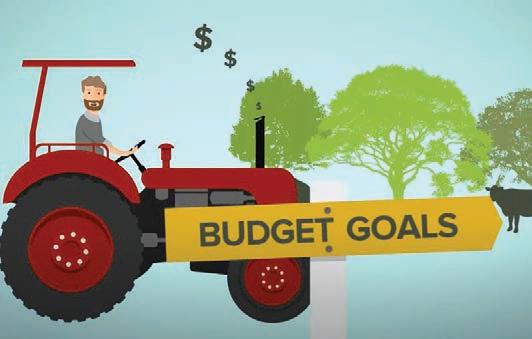
Take a look at the DairyNZ video and see how budgeting helps farmers run a successful and profitable business.
http://lnkiy.in/dairy-budget
Have a go:
1. Why is developing a budget for your farm important?
2. What’s the first step in preparing a budget?
3. What’s the aim of a budget?
4. What’s the difference between an annual budget and a monthly forecast?
Stretch yourself:
5. What would happen if your monthly spending exceeded monthly income for a given month?
6. How would having an up-to-date forecast help?
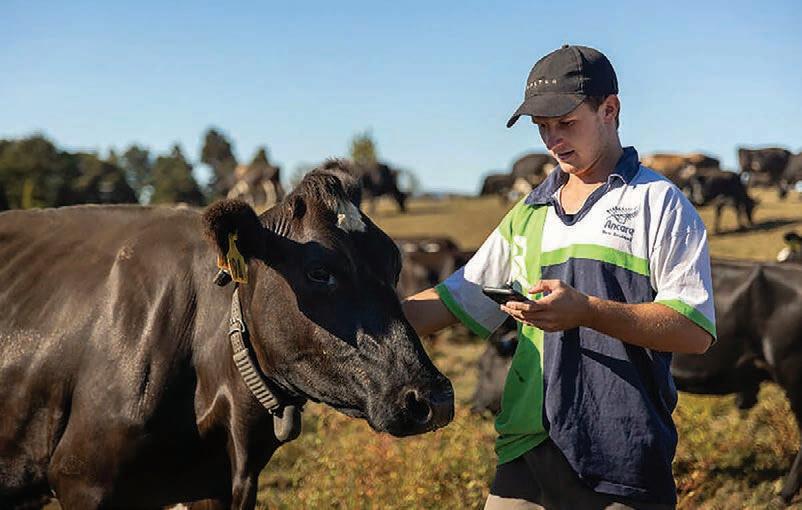
In this episode of the Road to Rural podcast, Callum Woodhouse tells us his pathway to being part of the research and development team at Halter Ltd.
http://lnkiy.in/smartcollars
Have a go:
1. What would a typical day look like for Callum?
2. How does the technology of Halter make farmers’ lives easier?
3. What skills do you think someone working in research and development needs to excel at the role?
4. What is Callum’s tip for helping set secondary school students up for a career in agriculture?
5. Outside of the dairy sector, what opportunities can you think of for smart collars?
Researchers have been developing a RAT for farmers to use to detect facial eczema in livestock.
http://lnkiy.in/RAT-Livestock
Have a go:
1. What is facial eczema and why is early detection important?
2. How much is it estimated that facial eczema costs the New Zealand economy each year?
3. How do farmers currently test for facial eczema?
4. What are the benefits of facial eczema rapid antigen tests?
Stretch yourself:
5. What funding and grants has Tokaora Diagnostics received to help research and develop the idea?
6. How does this support new companies and the industry?

Rural communities (hapori taiwhenua) are still busy scraping up silt, re-fencing paddocks, and hammering out repairs following damage caused by Cyclone Gabrielle. Experts are looking at what is best long term for communities.
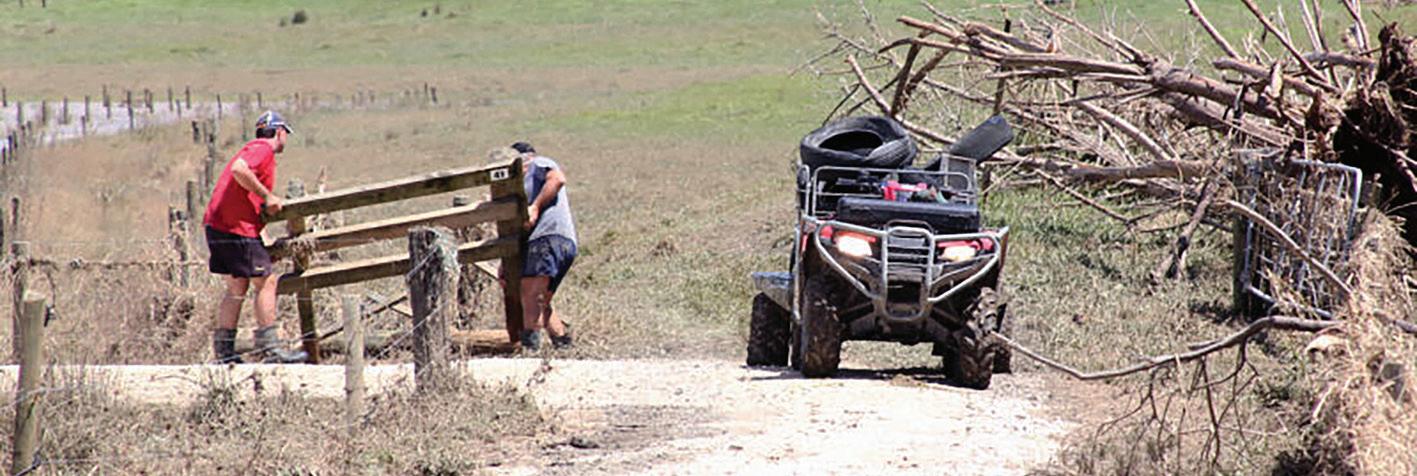
http://lnkiy.in/rebuilding-nz



Have a go:
1. Can you list some of the different ways farms were affected by Cyclone Gabrielle?
2. What is the first reaction of what needs to be done by individuals living in the area?
3. Thinking long term and at a community level, what options should also be considered?
Stretch yourself:
4. What makes these decisions for the future so difficult?
5. Climate and economic impacts are forcing some farmers to look at land use change. What types of advisory services would help farmers with these decisions?


Five and a half years of research have resulted in the development of new technology to help both farmers and processors measure meat quality.
http://lnkiy.in/red-meat-quality
Have a go:
1. What does meat marbling, tenderness and intramuscular fat mean for the consumer and why is it important to measure?
2. What are the three products released by Australian company MEQ Solutions?
3. How do these products differ from earlier versions using ultrasound systems?
Stretch yourself:
4. What are some examples of on-farm decisions that could be based on the data that is captured?
5. The probe allows 14 to 15 carcases to be measured in a minute. Why is early grading of carcases a benefit for processors?
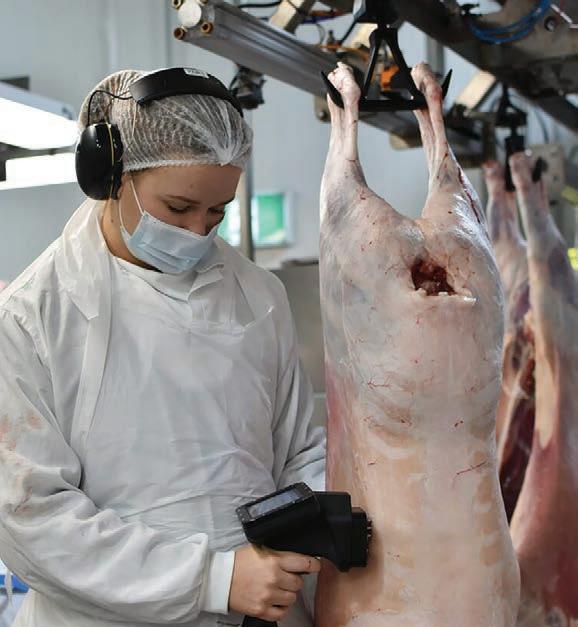
Learn about on farm scenarios, use real life case studies and understand what it takes to work in the ag sector in New Zealand. Ag&Ed is published weekly, and is a handy tool for parents, educators or anyone interested in agriculture. Students will also have the opportunity to apply for our Ag&Ed Innovation Challenge, where 20 lucky students will work in teams to address key issues in the ag sector. Applications now open!
Brought to you in partnership with Ministry for Primary Industries

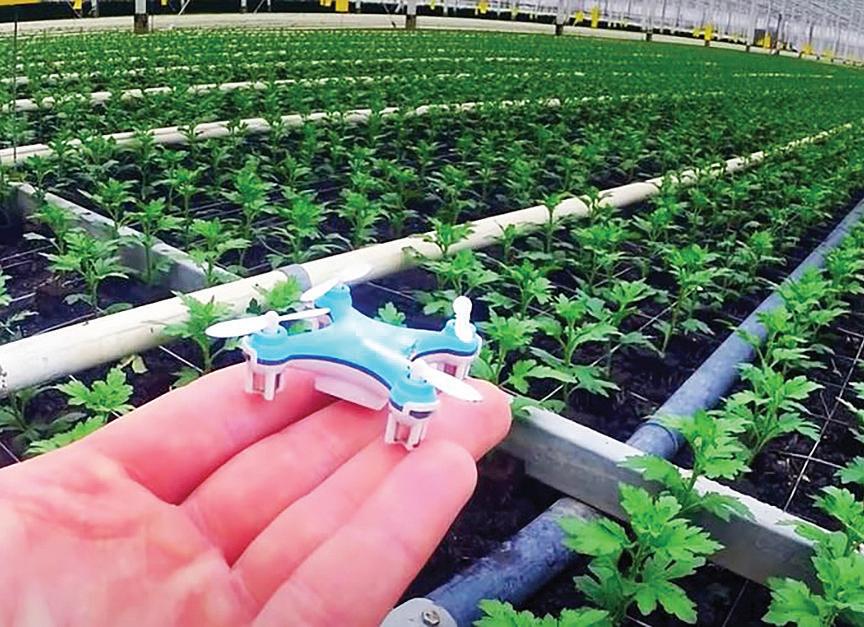
The Netherlands is producing 20 times more food using a quarter of the water to make it the world’s number two produce exporter. See how this is being achieved.
http://lnkiy.in/future-food
Have a go:

1. What does sustainability mean to you and why is sustainable food production important?
2. How do greenhouses help grow plants more efficiently?
3. How many kilograms of tomatoes can be grown in this system during a season per square metre compared to an open field in Spain?
4. Why is water use such an important topic?
Stretch yourself:
5. How many different pieces of innovative technology/ideas can you list from the video?
6. How is AI used? What’s your opinion on the use of AI in food production?
7. ‘Innovations start by networking’. What does this mean to you and what is an adviser’s role with this?
Are you a parent or teacher and want to receive this educational resource every week? Send us an email to sign up at aganded@agrihq.co.nz
 Claire Bleakley Wairarapa
Claire Bleakley Wairarapa
WHAT is it that AgResearch considers is outdated in New Zealand laws, in “Outdated genetic laws hobble NZ research” (May 29)?
The Environmental Protection Authority is open to receive genetic engineering (GE) applications; the only thing is it requires evidence of safety to the environment and human health if released. This appears to be a big problem for GE engineers and patent holders.
In 1997 we were told that GMO/GE was safe and precise. Yet after 20 years it is a failed and aging technology whose promises have not come to fruition. Yields have not improved, weed and insect resistance has increased herbicide applications, causing health and environmental problems, seed stocks in the United States are now GE contaminated. GE animals are born deformed and suffer cruelly.

THERE has always been something soothing about gazing at a field of daffodils. It’s a signal that spring is finally on our doorstep and offers hope that the warmer weather is finally on its way.
The bright yellow flowers have also been used as a beacon of hope for cancer organisations around the world.
“flower of hope” is giving just that to those impacted by dementia.

It has been discovered that growing the plants at a higher elevation encourages them to produce more galantamine, an alkaloid substance that helps raise the levels of the chemical acetylcholine in the brain. This chemical is lower in people living with Alzheimer’s. It is not a cure, but raising levels of acetylcholine eases symptoms like memory loss while slowing down the disease’s progression.
Leftfield Innovation crop technologist
Nick Pyke says galantamine can be found in a variety of plants, and countries such as China and Bulgaria were already looking at options for the perennial, which doesn’t die off after harvesting like most plants.
EDITOR Bryan Gibson 06 323 1519 bryan.gibson@globalhq.co.nz
EDITORIAL Carmelita Mentor-Fredericks editorial@globalhq.co.nz
The flowers were first used for this by Canada in the 1950s, when volunteers organising a cancer fundraiser decorated tables with daffodils because they believe they signalled hope that cancer could be beaten.
A 2021 Dementia Economic Impact Report commissioned by Alzheimer’s NZ and compiled by the University of Auckland makes sobering reading.
The report shows care partners of people living with dementia provide nearly 53 million hours per year of unpaid care, valued at $1.19 billion. That is because almost two thirds of people affected by dementia live at home for most of their time with the condition.
ISSN 2463-6002 (Print)
The continued promotion of AgResearch’s GE ryegrass does not consider the 20 years of development, or the millions in taxpayers’ monies that have been spent in engineering this grass. The US trials at a cost of $25 million over five years failed to produce any meaningful outcome. AgResearch’s application to Australia to conduct further trials has been withdrawn. We don’t need to panic as we have available today highperformance mixed pasture plants that reduce greenhouse gasses significantly better.
We know that existing endophytes are needed for certain plants to thrive, so why engineer them? Conflicts of interest for patent holders affect independent safety when exploiting nature for commercial gain. Leave nature alone and move to true climate action with organic methods and stay GE free.
ADVERTISING
Andy Whitson 027 626 2269 New Media & Business Development Lead andy.whitson@globalhq.co.nz
Daffodil production is already underway in Wales and now five Canterbury and central Otago high-country sheep farms are involved in a southern hemisphere trial, which is funded through Our Land and Water’s Rural Professionals Fund.
Neal Wallace 03 474 9240 neal.wallace@globalhq.co.nz
Colin Williscroft 027 298 6127 colin.williscroft@globalhq.co.nz
Annette Scott 021 908 400 annette.scott@globalhq.co.nz
Hugh Stringleman 09 432 8594 hugh.stringleman@globalhq.co.nz
From there, the idea gained momentum throughout the world and in 1990 the Cancer Society of New Zealand began its annual Daffodil Day street appeal, selling the flowers to raise much-needed funds.
Gerald Piddock 027 486 8346 gerald.piddock@globalhq.co.nz
Steve McLaren 027 205 1456 Auckland/Northland Partnership Manager steve.mclaren@globalhq.co.nz

ISSN 2463-6010 (Online)




Debbie Brown 06 323 0765 Noticeboard/Word Only/Primary Pathways classifieds@globalhq.co.nz
Grant Marshall 027 887 5568 Real Estate Partnership Manager realestate@globalhq.co.nz
Jody Anderson 027 474 6094 Waikato/Bay of Plenty Partnership Manager jody.anderson@globalhq.co.nz
Donna Hirst 027 474 6095
The New Zealand plots will be grown at varying elevations from sea level to 650m to determine which conditions provide the highest levels of galantamine. Small plot trials have shown commercially viable amounts of galantamine can be produced.
Lower North Island/international Partnership Manager donna.hirst@globalhq.co.nz
Andrea Mansfield 027 446 6002 Salesforce director andrea.mansfield@globalhq.co.nz
Four out of five New Zealanders know, or have known, someone living with dementia and the illness impacts more women than it does men. Dementia numbers are increasing at a faster rate among Māori, Pasifika and Asian populations than among European New Zealanders.
PRODUCTION
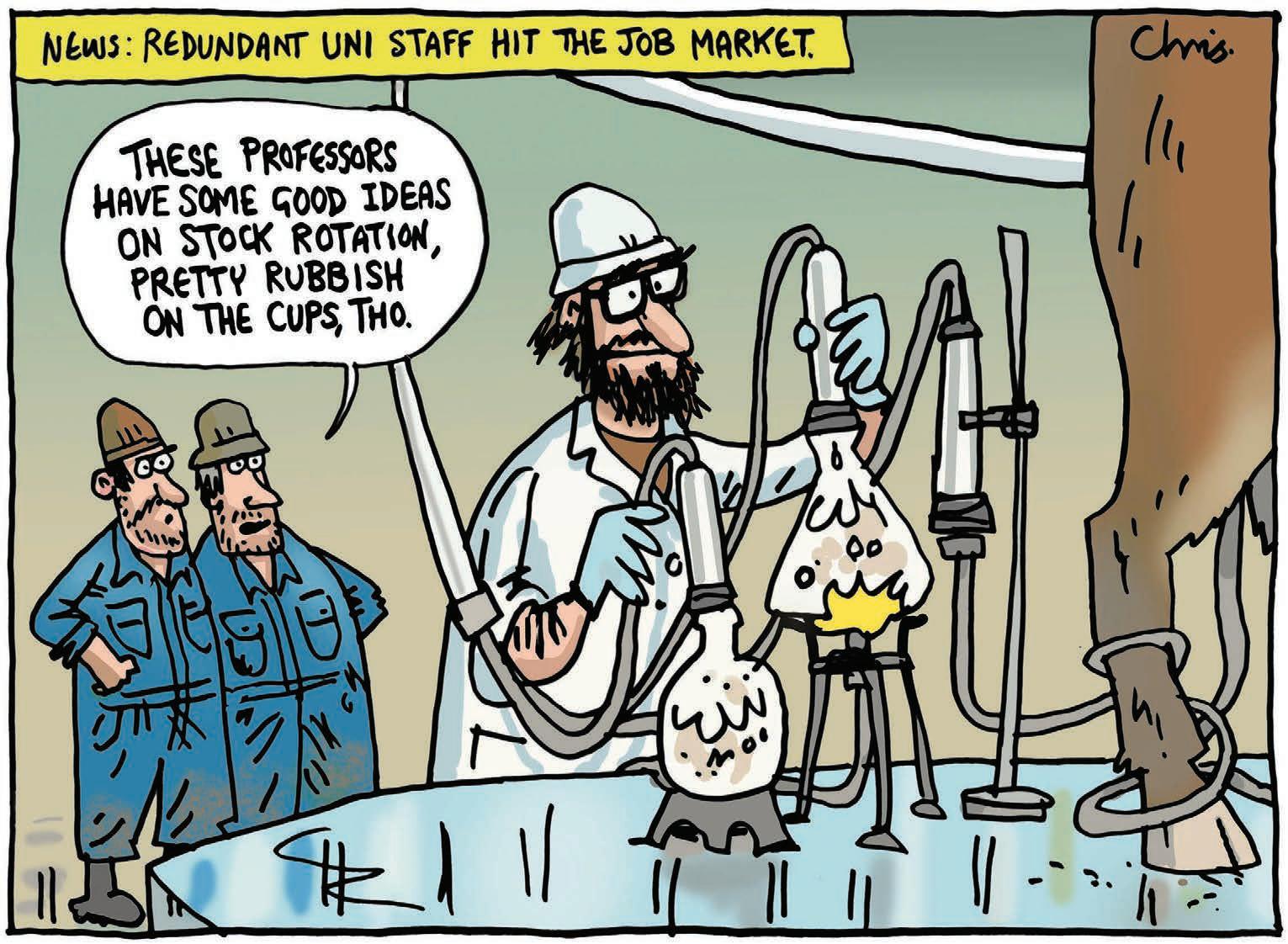
The report found dementia will cost NZ nearly $6bn a year by 2050 and one in four New Zealanders will die with the condition.
Lana Kieselbach 027 739 4295 production@globalhq.co.nz Advertising material adcopy@globalhq.co.nz
Richard Rennie 07 552 6176 richard.rennie@globalhq.co.nz
Nigel Stirling 021 136 5570 nigel.g.stirling@gmail.com
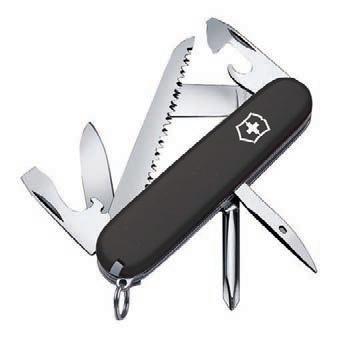
But it is new research that has put daffodils back in the spotlight, and the
PUBLISHER Dean Williamson 027 323 9407 dean.williamson@globalhq.co.nz
Grant Marshall 027 887 5568 South Island and AgriHQ Partnership Manager grant.marshall@globalhq.co.nz
Javier Roca 06 323 0761 Livestock Partnership Manager 027 602 4925 livestock@globalhq.co.nz
Almost 70,000 New Zealanders live with dementia but experts believe that number will balloon to 170,000 by 2050. Worldwide estimates have more than 50 million people currently suffering from dementia.
SUBSCRIPTIONS 0800 85 25 80 subs@globalhq.co.nz LK0107425©
Printed by Ovato NZ Ltd Delivered by Reach Media Ltd
For those who have had to helplessly watch friends and family suffer from the illness, the new research – and possibly high-country daffodils – will offer some much needed hope.
With growing calls to connect the next generation of Kiwis to the land, Farmers Weekly has put together a guide for first-time farm buyers. Charlie Williamson spoke to industry stalwart Brian Peacocke.
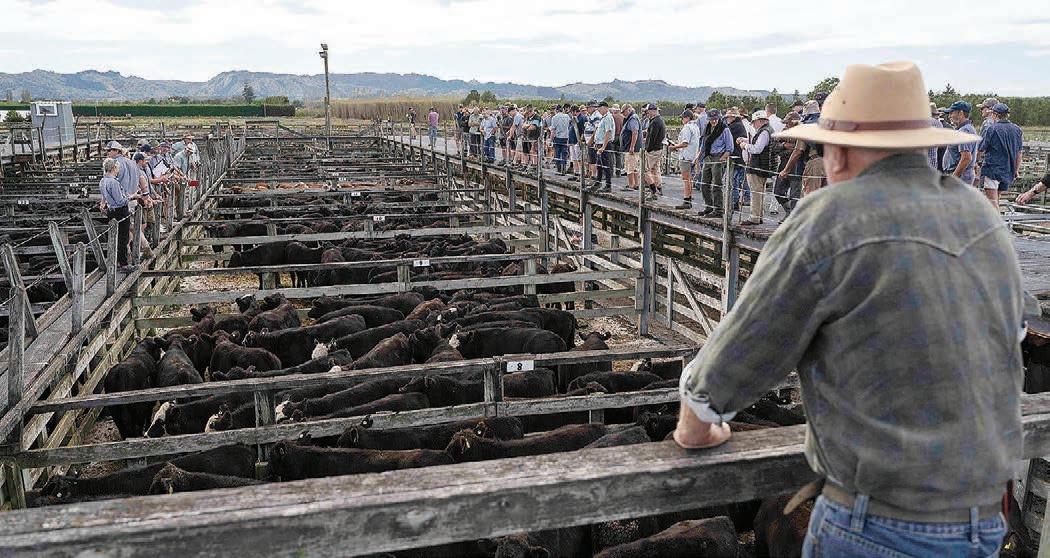
BRIAN Peacocke, who has worked in the rural real estate industry for more than 30 years, including 11 years as rural spokesperson for the Real Estate Institute of New Zealand, stresses that due dilligence is key when considering a farm to buy.
This must include assessing the property’s suitability for day-today farm operations, writing up effective budgets for every aspect of the operation, weighing the risks and predicting opportunities.
These key steps will save any headaches down the track and give bank managers the confidence to back you throughout your agri journey. They include:
The overall operation
Livestock numbers and production: Verify current and historical livestock numbers on the farm as well as livestock production. Once authorisation is given by the vendor, official documentation can be obtained from companies to verify production coming from that farm in terms of volumes and weights. This gives potential buyers a solid grasp on production coming off the farm against livestock numbers. Buyers should be aware that they have the opportunity to obtain information that is accurate and credible, which gives them the ability to budget much more accurately.
Provision for existing feed: It is important to verify the accuracy of the agreed feed on the property (the correct quantity and quality of feed). If a specified amount of silage or baleage has been agreed on in the pre-purchase agreement, ensure the vendor is sticking to the agreement.
Dwellings and titles on the property: Builders’ reports, healthy homes certifications and a solid overview of the various dwellings on the property will save any headaches down the line. Review titles to the property, which should be done through a legal professional, who will carefully review the land titles and what the various items on the title mean.
If needed, get an LIM (Land
Information Memorandum), which is a legally-binding document that states everything local councils know about the history of a property, and any issues that may affect it. Purchasers who want to make an offer on a property can enter into a purchase contract subject to a LIM report. This provides information including rates, consents, permits and code compliance for work done on the property.
Equipment and stock: If there is an agreement between the parties to sell certain stock and equipment, ensure both parties are satisfied – for example, if it is stated in the agreement that maintenance is to be undertaken on machinery, ensure this is done prior to settlement.
Rural connectivity: Local schooling, rural delivery and availability of services are important when considering a property. Something often overlooked by people purchasing rural property is the availability of a strong internet connection. Rural internet can be expensive in some areas, although products like Starlink have lowered costs significantly.
Fertiliser history: Soil tests using an agronomist as well as assessing historical fertiliser application records will determine this. Once authorisation is obtained by the vendor, agents can access official documentation from fertiliser companies about historical fertiliser records.
Water supply: Ensure a solid understanding of water sources for the farm, as well as any water rights (rivers, dams, irrigation, springs), and check over rainfall records in the area.
Overhead costs: Rates for the property, insurance and power costs.
Securing finance Budgets: Consider having a property valuation done first via a reputable source. Then check the affordability of the property, which involves using various budgets and looking at debt servicing, interest rates and cashflow. A cashflow budget is critical at this stage.
Come prepared: An important
factor when trying to obtain finance is proving that you have done your research in regard to valuations, interest rates, production outflow on the property and how that will affect debt servicing. Financers will back the people who do their due diligence and present a solid business case.
Land use options: Understand which land use options are suitable given the property’s topography, climate, soils and location. This ties into financial sustainability as it determines the potential to diversify the operation into different products/markets. For example, some parts of a sheep and beef operation could be diversified into arable or vice versa.
Given the current price of carbon, it is important to check whether there is scope for forestry,
Do you know someone who deserves a story in Farmers Weekly?
Why not write it yourself?
We’re keen to hear local stories about the innovators, inspirations and characters that keep our communities ticking over. Farmers tell the best stories and we want to hear yours. farmersweekly@agrihq.co.nz
riparian plantings or other native plantings, and therefore the potential for carbon credits.
In many cases there are also opportunities for sand, minerals, metal deposits and other resources to be mined and extracted. An example of this is properties throughout Waikato that had sand deposits; they benefited hugely from the recent construction of the express motorway.
Tourism is also allowing many New Zealand farms to diversify their operations, making it important to understand whether agritourism would be a viable option in the future.
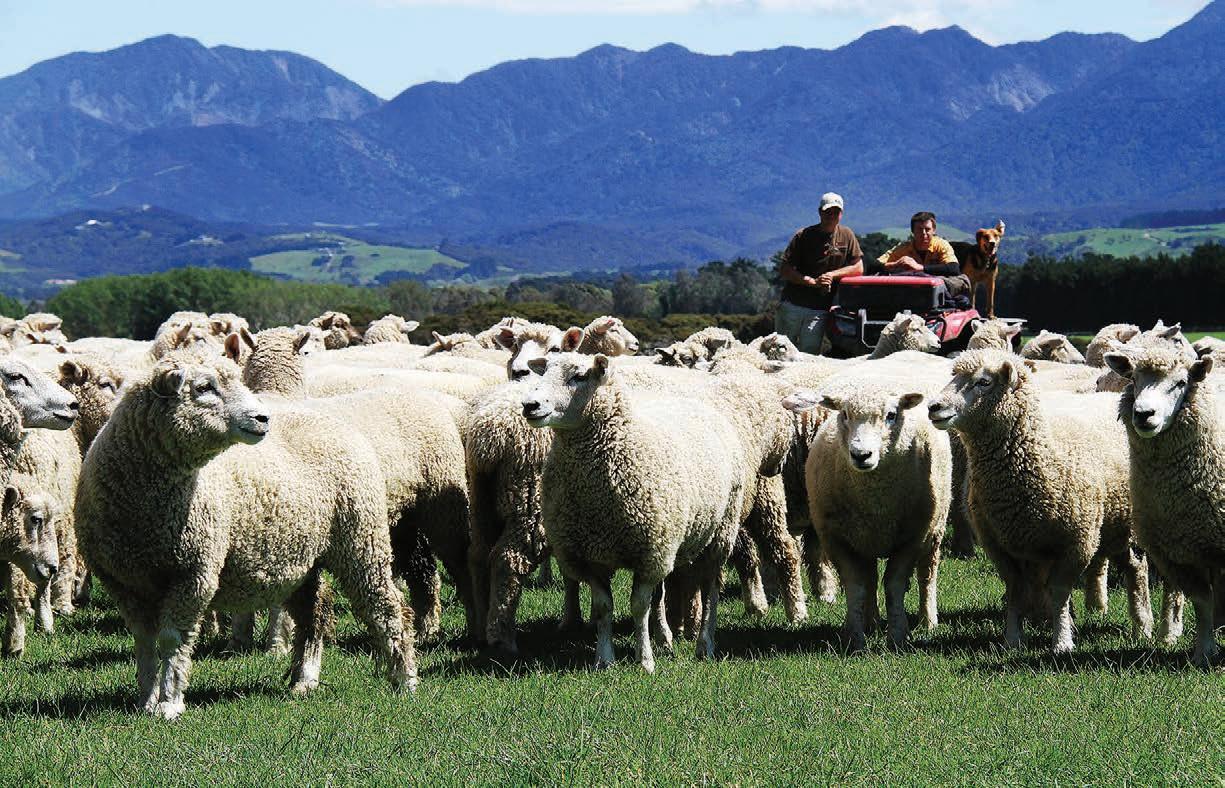
Animal health: Buyers need to know if the area is prone to facial eczema, internal parasites or any other minor health issues that may affect stock, as well as a history of any serious health issues in the area, such as M bovis or TB. A good place to start is by talking to a local vet about what to expect in the area.
Environmental: Look for improvements that have been made to improve biodiversity or preserve the environment on the property. It is important to look into current environmental regulations affecting the property, and if there are any potential liabilities surrounding this.
Emissions: Ask about current on-
farm emissions for the property, given the potential for He Waka Eke Noa emissions pricing in the future, and gain an understanding of whether on-farm emissions can be offset by forestry on the property.
Climate and susceptibility to climate events: Get a clear handle on the climate history in the area, and potential risks based on climate changes. Look at rainfall averages for the area and whether it’s prone to flooding, strong winds or extreme temperatures. It is also important to understand the topography of the area, along with the soil’s ability to handle different extremes of weather.
• These guidelines for first-time farm purchasers should not replace liaising directly with professionals such as lawyers, farm consultants and accountants when making these decisions, as they will ultimately provide the best hands-on advice.
Buyers should be aware that they have the opportunity to obtain information that is accurate and credible, which gives them the ability to budget much more accurately.
So while I personally know nothing about the carbon profile of buildings, the experts tell me that housing cows has a carbon footprint all of its own.
In addition, the United States’ National Public Radio (NPR) website contains an article assessing whether grass-fed beef is better for the planet.
Feedlot beef is, according to NPR’s The Salt science podcast, finished on corn, which can give the animals “liver abscesses”, necessitating the regular feeding of antibiotics.
THE Climate Change Commission head, Rod Carr, recently told me that Europe’s barn-fed livestock will increasingly have a lower carbon footprint than meat produced in New Zealand.
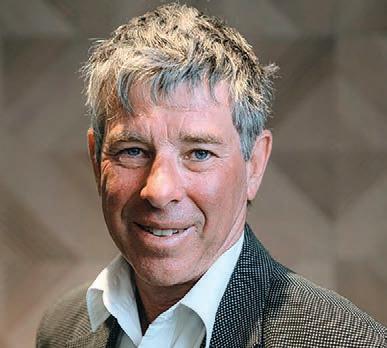
He went on to add that “because they [Europe] have a different farming practice – that is, animals in barns – they have the potential to have much lower emissions per kilo of meat and milk protein than NZ”.
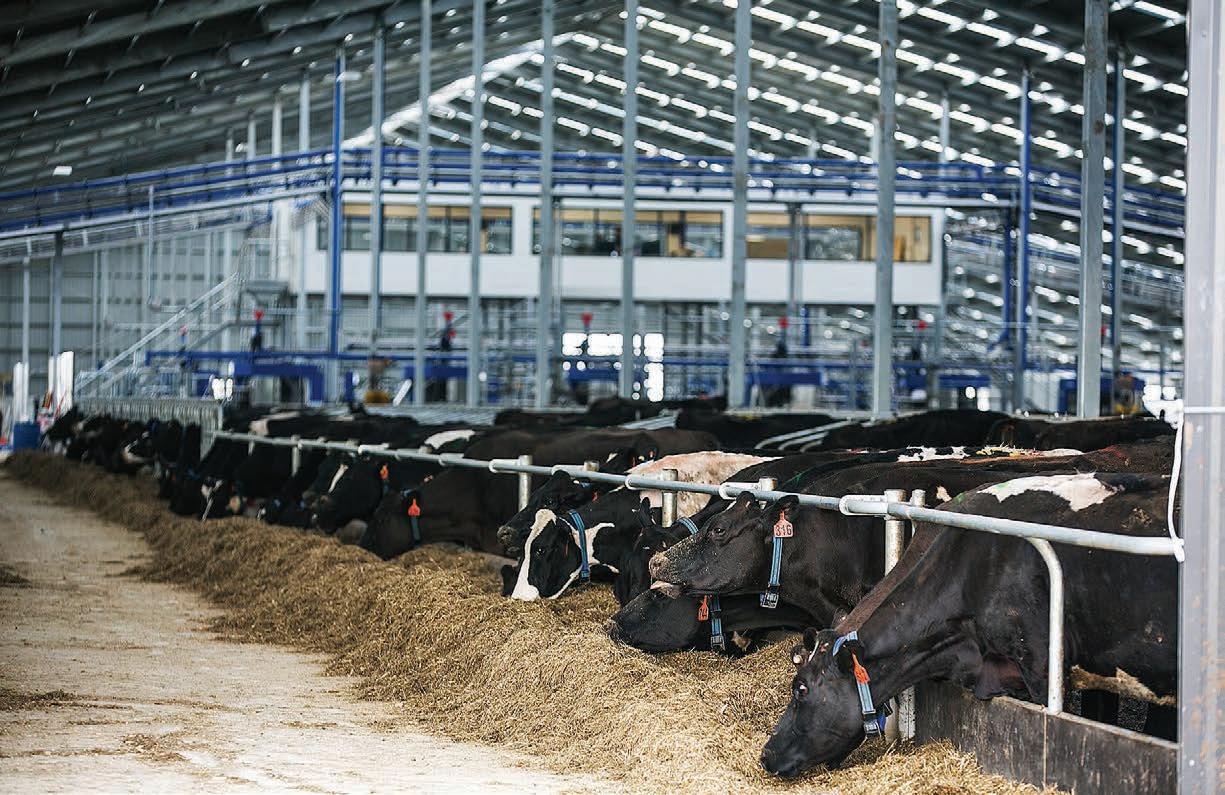
He had previously referred to feed supplements that had reduced methane emissions in the order of 80%. Those supplements have to be administered daily so the livestock have to be accessible as in barns.
While I have respect for Dr Carr, I had some difficulty with his approach.
The fact that the Europeans can reduce methane emissions by giving their cows daily supplements is largely irrelevant.
I’m sure that if you do house cows and feed them methanereducing supplements then they will be burping less methane than cows on pasture, but I’d respectfully suggest it isn’t that simple.
For a start there’s the building of the cow barn, and the Economist tells me that “buildings are responsible for almost 40% of global energy related carbon emissions”.
We know how carbon intensive steel making is, as witnessed by our $140 million subsidy to NZ Steel.
The North American website run by the large HMC architects claimed that it is “understood by 2050 the embodied carbon of material in buildings will account for 60% of GHGs”.
Grass-fed beef also provides multiple benefits, including “restoring soil microbial diversity and making land more resistant to flooding and drought”, again according to NPR. It then suggests that “because grasses trap atmosphere carbon dioxide, the grass-fed system can also help fight climate change”.
In addition, according to the website CarbonCloud, 1kg of cornmeal has a carbon footprint of .79kg of CO2. A cow eating 2kg of cornmeal daily is responsible for over 1.5kg of CO2.
It gets better. In the Netherlands the government is worried about its GHGs and is buying out 20% of its farms and a further 30% will have to cut production.
They’re worried about nitrogen and ammonia from the excrement of housed animals.
Then there’s the water use. Housed cattle require considerably more water than those on grass.
Where I’m getting to is the fact that the Europeans can reduce methane emissions by giving their cows daily supplements is largely irrelevant and we shouldn’t let them get away with claiming they’re more environmentally friendly than we are.
They’re not.
Further, why the Climate Change Commission (CCC) wants to remind us of the fact is surprising.
The debate needs to be changed from simply the analysis of a cow’s burps and farts to one of total carbon footprint.
If we did that, NZ agriculture would look even better than we currently do.
For a start we don’t house cows, so we don’t have the continual carbon footprint that a building does.
We feed grass so there is no requirement for tractors to plough paddocks and then sow and harvest corn before transporting it to housed animals.
Our grass-fed animals don’t need daily doses of antibiotics to just ward off abscesses caused by corn consumption.
They need a lot less water to produce a kilogram of beef, which is vitally important in a world short of water.
Finally, we don’t have excrement ponds exuding nitrogen and ammonia. Europe has the world’s most intensive livestock production. Conversely, we have a natural and healthy system with world-class animal welfare. My firm belief is we keep doing what we are and leave the Europeans to their own GHG systems. I’d suggest our CCC should congratulate us on what we’re doing.
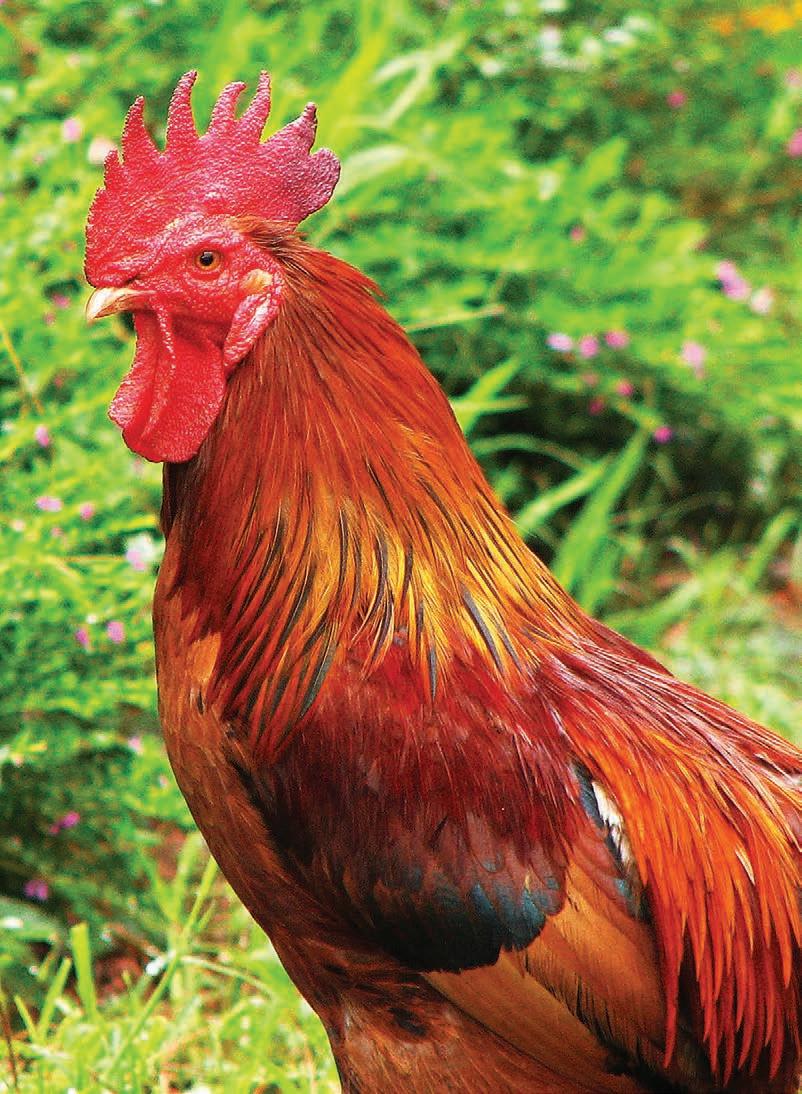
Another story that had massive international coverage but surprisingly none in NZ involved electric vehicles. Norwegian shipping giant Havila Kystruten has banned all electric, hybrid and hydrogen cars from its ships as “the risks are significant”.
This was after the giant vessel Felicity Ace sank off the Azores earlier this year because of fires caused by an electric car. Apparently a single vehicle fire caused by an electric car battery
can be “catastrophic”.
I wonder what will happen here. Surely the Cook Strait ferries will need to ban electric cars in the interests of the safety of the rest of us Strait-travelling Kiwis? Someone should tell Worksafe and get them mobilised, in the interests of public safety of course. Another thought would be to encourage diesel utes on the ferries. Their batteries are safe. The government should be encouraging their purchase.
THERE are some stories not yet told that should be.
The 1978 election was the first that I was able to vote in.
My father was standing as the Values candidate for Pahiatua, so I had little choice really.

It was a Saturday and the Takapau cricket team had a match in the Tararua district against Waitahora.
We travelled down there and although I can’t remember, I’m sure we would have got our usual thrashing.
I noticed that the local hall was an election booth.
I had a quiet word with my team
THE recent decision in “one of the most complex and longrunning” trademark cases in New Zealand was a loss for the country’s mānuka honey producers.
But it also served to highlight just how ill-equipped our laws are for protecting Māori taonga (treasures) and mātauranga Māori (traditional knowledge).
The case, decided by the Intellectual Property Office of NZ (IPONZ), centred on whether the term “Manuka Honey” could be registered by the Mānuka Honey Appellation Society as a certification trademark in Aotearoa NZ. The society represents a group of NZ producers.
Registration would have allowed the society to exclusively use the Manuka Honey name (without the tohutō or macron over the “a”) when marketing honey made from the nectar of the mānuka (Leptospermum scoparium) plant.
Honey producers in Australia opposed any such move.
Certification marks are a type of trademark where the owner independently certifies that their goods possess certain defined characteristics. The marks enable owners to commercialise products that are sourced from specific geographical areas or produced using particular methods.
If it had been successful, the society would have allowed only NZ-based producers to use the trademark on their products.
The mānuka case dates back to 2015, when NZ honey producers lodged an application for the Manuka Honey trademark.
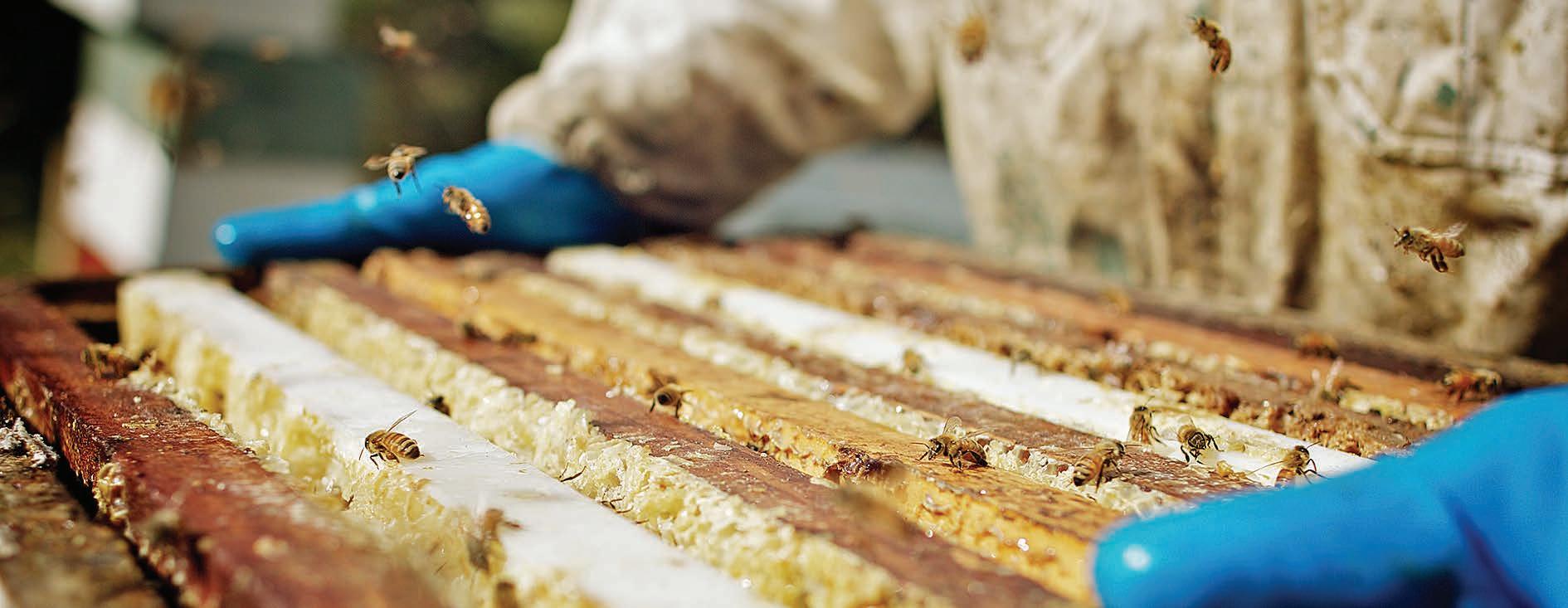
The Australian Manuka Honey Association opposed the application, arguing the proposed trademark was merely descriptive and not distinctive.
In other words, the Australian producers claimed the trademark
Continued from previous page and there were nine of us eligible to vote so I promised to shout them all a beer at the Norsewood pub on the way home if they voted for my father.
I assume that this is illegal behaviour but hope that some sort of statute of limitations has now passed after 45 years.
The next day’s paper with the booth results of all electorates showed that the Values Party had won just one booth and even more surprising it was in a conservative rural Pahiatua electorate polling station where my father got not nine but 11 votes, and John Falloon just nine.
They might have beaten us at cricket but would have been left scratching their heads for some time after that election.
Practical jokes are always fun
In the meantime, mānuka producers in NZ could consider alternative certification trademarks or forms of cultural branding to distinguish their products from Australian-made Leptospermum honey.
simply described honey sourced from the nectar of the mānuka tree. This is important, because one of the key requirements to receive a certification trademark in NZ is that the mark must distinguish the goods of one producer from those of another.
The distinctiveness test involves assessing whether the “average consumer” would regard the certification mark as a normal way of designating characteristics of the goods in question.
IPONZ concluded that the average consumer would not find the proposed Manuka Honey mark to be distinctive. This was largely because this term was already used extensively by both NZ and Australian honey producers before the application was lodged.
Although mānuka is a kupu (word) sourced from te reo
but more fun when you are the perpetrator than the victim.
I was cleaning out a shed when I found a several-years-old Hawke’s Bay Today newspaper still wrapped in cellophane and looking pristine.
It sat in my ute for a few weeks waiting for an opportunity.
Early one morning I swapped it for the newspaper at my neighbour’s gate and for a year enjoyed the thought of their confusion that day.
When I finally fessed up to Dennis and Debbie they told me how the more they read that paper the more confounded they got, reading about forgotten wars and sports results that didn’t make sense.
They finally noticed the date and complained to the newspaper, who apologised profusely and were themselves perplexed how
Māori, the Leptospermum plant is also native to Australia, where it is commonly known as “tea tree”. Some scientists believe that Leptospermum scoparium likely originated in Australia and travelled to NZ before the last Ice Age, probably with the assistance of birds.
Today, over 80 different Leptospermum species grow in Australia. All of these can provide a honey source.
Although Australian Leptospermum scoparium is the same species as mānuka in Aotearoa, there are differences between the plants, the honey produced from them and their cultural significance.
Mānuka, as both kupu and plant, is regarded as a taonga by Māori. Significant mātauranga Māori exists in relation to mānuka.
Māori have long used the plant for various purposes, including in medical treatments, the fabrication of objects such as waka, and for cosmetic uses.
Much of the knowledge about the unique characteristics of mānuka is directly derived from mātauranga Māori. However, Māori rarely, if ever, benefit from the commercialisation of mānuka honey, especially by overseas businesses.
on earth their system could have delivered such an error.
However, Dennis and Debbie did their own investigation and narrowed their suspect list down to one.
It explained the rooster that mysteriously appeared in my sheep yards and which we could hear calling out every morning.
I’d caught the miscreant with the plan of dropping him off at a rest area with the other abandoned roosters but on the way suddenly thought what would happen if a
I was cleaning out a shed when I found a several-years-old Hawke’s Bay Today newspaper still wrapped in cellophane and looking pristine.
The mānuka case reveals some of the gaps in the intellectual property system in Aotearoa, especially in relation to the protection of taonga plants and mātauranga Māori.
Assistant Commissioner of Trade Marks Natasha Alley said she “carefully considered” the taonga status of mānuka, in addition to tikanga Māori and Te Tiriti o Waitangi/Treaty of Waitangi in deciding the case. Alley also acknowledged the “critical importance” of Māori intellectual property rights.
But she concluded that these factors did not outweigh the “clear provisions” of the Trade Marks Act, which does not require IPONZ to consider the taonga status of kupu or plants, or the existence of mātauranga Māori, when evaluating certification mark applications.
The need to provide legal protection for taonga and mātauranga Māori – including through the intellectual property system – has been long discussed in Aotearoa. The 1991 Wai 262 claim asked the Waitangi Tribunal to redress Crown laws and policies that denied Māori control over taonga, in violation of Te Tiriti.
In 2011, the Waitangi Tribunal issued a report containing specific
neighbour rang looking for their escaped rooster.
So, I quietly dropped it off near another neighbour’s house. A case of “pass the rooster”.
Yet another neighbour, Steve, who I knew to be away, had a dead sheep for everyone to see at the intersection where we all had to stop.
I wrote the word “dead” in red aerosol on the sheep, where it remained for the week until he came home.
Some months later I saw I had a dead sheep on the boundary so went to collect it to dispose of it.
I saw that it was his earmark, not mine.
Reasonable revenge.
So, I dropped the sheep back over the fence.
We continued to return that sheep until I hurt my back as by that stage it was better to hold it
recommendations about how NZ intellectual property laws should be reformed to ensure that taonga and mātauranga are protected.
Although the Wai 262 report was published a dozen years ago, some of its recommendations remain unfulfilled. For instance, the law does not provide any form of protection for mātauranga Māori specifically. The government is considering a number of reforms to respond to Wai 262 concerns, but these will take years to fully implement.
In the meantime, mānuka producers in NZ could consider alternative certification trademarks or forms of cultural branding to distinguish their products from Australianmade Leptospermum honey. While any new certification marks would need to pass the distinctiveness test, they should also require businesses that market mānuka to meet culturally appropriate standards, especially where mātauranga is involved. Kiwis may have lost the naming battle, but it may still be possible to win over consumers who are looking for products that embody the uniquely bicultural character of Aotearoa.
• This article was first published in The Conversation.
as far from your body as possible. A couple of years later I saw he was up to his old tricks again as there were several goats in a pile on my side of the fence.
Naturally, I put them back over the fence and arranged them in a decorative manner.
He rang me that night to tell me that they were persistent escapers and he’d shot them in my paddock, dragged them to the fenceline and gone to get his trailer. He thanked me for helping him out by lifting them over the fence.
I eventually got him back by spraying a returned sheep in the colours of the rainbow, which he told me meant it couldn’t get near any other sheep because of their fear of it until it was shorn.
Proving that sheep can indeed see colours, although I’ve subsequently learnt not as well as us and can’t see red at all.
amount of nitrogen fertiliser that could be applied.
CONFRONTED with the challenges thrown up by changing farming policies, a Taupō couple looked for ways to diversify – and ended up raising a glass to their own on-farm craft brewery.
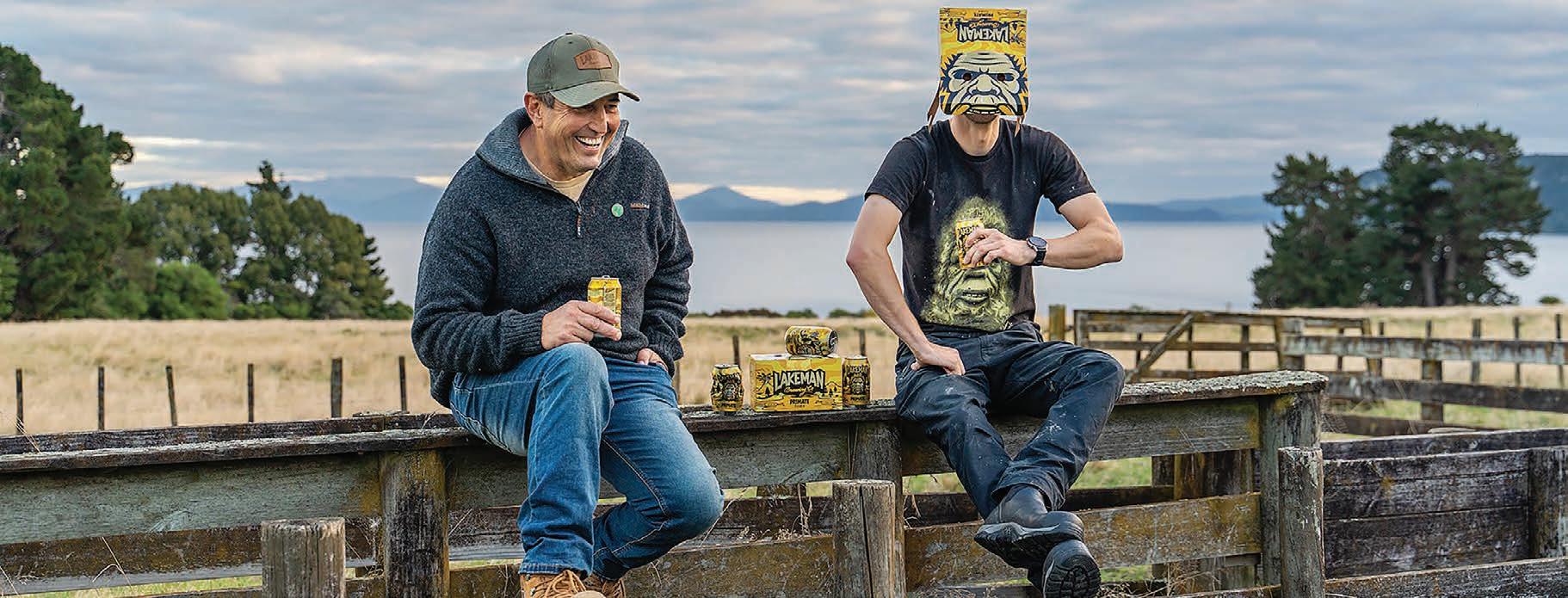
Since branching out into brewing beer James and Elissa Cooper haven’t looked back – and this year their pilsner was named Supreme Champion at the 2023 New World Beer & Cider Award.

But where did the journey start?
Back in 2009, the Coopers were a young couple who enjoyed drinking beer but had absolutely no idea how to make it. Elissa worked as a veterinarian in a local practice and James had taken on a lease block and was farming sheep and cattle.
There was a lot of change happening in the rural landscape at the time. Environment Waikato had found the freshwater quality of Lake Taupō was under threat and the amount of nitrogen reaching the lake from farmland and urban areas needed to be reduced to slow the degradation of the water quality. This meant the number of livestock in the lake catchment was capped, as was the
Keen to own land, James and Elissa had the opportunity to purchase 100ha. The piece of land they bought had a low nitrogen discharge allowance and their farming business – due to its size and the regulations – was marginal. It became evident after the first couple of years that they needed another income stream.
Their Primate Pilsner is a pitch-perfect example of a New Zealand-style pilsner, with loads of bright citrus and the hint of dank herbal note on a clean, slightly sweet palate ... This win is a great story of Kiwi can-do.
their savings into developing the brand. For the first few years they did all the brewing and bottling themselves. James said starting from scratch was not so simple and sticking to farming would have been a lot easier. However, the quality of the brew slowly but surely improved until it was saleable, and in 2013 they launched Lakeman Brewery Co. Fast-forward to 2023, and the Primate Pilsner of a company started in a shed in the Tukairangi Valley came out tops in the highly competitive 2023 New World Beer & Cider Awards.
“It’s a huge achievement for the whole team. They are always working hard to perfect our beers and try new styles, so for one of our core and original beers to win such a massive award is pretty cool and a recognition that with hard work and consistency it’s all worth it,” Elissa said.
The competition’s chair of judges, Michael Donaldson, had high praise for the pilsner.
execution. This win is a great story of Kiwi can-do attitude. Despite their remote location, rural farm setting and small team, Lakeman has gone from beginner to absolute winner in just 10 years,” Donaldson said.
The judging panel blind-tasted more than 700 brews, sipping their way down to the top 100, then the top 30 and ultimately selecting the overall winner.
“To be judged the supreme beer out of around 700 of NZ’s best beers and ciders from some awesome and a lot bigger breweries is pretty epic, especially as we head in to celebrating our 10th anniversary later this year,” James said.
But their story is also one of sustainability.
Wherever possible, everything comes back to the farm first.
“All our packaging is cardboard and we have recently changed to aluminium cans, which can be recycled again and again. Aluminium cans are also lighter than glass bottles and this reduces the overall weight of shipments, therefore reducing the emissions on the delivery of our stock nationally.”
All wastewater from the brewery containing the old hops and yeast is irrigated onto the surrounding paddocks.
“To see the business evolving and the small way we are having an impact on local people and the community by way of jobs is one of the most satisfying aspects of the business for me,” Elissa said.
Despite their lack of experience, brewing beer was an attractive option, and through trial and error, and a lot of dollars later, they finally brewed a batch that was “drinkable”.
With renewed hopes, Elissa conjured up the name Lakeman and the couple tipped the last of
“Their Primate Pilsner is a pitch-perfect example of a New Zealand-style pilsner, with loads of bright citrus and the hint of dank herbal note on a clean, slightly sweet palate. It came out on top of a taste-off against some of the bigger beers in this competition because of the outstanding

“Every time we do something we try and think about how it will minimise our impact on the environment. Not only have we reduced animal numbers and fertiliser on the farm for less impact on the waterways, but we’re also always taking other steps to be more sustainable.”
This same environment-first mindset extends to the brewery, where they are constantly considering options to reduce their environmental footprint.
“As we grow I am really mindful of the impact we are having on our home. We would like Lakeman to be inter-generational, whether it is with our family or someone else’s. We will only do that by looking after this place and the water resource.”
“We see sustainability as the bones of everything, as part of every aspect of business, environment, community and most importantly our family and future generations,” James added.
For the full list of winners, visit the New World website.
In the two decades that beekeepers have been treating hives for varroa mites, it has taken increasingly large doses of insecticide to control the pest – and at least part of the problem is unique to New Zealand. Richard Rennie reports.
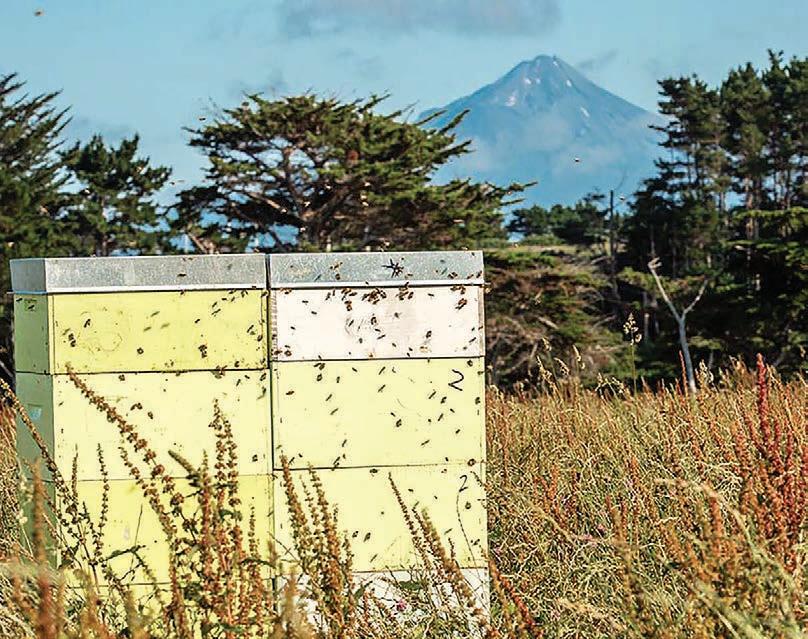
ARESEARCH report on varroa control effectiveness suggests massive increases in insecticide are necessary to achieve the same impact as 20 years ago, when the mite was first discovered in New Zealand beehives.

Work by researchers at Manaaki Whenua Landcare Research and Victoria University is indicating NZ varroa mites are developing a unique resistance to the main insecticide flumethrin, one of two key compounds used in the destructive mite’s control. Their paper has been released but is still due for peer review.
Varroa’s effect on NZ’s hive health has proven an insidious and rising challenge, with 2021 the first year it was cited as the main reason for a significant jump in

beehive colony losses.
That year loss rates were 20% higher than in 2020, and 62% greater than in 2015.
Last year 6.4% of colonies were lost to varroa, up 20% on the 2021 result.
But the research has also indicated NZ’s varroa is developing a unique strain of resistance to the flumethrin insecticide, not seen overseas. The work could not detect any resistance to amitraz, the second insecticide used.
Beekeepers now have to control varroa using the insecticides or face complete colony failure, often within a year.
The two products are used by about 80% of all beekeepers to keep varroa at bay, applying one in early spring and the other in autumn.
Professor Phil Lester of Victoria


University’s biological sciences school said it is possibly not surprising that the NZ varroa has gone on its own resistance pathway, given NZ’s isolation.

He is hopeful that joint NZUnited States work on genesilencing technology will deliver a solution in coming years.

Field trials in the US have proven promising for the tech, which shuts down critical DNA in the mite, rendering it incapable of producing certain vital proteins.
“It is due to go for approval with US authorities, but still has a way to go.”
Gene editing, currently not allowed under NZ GM regulations, could also offer some pathways to alternative treatments.
Lester said work is also underway trialling oxalic acid in hives, a product bees exhibit greater
RESISTED: Beekeepers are reporting elevated colony losses attributable to the increased impact of varroa mites on hive populations.
resistance to than varroa mites.
He said at this stage there is no evidence mites are exhibiting resistance to amitraz.
“But of course, the concern is that with some beekeepers giving up entirely on flumethrin and using amitraz more, that resistance rate could increase over time.”
While it is possible beekeepers’ underdosing with flumethrin could have contributed to the relatively
rapid rate of resistance, Lester said that was difficult to prove.
“It is also a case that if you keep on using only a couple of options, over time resistance will develop,” he said.




The research authors stated their concern that not all beekeepers are practising correct resistance management, as 13% of the beekeepers who participated in 2021 survey reported using only flumethrin to treat varroa.
to sales and logistics systems to manage and track fresh fruit to market.
INVESTMENT by a Canadian software investment company in a Bay of Plenty fruit systems company has been welcomed by the head of AgriTech NZ as a valuable capital injection that will give the firm greater global horsepower.
Tauranga-based Radford Software, a family-owned business, has specialised in full chain software systems used in multiple horticultural enterprises in New Zealand and Australia, with systems that include orchard management programmes through
Arcadea Group announced its investment in Radford last month.

Arcadea is a software investment company working largely with founder-controlled businesses in the $2 million to $20m revenue bracket and experiencing growth rates of 10-100% per year.






Radford Software was founded in 1989 by Phil Radford after a close collaboration with the kiwifruit sector in Bay of Plenty, but diversifying into fruit and vegetable sectors including avocados, cherries, citrus and apples.
Agri Tech NZ CEO Brendan O’Connell welcomed the purchase by Arcadea as a move that would add significant horsepower to Radford’s global reach and ability to accelerate software development in the coming years.


Of the 416 companies listed in AgriTech NZ’s knowledge hub tool, about two thirds are New Zealand owned and based.





“I think there is some dislike at a ministerial level about overseas ownership of NZ companies including agri-tech firms but in reality it is not the same as foreign ownership of farms,” O’Connell said.



“It is a natural part of the agritech ecosystem to have some



foreign ownership in companies, it is actually very healthy,” said O’Connell.
Adam Cuming, CEO of Radford, said the company has capitalised on global demand for a software company capable of offering support across the entire supply chain.




“Now with Arcadea we have the opportunity to elevate our products and services for our valued existing customers as well as serve the many new customers joining as we expand into new markets.”
Arcadea managing director Paul Yancich said his company is in the throes of aggressively building in the agri-tech sector, with further
developments to be announced soon.

“As we studied the market, Radfords stood out among competitors due to its ability to bring material value to complex crops and market ecosystems.
“Radfords also met the rare mix of criteria we have in our investees: customer centricity, mission-critical products, and an unassailable market leadership and knowledge.”
O’Connell said as NZ starts to hit its physical limits in food production, foreign ownership of agritech offers a means of continuing to leverage off that capability, without boundary or resource limitations.
Since 1999, Bayleys Real Estate’s dedicated team of country experts has been delivering real results for Kiwis right across the country, in every sector of the country landscape. We’re proud to be the nation’s most awarded rural real estate brand, backed by unmatched market knowledge and an emphasis on exceptional local services that deliver results for our clients, time and time again.
Forming an integral part of New Zealand’s largest, fullservice real estate agency, Bayleys Country is nationally connected, with an ear to the ground across large-scale farming, legacy properties, forestry, vineyards, orchards,


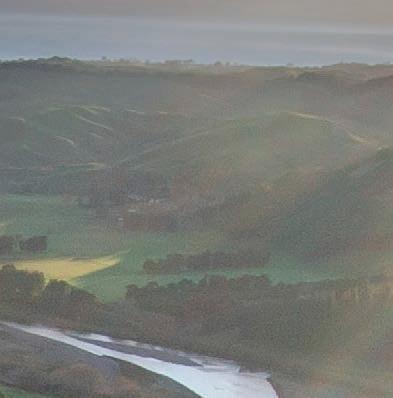




grazing, specialised rural, lifestyle blocks and homes in the country.


With roots entrenched in farming communities, our local relationships and legendary professionalism means we’re Altogether Better at delivering the optimal results, as New Zealand’s number one rural real estate brand. Call

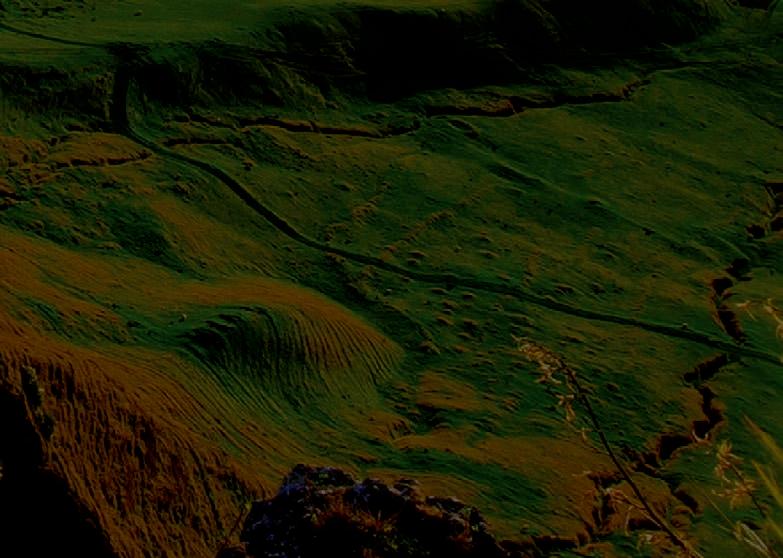

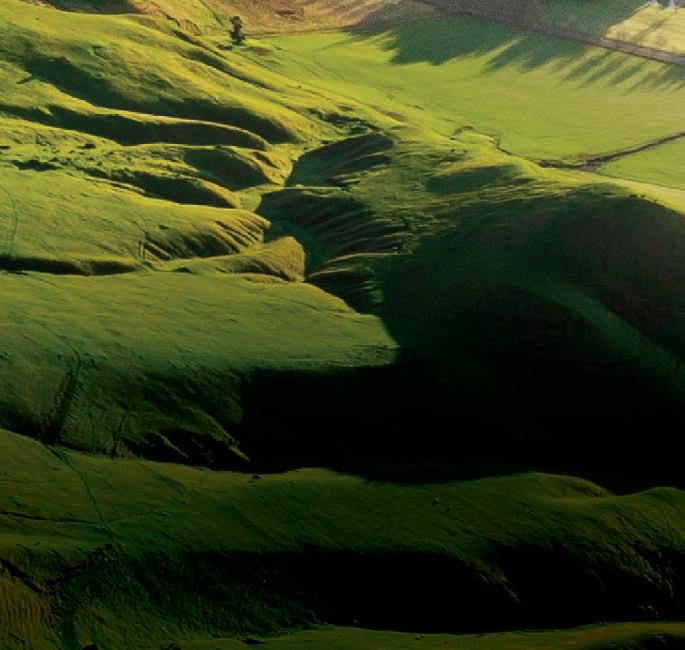

The rural sector has traditionally been the backbone of this country’s economy – and with that can come a huge weight to carry given the brunt of challenges being faced right now as inflation nips at everyone’s heels and the fallout of climate events are tackled.
While often the focus is on what’s immediately in front of us, investment in rural land is usually a long-term strategic play and for people who have energy and time on their side, it remains an asset class with staying power.
Rural property is not immune to the macroeconomic challenges being experienced throughout New Zealand, across households, within businesses and at every point of the financial compass.


But we can take heart from the fact that as history shows, market cycles don’t last forever and fundamentals will find a new balance.
that we were coming off a massive base as the previous year was the most active the market had been for more than six years.
Context is everything and despite challenges, some strong prices were achieved for rural property through last spring, however the reality is that there are now more options appearing for buyers ahead of winter.

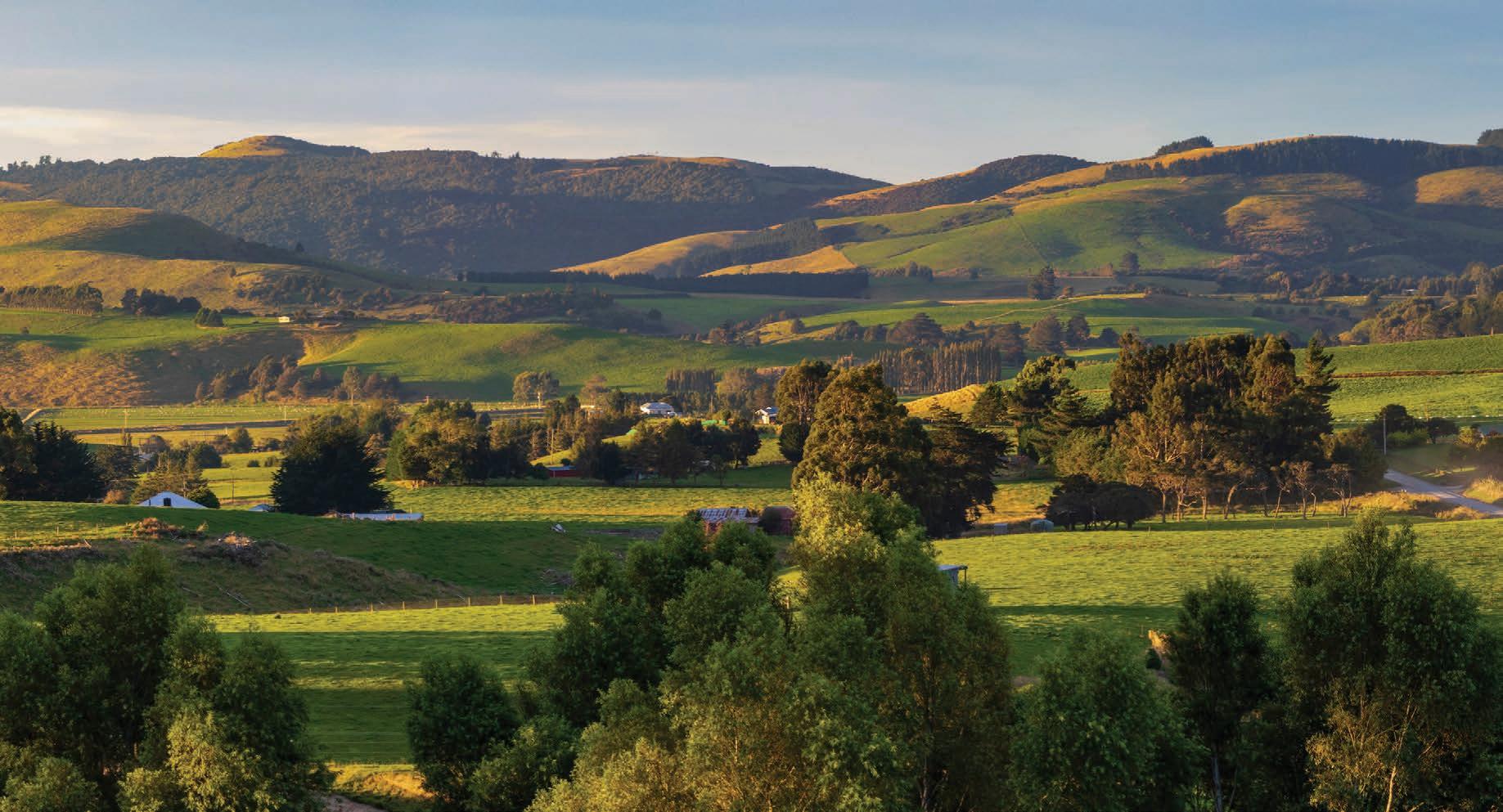

As operations behind the gates adjust to higher operating cost structures and potentially softening commodity prices, and as vendors opt to move on, there will be good buying opportunities for those purchasers that can see beyond the immediate cycles.
Although productive capacity on farm continues to become more constrained through regulation, a long-term lens needs to be applied because farmland is becoming an even more finite resource.
Invariably, value goes one way when supply is tight, so while more properties come to the market in the short term, we are
#1 RURAL
arguably reaching peak productive area across many of our sectors.
As a strategic hold, rural real estate has compelling credentials.


This year, as Bayleys celebrates half a century in business and as New Zealand’s largest full-service real estate firm, we continue to work hard to maximise the value of our clients’ property assets – regardless of market cycles and despite any gnarly headwinds the economy has displayed.


Our national country team is stubbornly committed to working together for the rural sector to ensure we help rural landowners achieve their objectives, no matter the cycle.
This week we release our Rural Insight report, providing sector by sector intel as part of our commitment to ensuring rural landowners remain informed and have access to information that helps them make better decisions.
So please get in touch because we know you are all together better, with the right team on your side.
121
1,320
It’s taking more time to structure deals for rural real estate as decision-making is more considered and alignment between vendor motivation and buyer expectation has been required.
deals
$2,674,028,608 OF PROPERTY SOLD OR LEASED
Although sales’ volumes this past 12 months are down, we have to remember
BAYLEYS COUNTRY SALESPEOPLE SALES AND LEASING TRANSACTIONS REAL ESTATE BRAND IN NEW ZEALANDA rare gem on the outskirts of Whanganui East. This 53-hectare rural property offers a balanced mix of 36 hectares of gentle undulating land, four hectares of hill country, and 12 hectares of second rotation pines. Featuring a beautifully designed, northfacing 245sqm home with stunning views over the easier contours. Additional improvements include a spacious two-bay garage, a disused milking shed, stock handling facilities, ample bore water supply, and a picturesque stream meandering through the main flats. Benefit from convenient access points on Wakefield Street and Ikitara Road. Arrange a viewing today! bayleys.co.nz/3002497
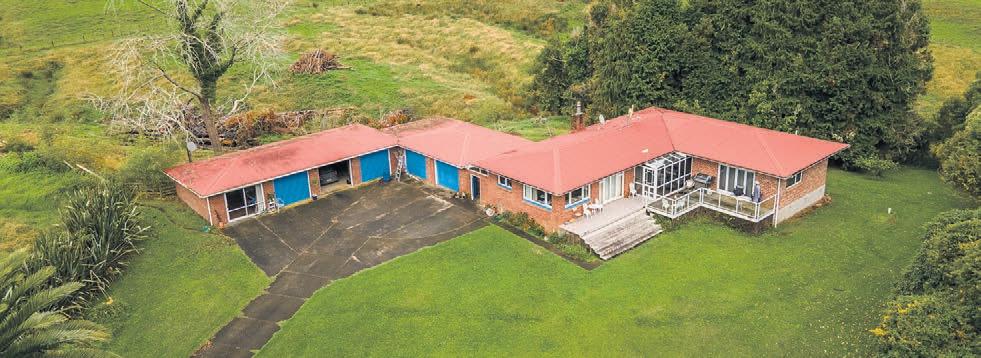

52.9535ha
For Sale
by Deadline Private Treaty (will not be sold prior)
12pm, Thu 6 Jul 2023
Bayleys, 158 Wicksteed Street, Whanganui
View by appointment
Knud Bukholt 027 222 6161 knud.bukholt@bayleys.co.nz
BARTLEY REAL ESTATE LTD, BAYLEYS, LICENSED UNDER THE REA ACT 2008
GLEN MURRAY 401 Waikaretu Valley Road
The Market will be Met!
This 165ha farm is predominantly north facing with ample hay country. Bore water supplies the two dwellings along with farm. Fenced into 18 paddocks, 13 of which water is supplied via trough.

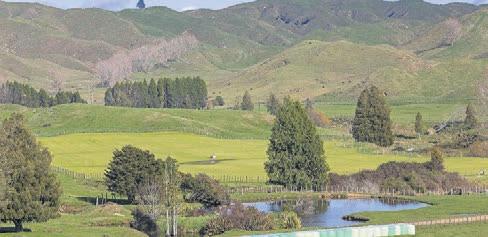
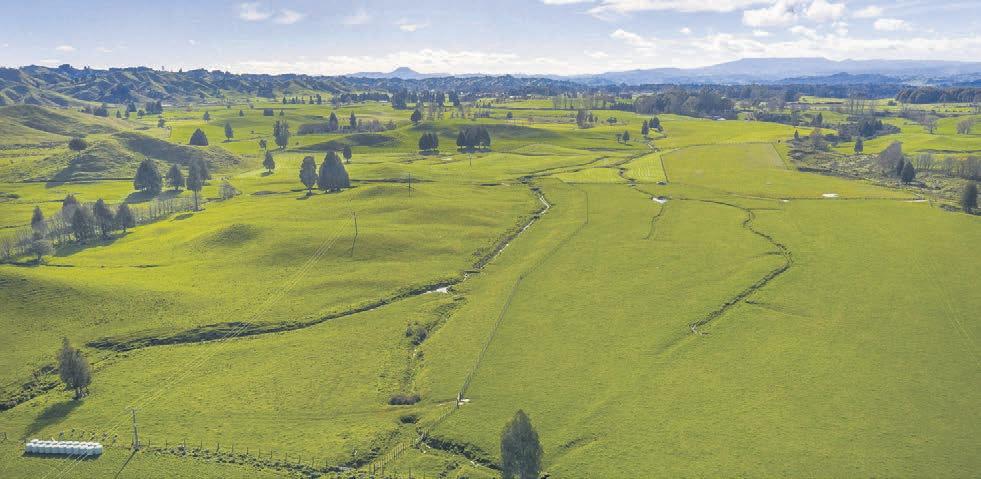
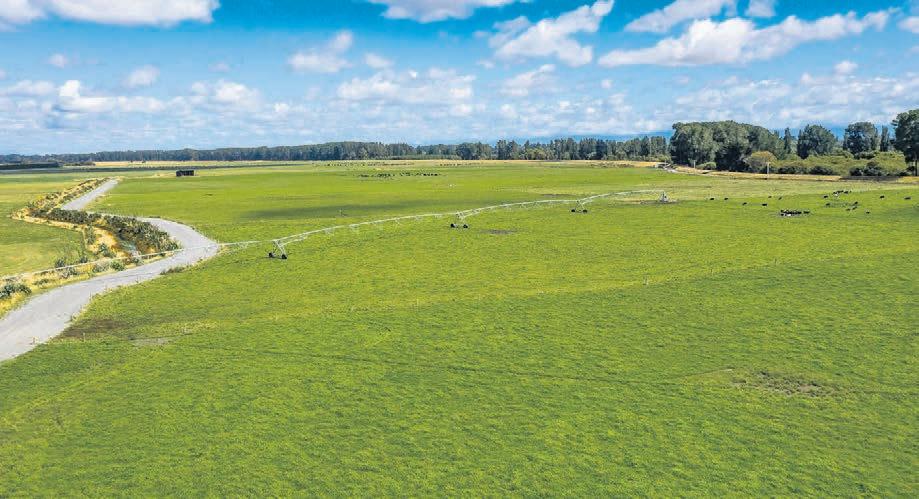
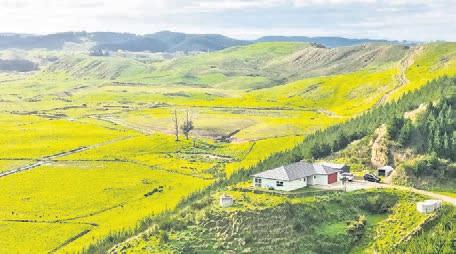
Three stand woolshed with attached concrete floor workshop, six bay covered lean-to, separate three bay enclosed haybarn, sheep and cattle yards with loading out race and crush.
Dwellings include a Huntly brick house with three bedroom, two bathroom, office, rumpus room plus three car garage, and a two bedroom, two bathroom cottage plus two car garage.

pggwre.co.nz/PUK37867
5 4 TENDER
Plus GST (if any)
(Unless Sold By Private Treaty) Closes 2.00pm, Thursday 29 June
VIEW By Appointment Only
The vendor invites offers in excess of $48,000/ha.
198.2447 hectares (more or less) currently grazing cattle, both beef and dairy support, along with winter grazing. Excellent quality infrastructure is in place for future success with good quality cattle yards and crush, three large sheds, and a threebedroom cottage. The ample low-cost irrigation water supply from two underground bores is a standout feature at this property. Stock water is reticulated from a storage tank via a surface pump to stock troughs. Comprehensive irrigation covers the property via pivot and solid set. The property is currently being consented to give the ability to intensively winter graze on 32 hectares. bayleys.co.nz/5520478
198.2447ha
For Sale offers invited over $9,500,000 + GST (if any)
Phone for viewing times
Ben Turner 027 530 1400 ben.turner@bayleys.co.nz
Craig Blackburn 027 489 7225 craig.blackburn@bayleys.co.nz


WHALAN AND PARTNERS LTD, BAYLEYS, LICENSED UNDER THE REA ACT 2008
Adrian van Mil
3632
M 027 473
E avanmil@pggwrightson.co.nz
TAUMARUNUI, RUAPEHU 2848 SHWY 4
Contour is King - Top Producer
This well-balanced 494.9907 hectare (more or less)
Sheep/Beef/Dairy grazing property ticks a lot of requirements primarily because of the easy rolling contour which is the dominant feature of this farm.
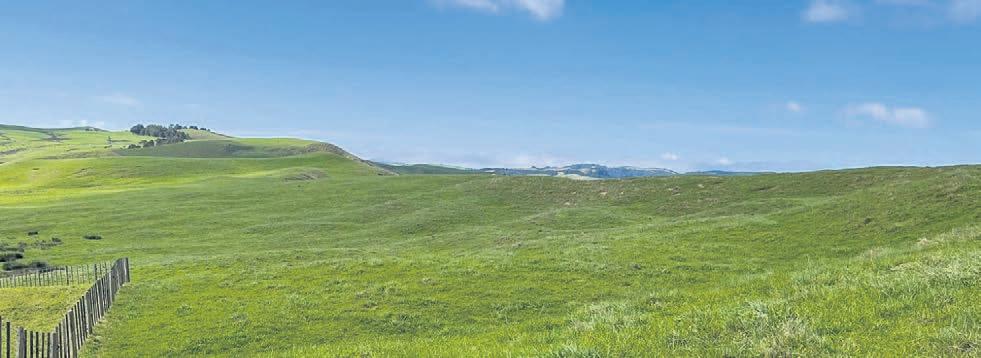
The vendors have recently installed a solar water system to complement an existing spring feed supply and the dams on the hills. Very long and strong fertiliser applications. Very good Ute access throughout the farm. 30/6/22 Stock wintered - 2221
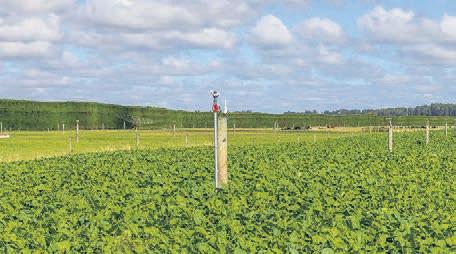
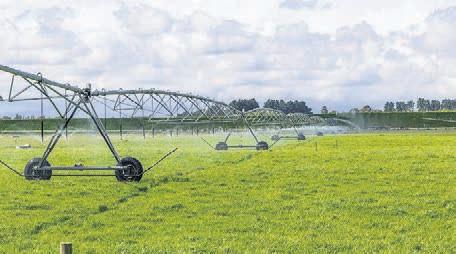
MA ewes, 34 rams, 165 MA cows, 146 R1 beef heifers, 128 R1 dairy graziers, 34 R2 heifers, 4 R1 steers, 5 MA bulls.
pggwre.co.nz/TEK37943
TENDER Plus GST (if any)
(Unless Sold By Private Treaty)
Closes 11.00am, Wednesday 28 June
VIEW 10.00-12.00pm
Monday 12 & 19 June
027
E pwylie@pggwrightson.co.nz
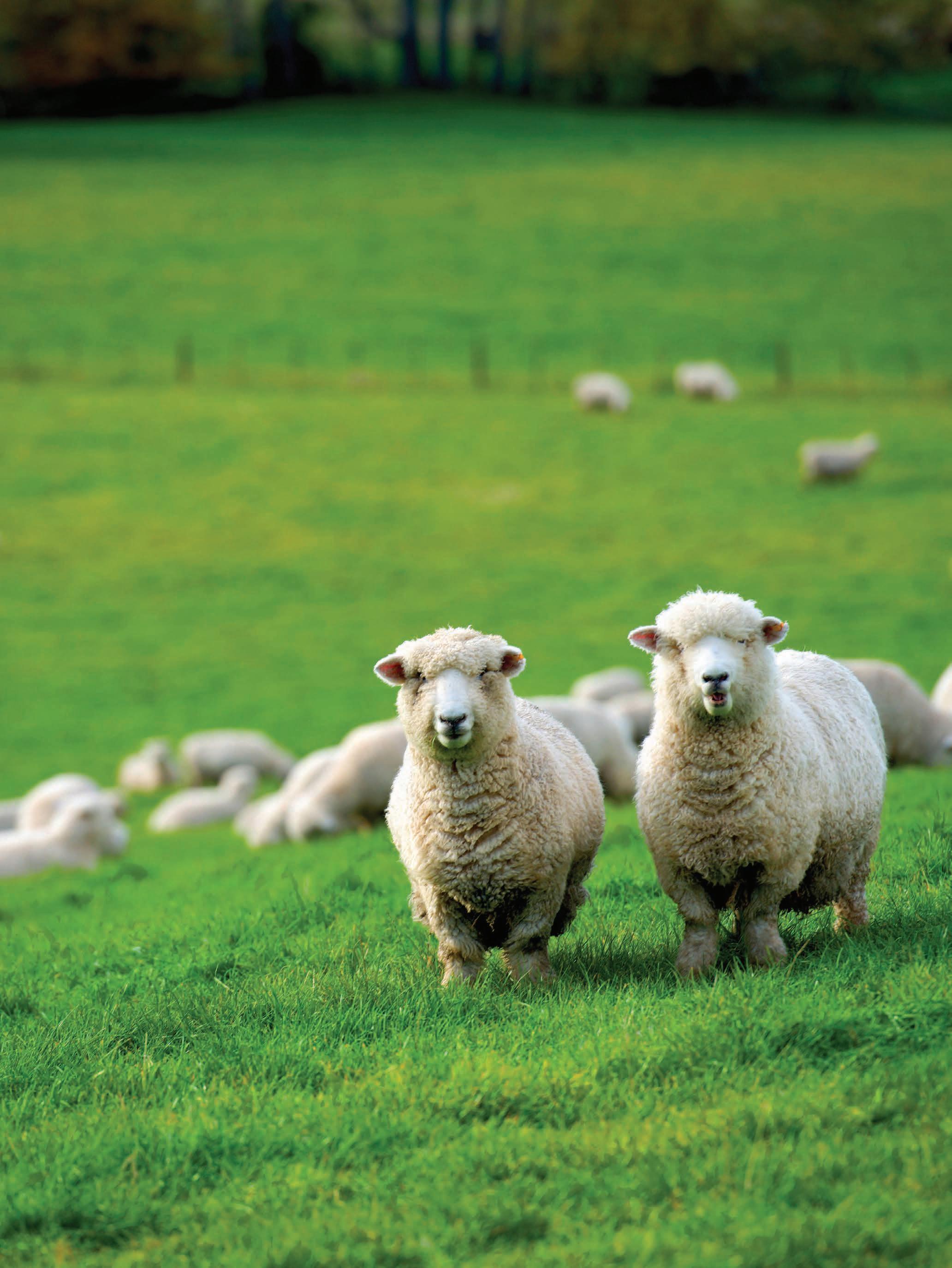










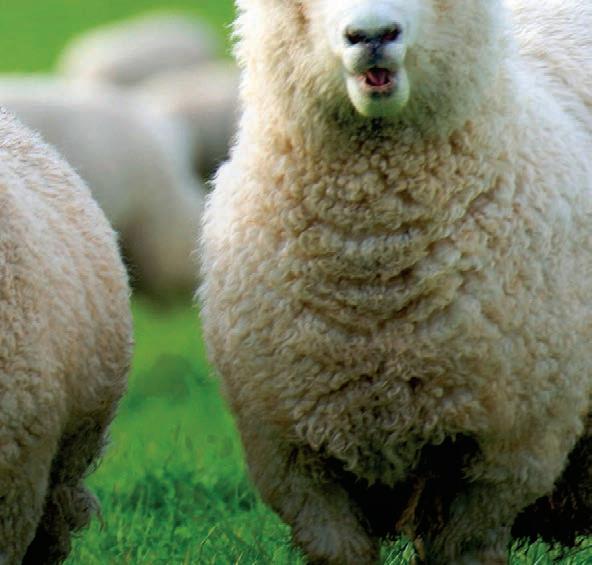


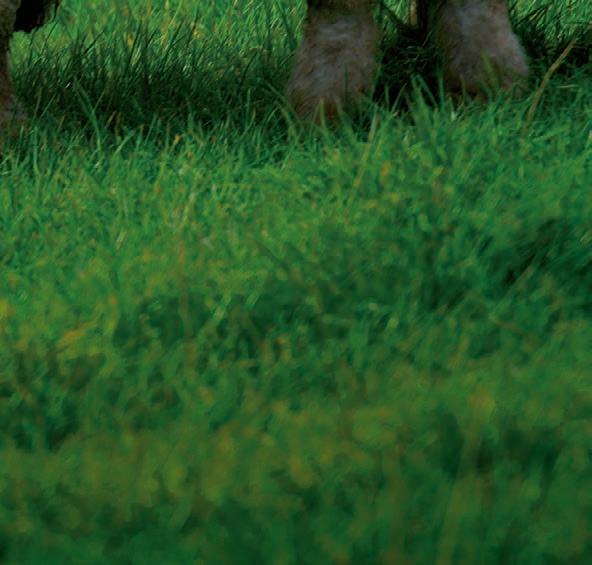





• 670 Fencourt Road and Beer Road, off Victoria Road, Cambridge
• 60.1055 hectares (sts) flat to easy rolling contour; some steeper sidlings
• a mix of complex clay and sandy loam soils sand pit on property
• currently utilised for finishing lambs but ideal also for dairy support, beef finishing, calf rearing or maize growing
• fertility benefits from Fonterra wastewater irrigation on part of the property

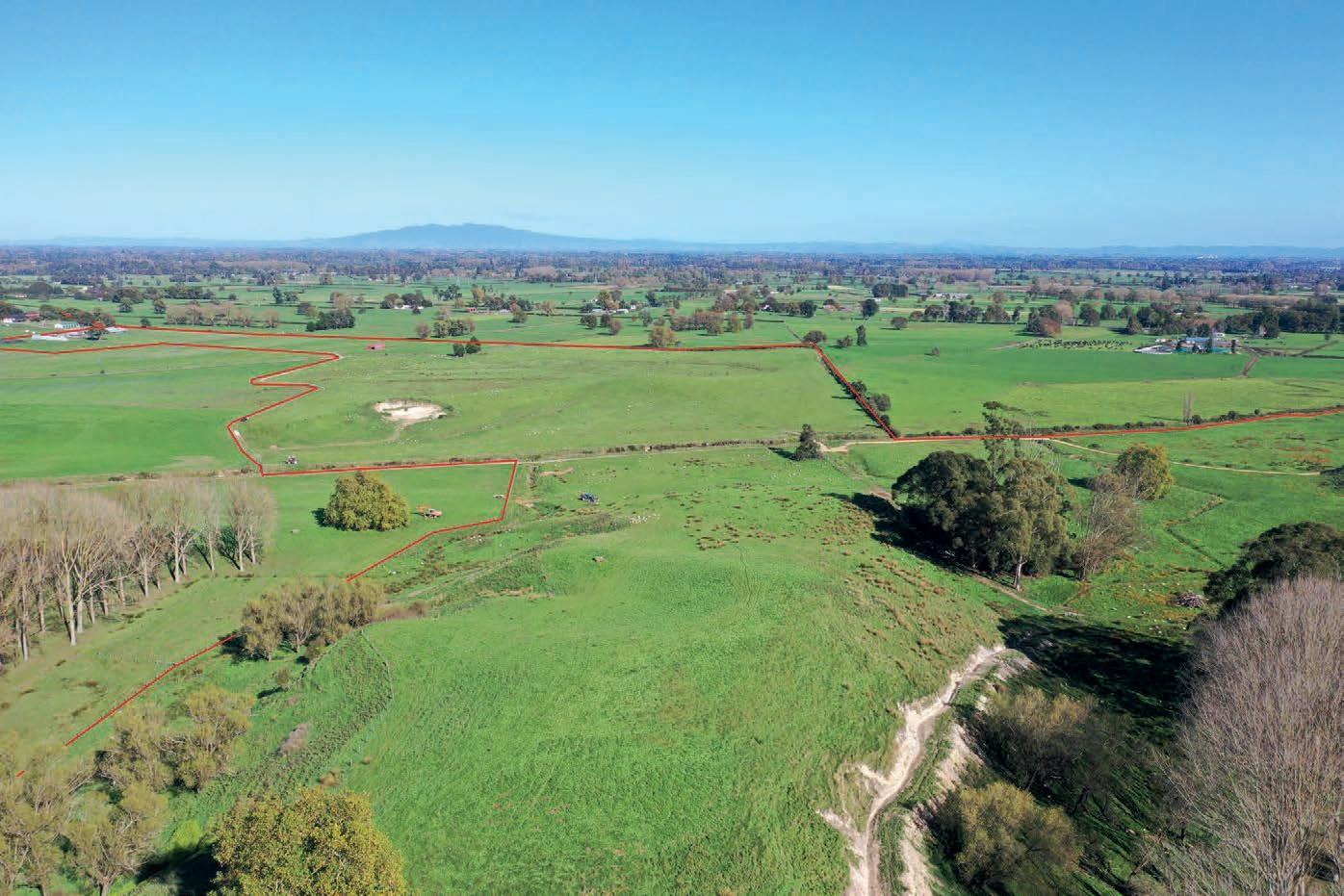
113
• a good range of older but functional buildings including a 10 aside herringbone farm dairy and large shedding ideal for calf rearing; new heavy duty bridge
• no dwelling building sites with panoramic views to Pirongia & Maungatautari

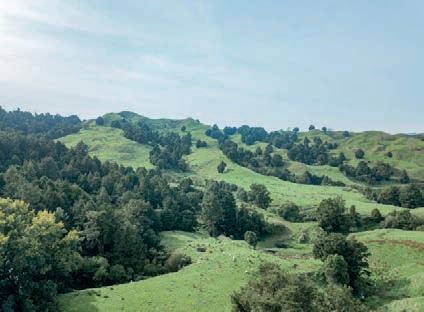

• excellent primary and secondary schooling options within easy travelling distance
• additional option for inclusion
2 ha with large 2 storied homestead & additional shedding on elevated knoll with sunny north facing outlook over the property p.o.a.
TradeMe search # R1424 Sale by Tender Closing Date: Wednesday, 21 June 2023



021 373 113
bjp@prl308.co.nz
EXCELLENT QUALITY, $85 per bale plus GST. Unit loads available. HAY, 5ft rounds, shed stored. $105 per bale plus GST. Unit loads available. Phone 021 455 787.

RANGITĪKEI, MANAWATŪ or HB areas. Dairy or grazing farm. Regenerative farming practiced. Open to developing land in partnership. Phone Michael 027 223 6156.
NORTHERN SHEEP SCANNING. Friendly and reliable service. Based in Northern Waikato, servicing surrounding areas and Northland.
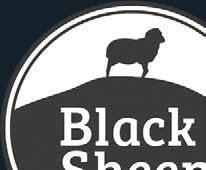
Phone Natalie 021 109 5884.



FARM MAPPING
WORK SMARTER with a farm map based on the latest satellite imagery. Drone photography also available in South Island districts.


For more info call Cliff Francis 0800 433 855 or visit farmmapping.co.nz
FREE DIGGER WORK IN EXCHANGE FOR hunting privileges. Phone Ben 021 175 4069.
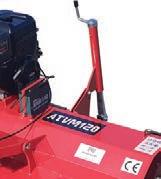






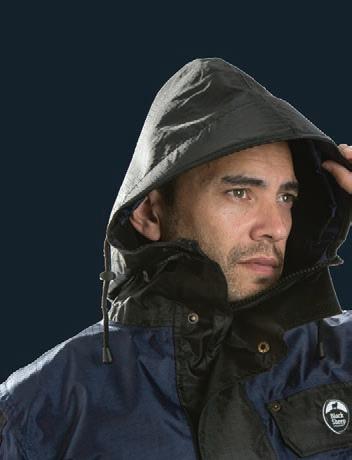

PROMOTES QUICK

PASTURE growth. Only $6.50+gst per hectare delivered. 0508-GIBBGRO [0508 442 247] www. gibbgro.co.nz. “The Proven One.”
GOATS WANTED
GOATS WANTED. All weights. All breeds. Prompt service. Payment on pick up. My on farm prices will not be beaten. Phone David Hutchings 07 895 8845 or 0274 519 249. Feral goats mustered on a 50/50 share basis.
HORTICULTURE
NZ KELP. FRESH, wild ocean harvested giant kelp. The world’s richest source of natural iodine. Dried and milled for use in agriculture and horticulture. Growth promotant / stock health food. As seen on Country Calendar. Orders to: 03 322 6115 or info@nzkelp.co.nz
LAND FOR LEASE
TUAKAU 16 ACRES, flat, suitable for supplementary grass or maize. Phone Simon 027 417 8239.
Bring
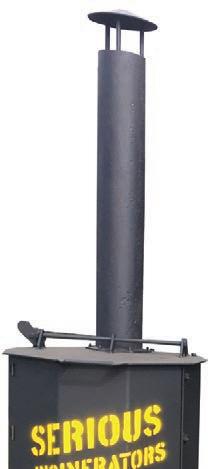






RED DEVON BULLS. Well grown, purebred. Feilding. Phone 027 224 3838.
RAMS FOR SALE
WILTSHIRES-ARVIDSON. Self shearing sheep. No1 for Facial Eczema. David 027 2771 556.


RURAL MASSAGE
RELAXING FULL BODY massage in rural Ohaupo. Unwind. De-stress. www. ruralmassage.co.nz or call 027 529 5540.
WHAT’S SITTING IN your barn? Don’t
SAWN SHED TIMBER including Black Maire. Matai, Totara and Rimu etc. Also buying salvaged native logs. Phone Richard Uren. NZ Native Timber Supplies. Phone 027 688 2954.

Tour 1: Molesworth Station, St James, Mailings Pass & Rainbow Stations
Dates: 2023 – Nov 13-16 2024 – Feb 19-22, March 4-7, March 11-14, March 25-28 April 8-11, April 22-25
Tour: 2 D’Urville Island and Marlborough Farms Tour

Dates: 2024 – Feb 11-15, March 12-16, April 24-28
Other dates available for groups of 6 or more people on request Ph: 0274 351 955
E: info@southislandtoursnz.com • www.southislandtoursnz.com

TWO STUNNING 4WD SELF DRIVE OPTIONS

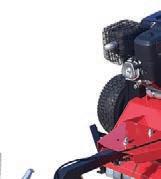

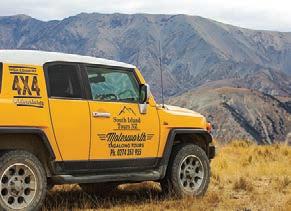
South Island High Country Grand Slam Self drive your own 4WD from Blenheim to Cardona in Central Otago
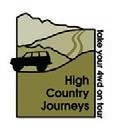

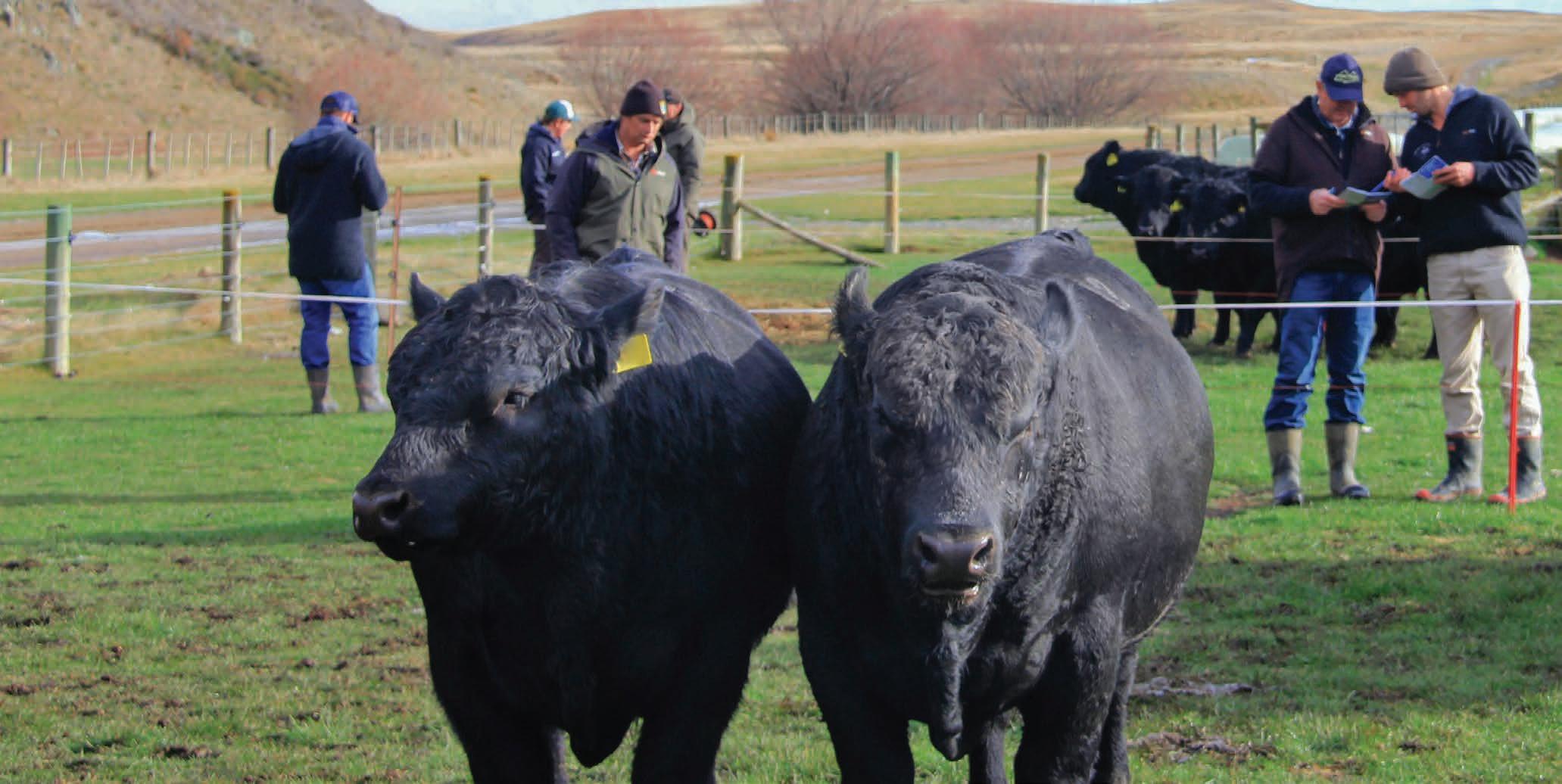
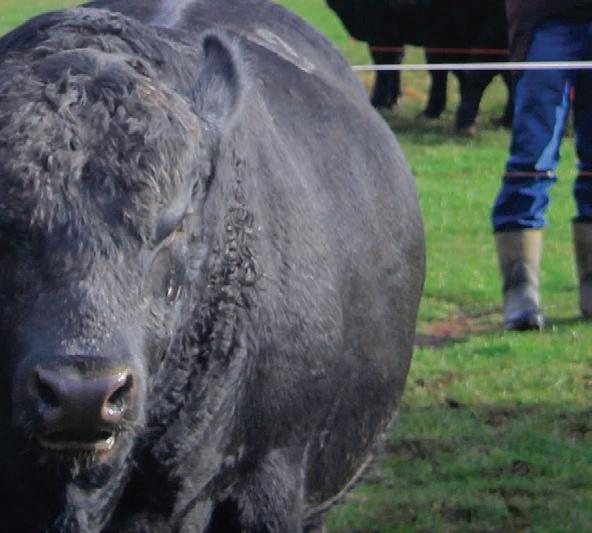
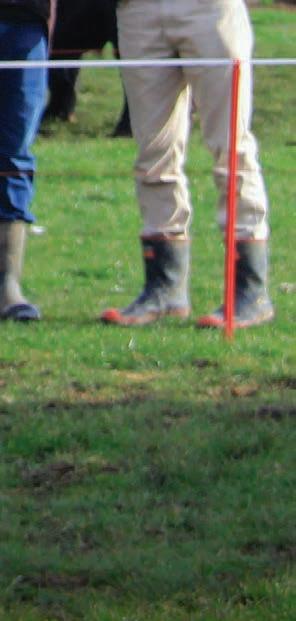





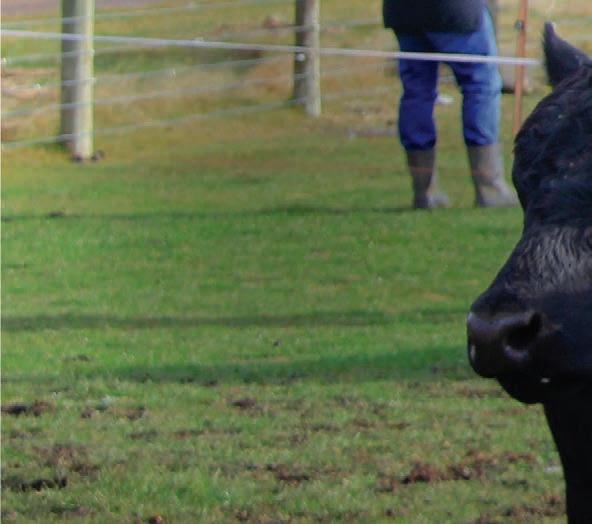




‘The Sale Shed’ 811 Maraetotara Road, Havelock



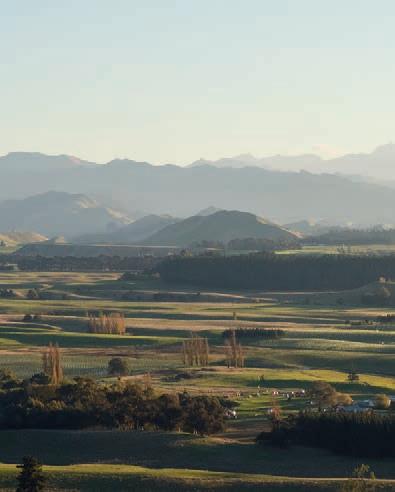


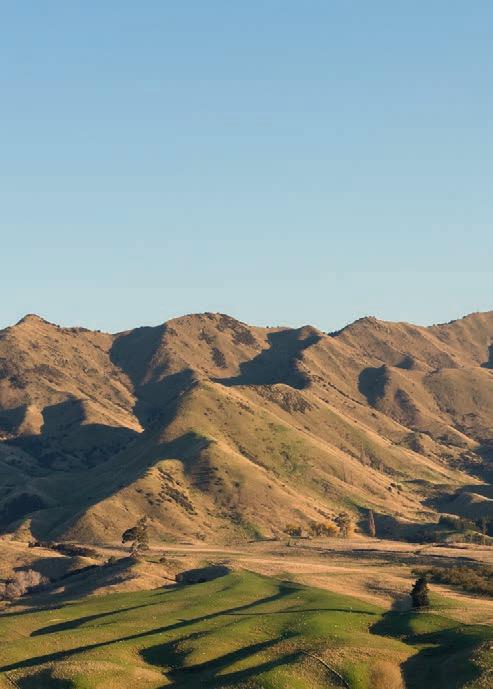






400kg+ R2 Friesian Bulls 200-300kg Here/Frs or Ang/Frs Hfrs & Steers
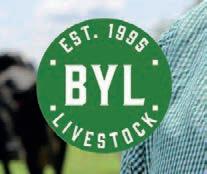





Richard Seavill, Ph: 021 169 8276



In-calf Ang. Cows for July Del. Sept/Oct calving


Chris Kyle, Ph: 027 496 7412

A guy sits down in a movie theater and notices that the man in front of him has brought his dog and it’s sitting in the seat next to him.
He thinks it’s unusual, but he likes dogs so he decides that as long as it’s not a distraction he won’t mention it.
The movie starts and pretty soon there’s a funny part. The dog makes some low woofing sounds that seem like laughter. In a little while there’s a sad part and the dog appears to be weeping. This continues throughout the film and the man sitting behind the dog is astounded.


When the lights come up he taps the dog’s owner on the shoulder and tells him, “I gotta say, and I know it sounds weird, but it seemed like your dog really enjoyed this movie.”
The dog owner looks at the dog and nods. “I know, it really is weird,” he says, “because he absolutely hated the book.”
FOR FURTHER DETAILS CONTACT FARM MANAGER: GREG CROMBIE
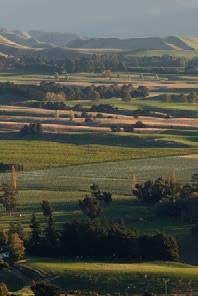
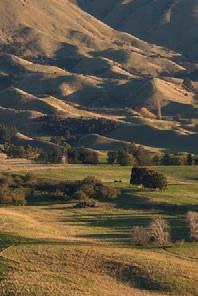

IT HAS been well documented that Australia’s herd and flock rebuilding efforts would be felt in export markets this year. With five months of data now on paper, it’s clear to see the impact its increased production is having. A sustained improvement in demand from key markets couldn’t come soon enough to help offset the increased volume of Australian product competing directly with our exports. Yet most markets are still showing some hesitancy.
Focusing on beef first, in the five months to May 31, Australia has exported 384,000t of beef. This is 65,000t more than the same period last year and a touch behind five-year average levels. In comparison, New Zealand exports over the same period are expected to push to around 240,000t once May’s figures are in.
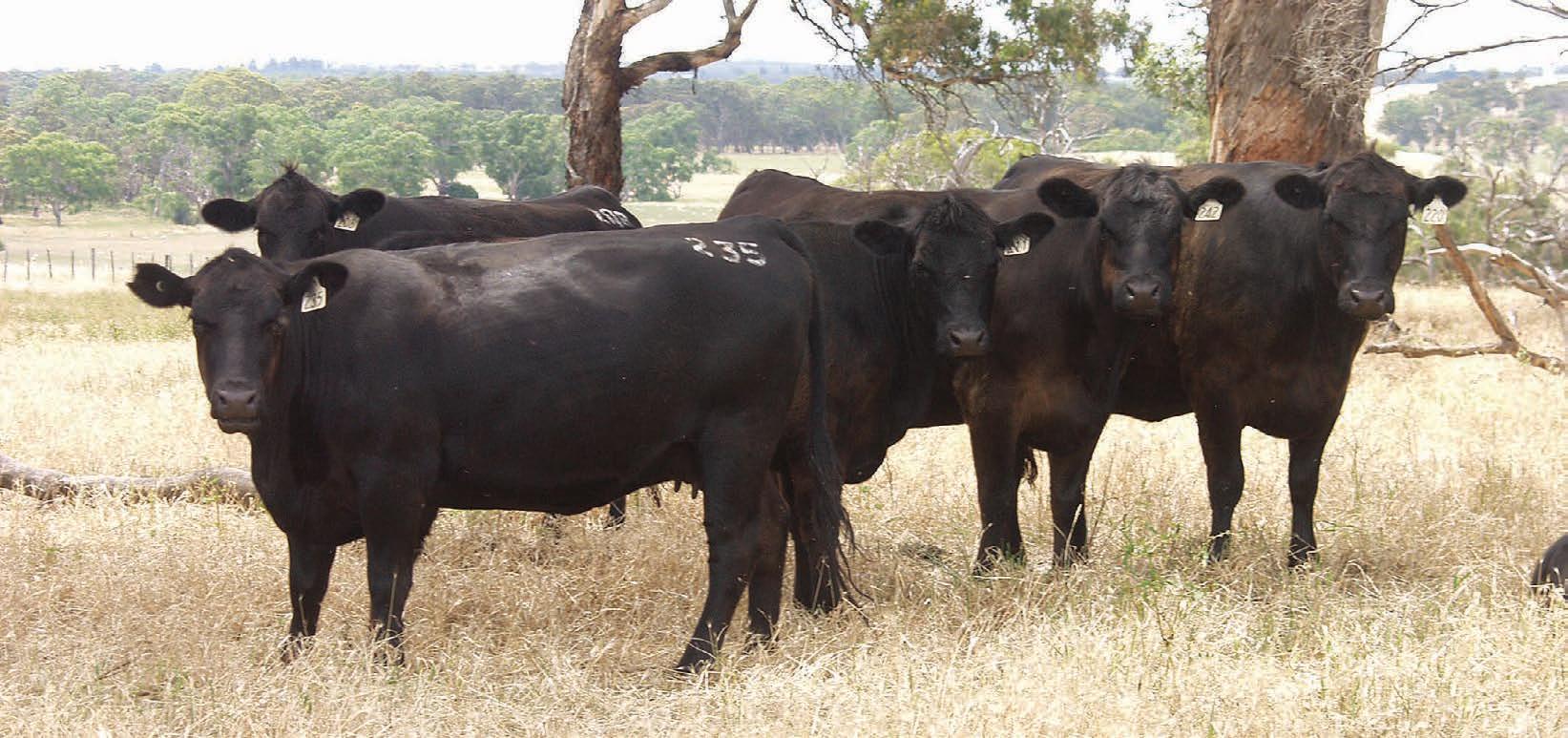
What these figures show is Australia rapidly returning to the production levels of four to five years ago. Back then Australia was plagued with constant drought conditions, which eventually sent them into liquidation phase, unravelling their cattle numbers.
Compared to recent years, Australia has a slightly different
focus on export destinations. While Japan remains the largest market for Australian beef (on volume) season-to-date, it’s barely clinging to that position. After two years of struggling export volumes, amid political differences, Australia has renewed its focus on China. A reducing volume of United States beef into this market, Australia’s larger supply, and Brazil’s export suspension in recent months, have all helped Australia regain some traction.
In the past two months China has claimed top export destination for Australian beef, and this trend is likely to continue in the months ahead. However, Brazilian exports to China are expected to recover, leading to some likely congestion in a market that hasn’t economically recovered to the extent many were banking on.
Pinpoint the factors shaping beef and lamb slaughter prices up to six months in advance with this must-have forecasting and planning tool.
In the time that Australia has focused on rebuilding cattle numbers, Brazil simply focused on growing its herd and subsequently its export volumes. Brazil was always subtly ahead of Australia in the global export stakes, but that subtle difference ballooned to over 1.2 million tonnes last year. If Brazil’s production shows no signs of slowing and Australia continues to ramp up, this will help balance global supplies amid the expected decline in US beef production this year. Australia has also turned its attention back to the US market this season, already shipping an extra 21,000t there this year. While this is significantly more than the past two years, it’s still a way off pre-2020 volumes. Nevertheless, increased volumes of Australian beef have hit this market right as our own autumn
production has ramped up. Softerthan-expected beef demand has given the US the upper hand and subsequently imported beef prices have come under pressure.
A sustained improvement in demand from key markets couldn’t come soon enough to help offset the increased volume of Australian product competing directly with our exports.
When it comes to lamb production, it’s been full steam ahead for Australia. Barring one or two weeks, slaughter rates have been well ahead of last year. The total Australian lamb kill is up by over 500,000 head for the first six
months of this year. Surprisingly, despite the faster slaughter throughput, exports for the first five months of this year are still trailing last year’s paltry level by 5000t, to 117,000t.
However, they gathered some significant momentum last month with exports soaring to their highest level since May 2019 at over 28,000t.
If slaughter rates continue to build, export volumes will promptly follow. While some will argue export markets are absorbing this increase in supplies, it does come at a cost with pricing pressure developing in key markets that Australia supplies.
Unfortunately, these are many markets that NZ relies on, and until this year we have had the upper hand in driving pricing direction.
This was always the year Australia’s herd rebuilding efforts were going to be felt on the global lamb and beef market –and are they ever.
The past week was one of the quietest this year at the saleyards, largely due to the King’s Birthday holiday on Monday and a focus on stud bull sales.
The change in temperature and weather conditions meant that hands were more firmly planted in pockets and prices across most classes showed a winter softening.
Store lamb prices have started easing and most recent sales reported decreases of $4-$8 per head.
Feilding | June 2 | 1026 cattle, 7316 sheep $/kg or $/hd





Feilding | June 6 | 288 cattle, 2552 sheep
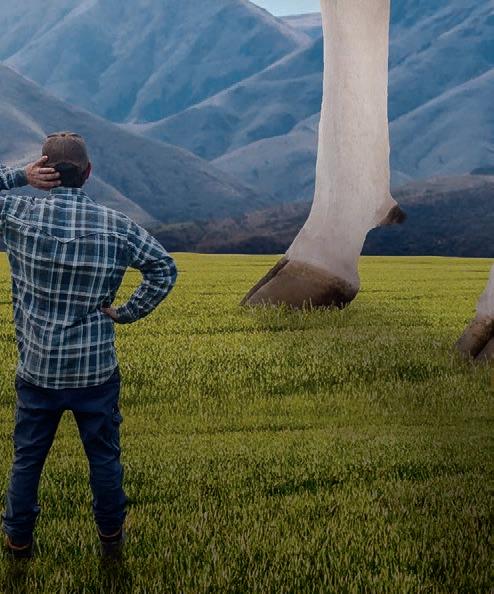



so they can udderly take on anything Learn online with a Dairy Assistant course
Grow your team’s skills
NOTE: Slaughter values are weighted average gross operating prices including premiums but excluding breed premiums for cattle.

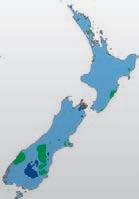
























THE chance of El Niño forming later this winter or spring has risen from 50% to 70%, according to the Bureau of Meteorology.
The latest Climate Driver update from BoM has shifted the El Niño “Watch” to an official “Alert” –meaning it’s looking very likely to form in the coming months.
Last week we mentioned the atmosphere was slow to respond to the developing El Niño, but in recent weeks it has started to appear in the weather pattern over Australia, bringing a series of large highs to them – some of which are drifting towards New Zealand.
The eastern side of the North Island – mainly Gisborne and Hawke’s Bay – have had an exceptionally wet 2023 made far worse by the flash flooding brought by Cyclone Gabrielle. Despite some rain last week from a weak sub-tropical low, these regions are generally heading in a drier direction.
In fact the general trend is
to see drier weather emerging, which it gradually has been doing lately. Of course, the ground is so sodden that it doesn’t take much rain to create more mud. But long range data does support a drying out of eastern parts of NZ with El Niño more likely to create windy westerlies than wet easterlies. Still, we’re in a neutral period for now, so the weather pattern is still chaotic.
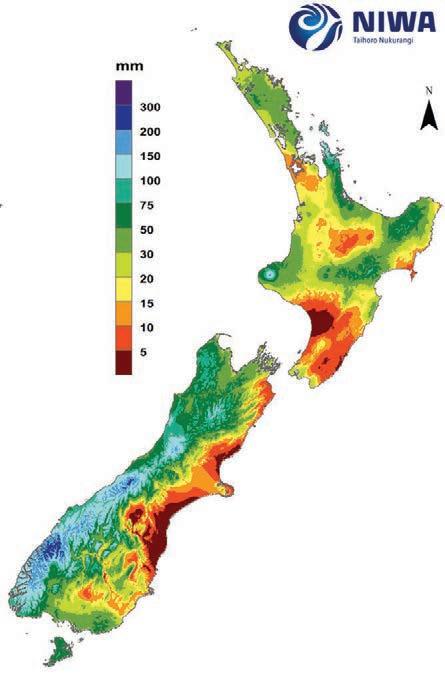
to southwest winds over NZ, which increases the chances of cold shots of air from the Southern Ocean – but the windy westerlies can also push temperatures up at night.
The difference in overnight lows between a high parked over the top of you with clear skies and light winds, vs a windy westerly from Tasmania, could be as much as 10 to 15degC warmer. There have been quite a few alarming headlines about El Niño from various outlets around the globe. It’s important to remember La Niña and El Niño are natural climate drivers and are important to help balance the books. South America has had significant drought lately, whereas our side of the Pacific Ocean has had rainmakers.
Temperature-wise, frosty weather last week was widespread for the first time this year across the South Island – and there were even a few light frosts into the windier North Island.
Our long range data still supports June leaning warmer than average.
El Niño does inject more south
To shift that dynamic would be helpful in bringing rain relief to dry parts of South America and dry relief to sodden parts of NZ. But as with anything, moderation is key.
If this next El Niño event lingers too long into 2024 it could cause dry complications here in NZ – so if you want dry weather, perhaps don’t wish for it too hard.
Highlights this week
• Mild nights for northern NZ with a lack of frosts for many
• Temperatures closer to normal in the lower South Island



• Most regions lean drier than average
• Our Mystery Creek forecast at RuralWeather.co.nz shows a dry start to Fieldays – but maybe some wet weather late week


With the cost of fertiliser at a premium you need precision application. With hopper sizes up to 10000 L and working widths up to an impressive 54 m, we have a spreader to suit every farming operation.

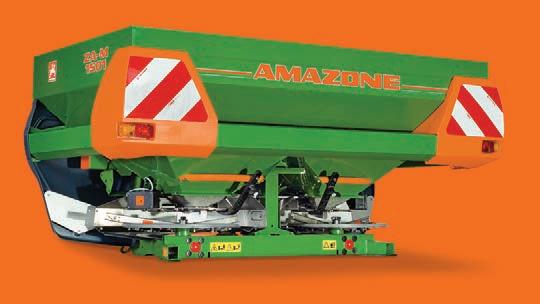
AMAZONE is world-renowned for building of the most robust, technically advanced sprayers available. With tank volumes up to 11200 L and working widths up to a remarkable 40 m, we have a sprayer to suit every farming operation.









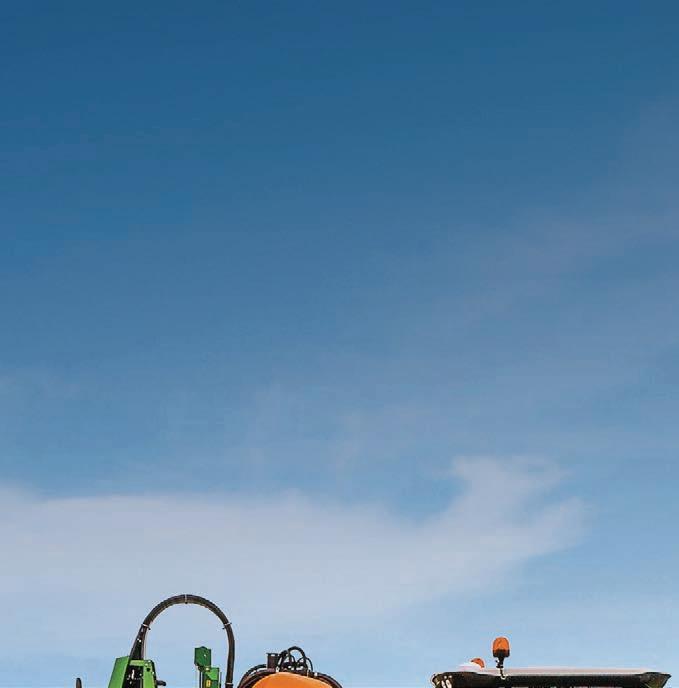

If this next El Niño event lingers too long into 2024 it could cause dry complications here in NZ –so if you want dry weather, perhaps don’t wish for it too hard.





Please come join us at the Ballance tent to celebrate the essential role you play for the primary industry and New Zealand. We would love to see you and thank you in person for the work you do.
As well as a friendly face and good banter at our end, we will also offer our shareholders a good cuppa and a hearty, tasty pie or two. The record is six!
Our pies are made right here in New Zealand by New Zealanders with New Zealand ingredients.
We’ll showcase innovations developed for you to help you create value on farm:
• Our MyBallance Team will be onsite to help you with your nitrogen reporting
• Our SuperAir Geospatial Team will be onsite creating aerial farm maps for customers
• Dig deeper into soil health with our Science Team at our Soil Health Hub
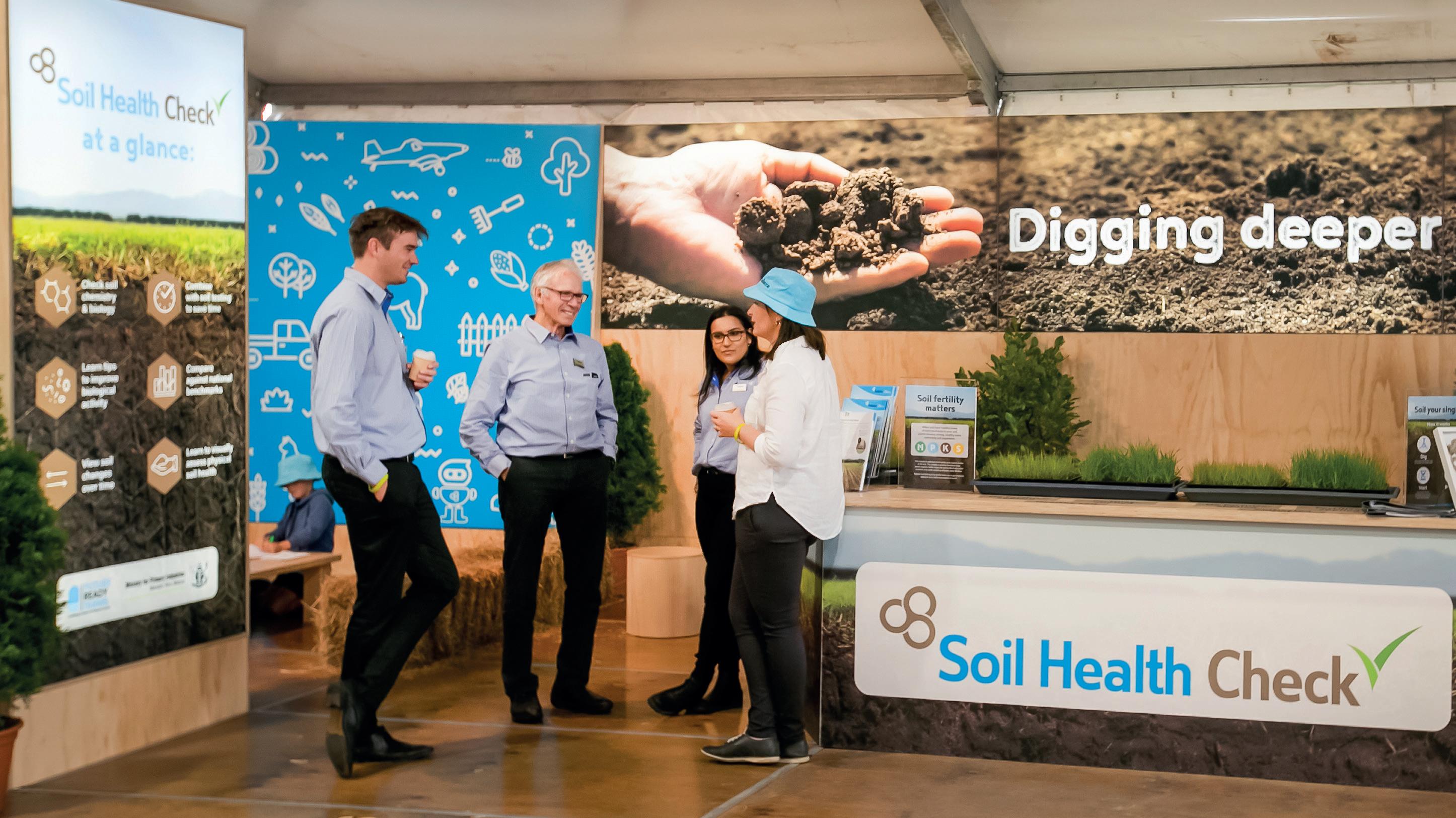
• Our Farm Sustainability Services Team will be there to talk Freshwater Farm Planning and how we can help
• Make sure you visit SealesWinslow at site PC38 for all your animal feed requirements
See you there!
New Zealand farmers and growers are global leaders in sustainable food and fibre.





Our leadership position didn’t happen overnight. Generations of Kiwi smarts and mahi and a deep understanding and commitment of the land have got us here. And generations to come will ensure we remain leaders on the world stage. Farming and growing is our past, our present and our future. You are essential.

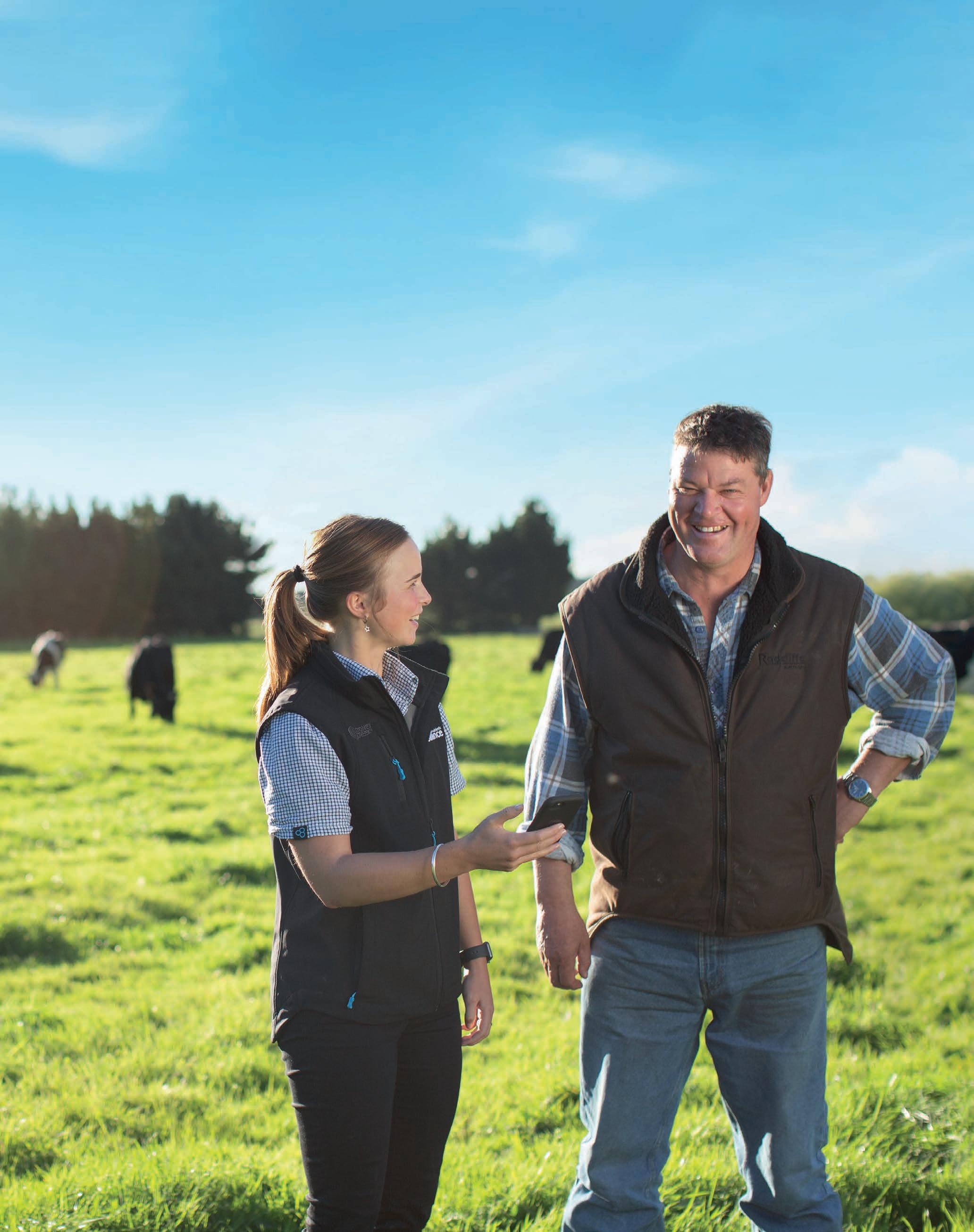





Buy now and SAVE on our entry level cattle crush!
• Anti-slip steel floor
• 1-piece side access gates
• Easy to use anti-rattle slam latches
• Reliable C1000 headbail with a quiet locking mechanism that has a lifetime guarantee!
• Heavy duty hot-dip galvanised construction

• Made in New Zealand!

• Sliding rear gate with auto latch safety lock
• Load bar mounting brackets ready to fit common brands
• Rear handle to open and close headbail keeps operator out of animals flight zone.
Lenta MS1 Crush
Normally $9750 NOW ONLY SAVE $1755! +gst FREE DELIVERY
$7995
Te Pari is 100% family owned and has been operated by the Blampied family for three generations. All Te Pari products are made in our purpose built manufacturing facility in Oamaru, New Zealand and then shipped all over the world.
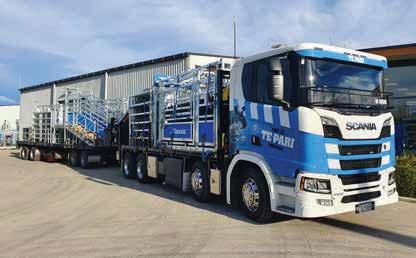
What began on a Manawatu farm in 1979 has grown to be an award-winning, global, New Zealand agri-tech success story.
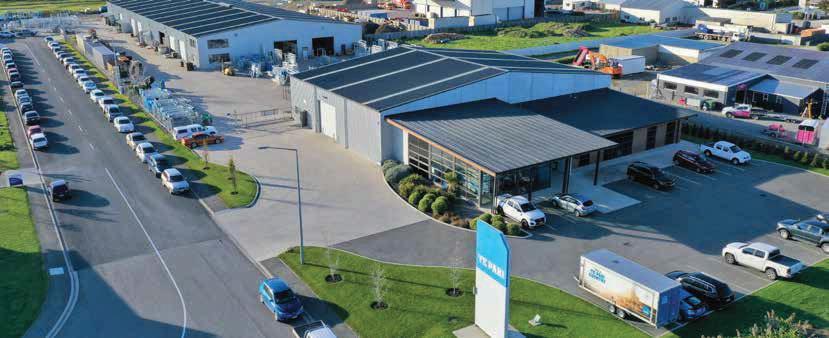

We stand by our products and service! If there ever is an issue with any of our equipment, we are here to help. Our qualified Technical Support team will provide the best service possible with quick responses, advice and on site repairs & servicing to suit your needs.
It’s the Te Pari difference… Trustworthy customer support. OUR PROMISE
Our promise is simple... It works for you or we will take it back. This no nonsense, straight forward approach is what we do.
When you buy from Te Pari, you are buying from the manufacturer, which means we have parts available for all machines new and old and we have a friendly, experienced team with excellent product knowledge.
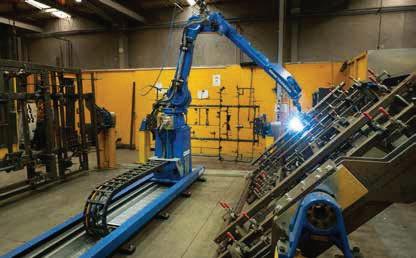
Ready for an upgrade? Talk to the team at Te Pari about trading in your old Cattle Crush or Sheep Handler and upgrading to a new one. Te Pari products are made to last and are easy to on-sell so they are a good investment.
Robot welders in the Te Pari factory help ensure production efficiency & quality control.

• Ideal for restraining calves up to approx 100kg when debudding
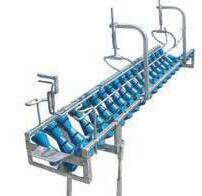
• Strong hot dip galvanised frame

Docking Irons
• LPG fired, scissor-action, fast & easy to use

• Full range of spare parts and repairs are available.

• High wind model best for outdoor docking locations
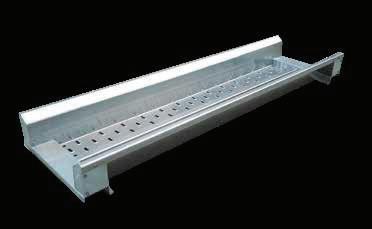

• Size: 2380 x 695 x 230mm
• 1000kg capacity
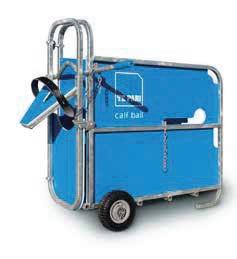

• Battery powered applicator for pour on, oral drenching or injecting
• Reduces hand strain and makes treatments faster and easier.
• 70ml, 14ml or 6ml barrel options available
• Portable, easy to use
• Fits 4-5 lambs at a time
• Tip lambs out of the chute so they land on their legs

• Easy to fit to your cattle yards
• Quality hot-dip galvanised steel
FREE post or rail mounting brackets worth $200!
NEW RELEASE!

Pneumatic Powered Crush with Manual Lever Control
FEATURES
• Pneumatic control of headbail, squeeze and rear sliding gate
• Lever controls mounted on crush frame
• Double sided Parallel Squeeze
• Slam latches on all side gates
• Proportional squeeze & headbail control
• One-piece rear sliding gate
Save labour & increase your efficiency with a fully Automatic Drafting System



FEATURES
• Pneumatic or hydraulic control of headbail, squeeze, rear sliding gate & drafting gates


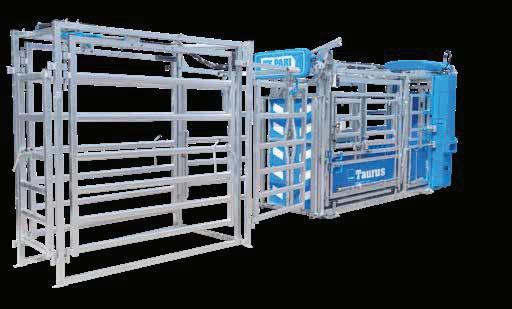
• 5 function radio remote control
• Lockable control console at rear of crush for controls, scale indicator and battery storage
• Double sided Parallel Squeeze
• Fast acting split sliding rear gate
*Terms & conditions apply. See back page for details.
$20,750
Parallel Squeeze for total control
Our most popular all rounder!
FEATURES
• Double Sided Parallel Squeeze provides restraint to animal
• Proportional squeeze control with spring assisted push/pull handle
• Kick-operated vet access gates
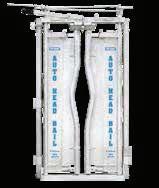
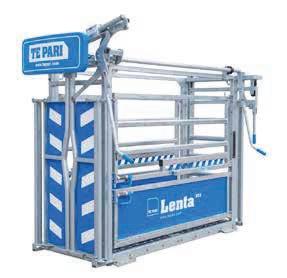


• Anti-slip rubber floor for quiet operation
• Slam latches on all side gates
FEATURES
• Proven C1000 Headbail with quiet locking system
• 2 piece side gates for animal access and out-of-crush drafting
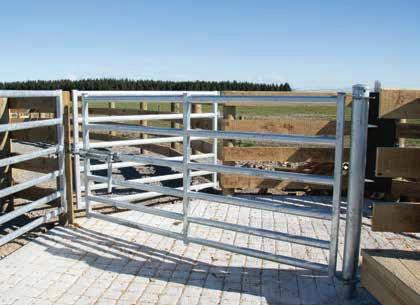
• Anti-slip rubber floor for quiet operation
• Slam latches on all side gates
• Easy to use push-pull handle
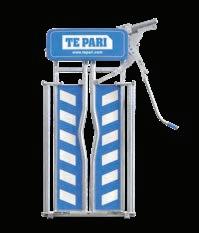
• Lifetime warranty on the headbail locking mechanism


FEATURES
• Hot dip galvanised with anti-bruise oval rails
• Easy to mount with heavy-duty 25mm shank gudgeons
• Range of stock sizes available
• Free delivery to your nearest Mainfreight depot

• Automatic closing gates for easy catching
• Quality hot-dip galvanised steel

Racewell HD3
3-WAY AUTO DRAFTING SHEEP HANDLER
The Racewell HD3 Sheep Handler will automatically weigh and sort three ways.
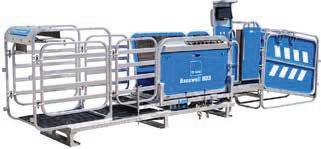
FEATURES
• 3-way auto drafting based on weight or animal criteria
• Multi-function remote to control the clamp/release and drafting gates
• Rugged design made in NZ with hot dipped galvanised steel


• Four adjustable optical sensors to allow the operator to set different catch positions
• Powered by external 12V battery or 230 power connection and compressed air.
• Optional side tilt and front and rear access flaps
FROM $21,500 +GST
Racewell HD4
4-WAY AUTO DRAFTING SHEEP HANDLER
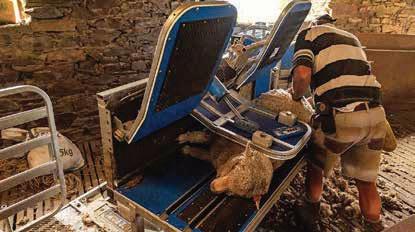
This handler has the same features as the HD3 with the addition of a fourth auto drafting gate.
FEATURES
• 4-way auto drafting based on weight or animal criteria
• Multi-function remote to control the clamp/release and drafting gates
• Four adjustable optical sensors to allow the operator to set different catch positions
• Auto anti-backing hook in the lead up race
• Powered by external 12V battery or 230 power connection and compressed air.
• Optional side tilt and front and rear access flaps
FROM $25,000 +GST
Free Delivery and training for all Racewell Sheep Handlers & Auto Sorters! Ready for an upgrade? Talk to us about a trading in your old sheep handler.
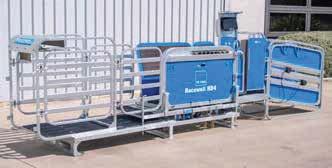
Scan the QR Code to watch the Racewell access flaps in action on our website!

FEATURES
• 3 way auto drafting based on weight or animal criteria
• Weigh crate is separated from the entry gate, reducing weighing interference from sheep in the race.
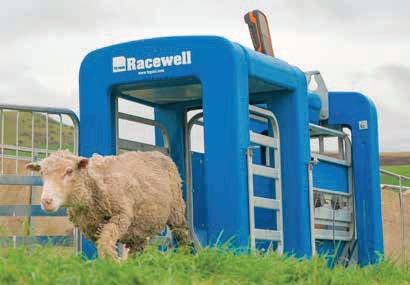
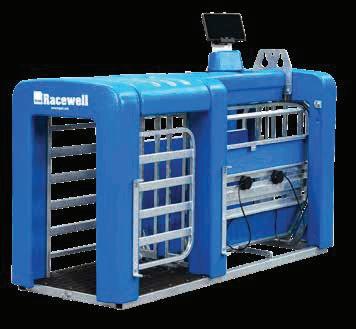

• Plastic covers reduce noise of rams and gates


• Multi-function remote to control entry/exit and drafting gates

• Automatic closing of the entry gate activated by the sensors
• Twin adjustable optical sensors of ‘magic eyes’ for optimum speed and flow
• Self-contained frame for easy positioning on uneven ground
• Manual drafting by sight with remote control
• Rubber lined floor for quiet operation and improved grip
• Integrated overhead load cells eliminate load bar failures and damage
• Rugged, hot dip galvanised construction and a well proven design for long life and high resale value
• Low entry height for improved animal flow

• Mounting position for lead up panels to prevent young lambs turning around and improve flow

• Powered by external 12V battery or 240 power connection and compressed air.
• Centrally mounted controls allow switch access for either side.
$16,995 Normally $18,875 NOW ONLY SAVE $1880

